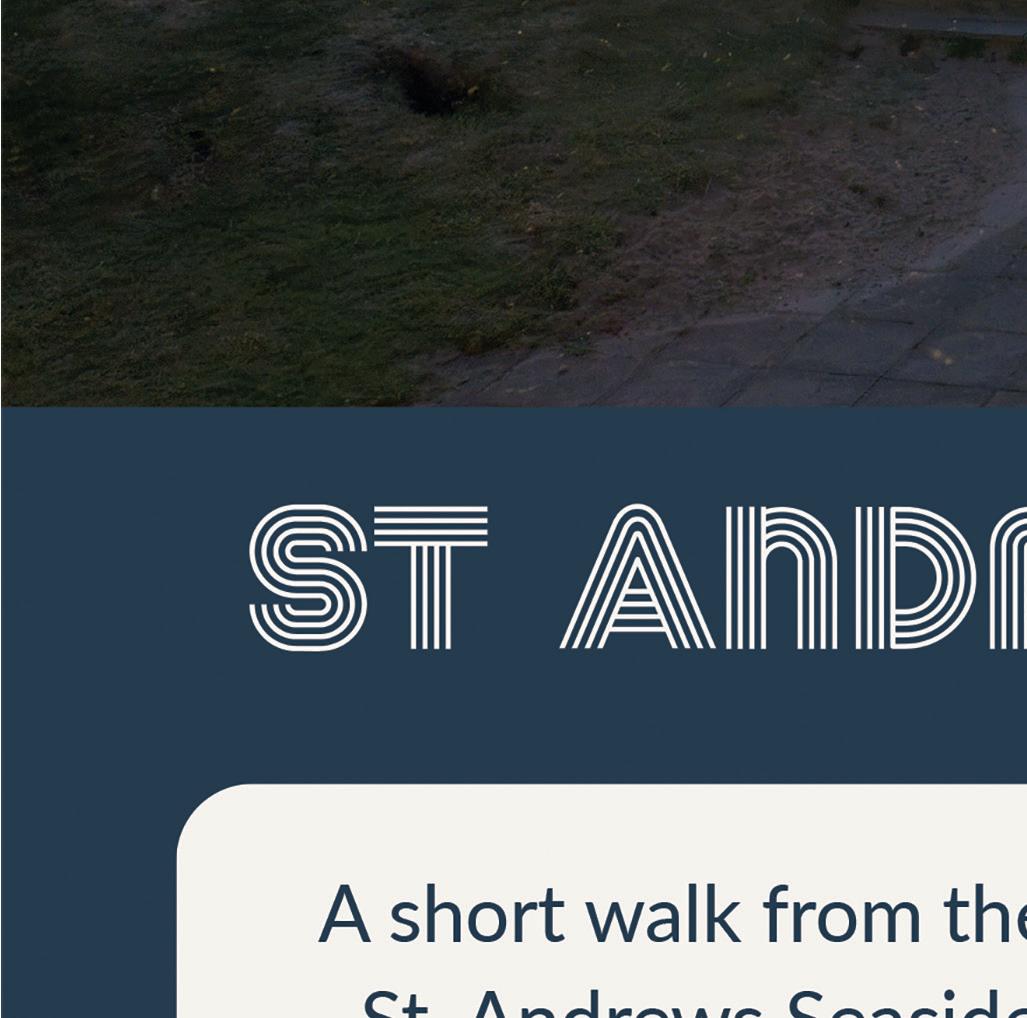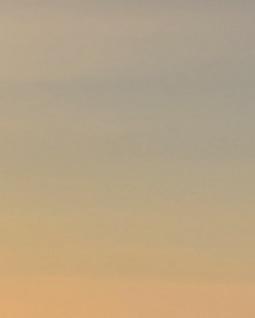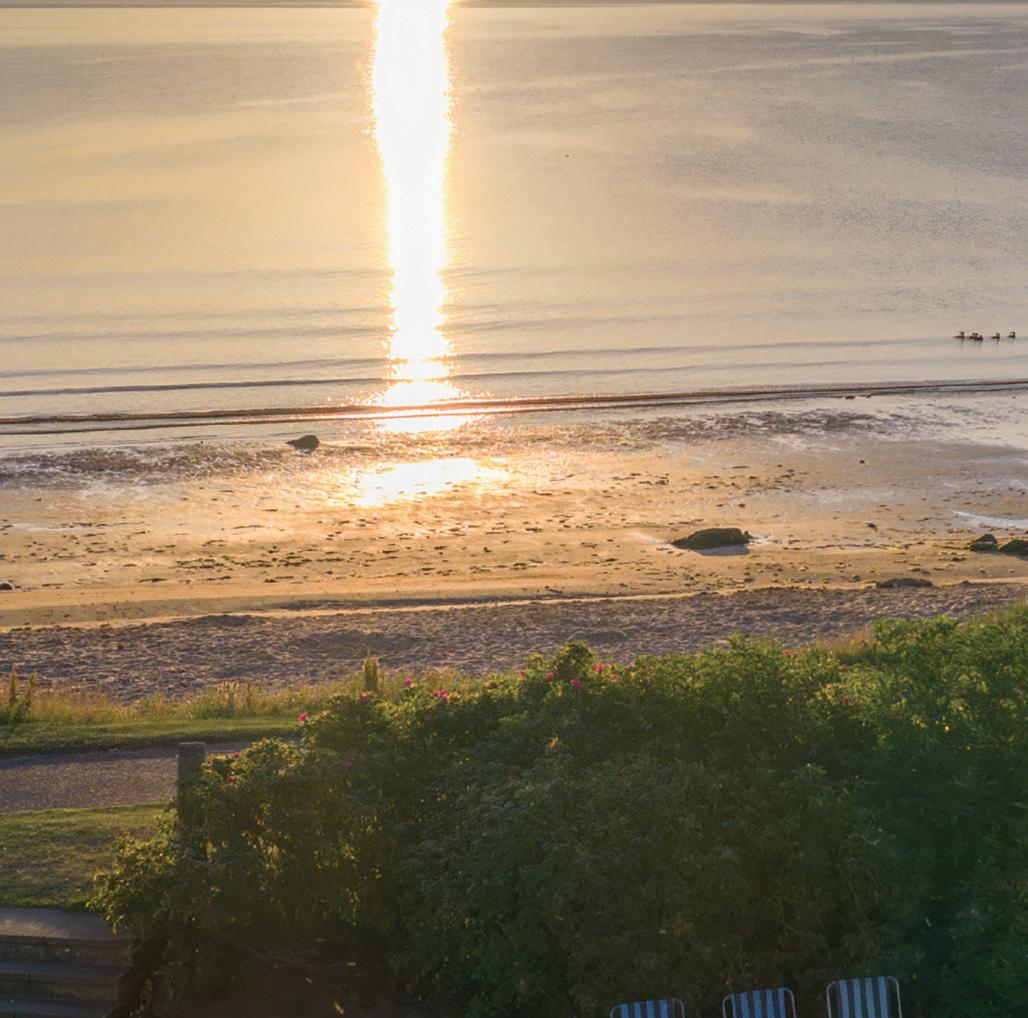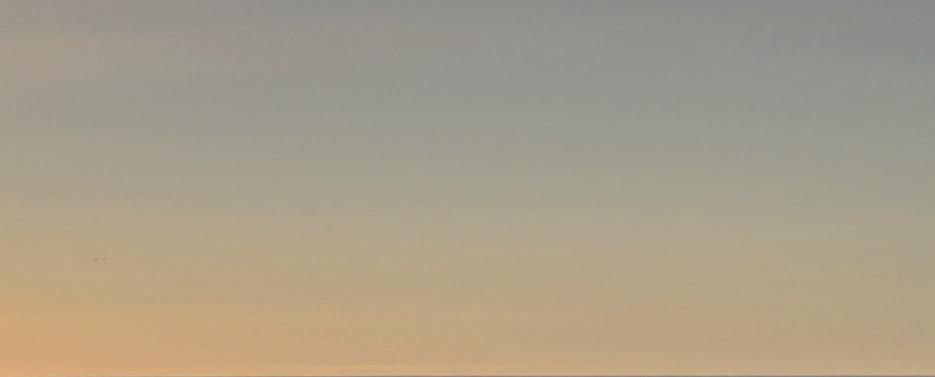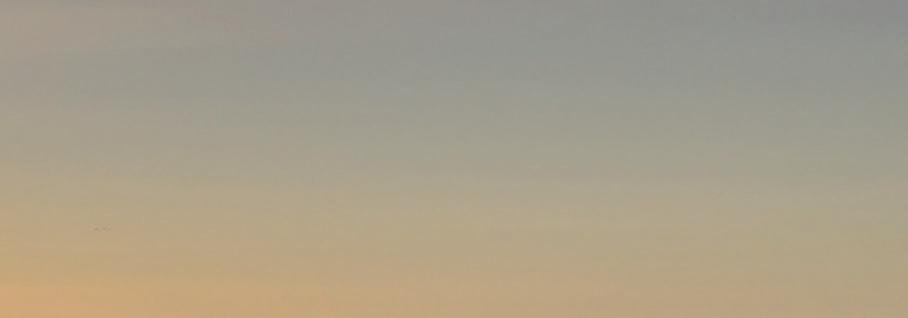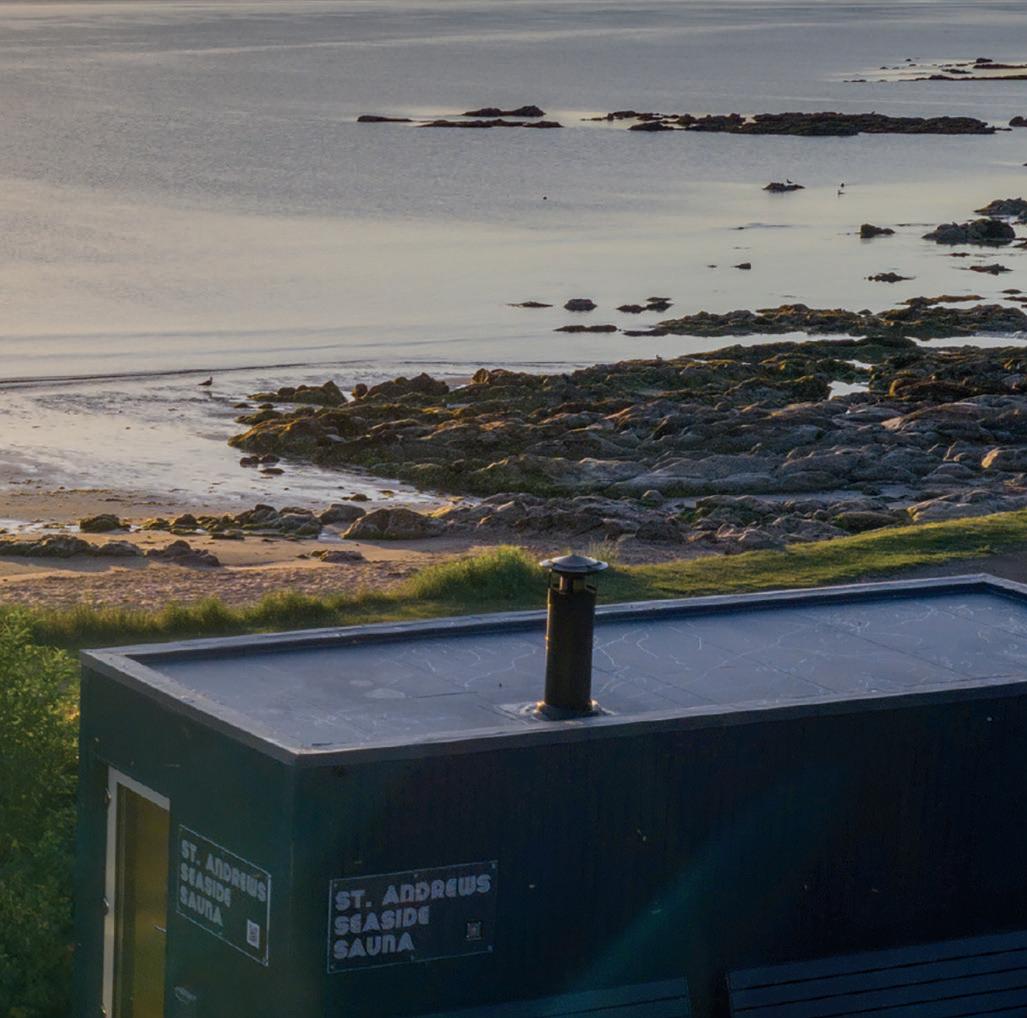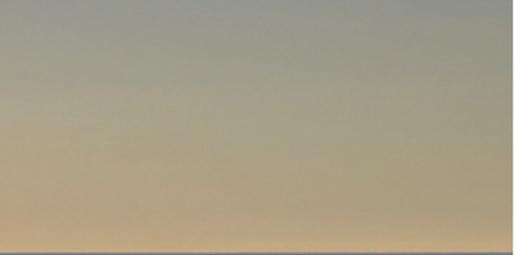




EDITOR: MARIA EBRAHIM
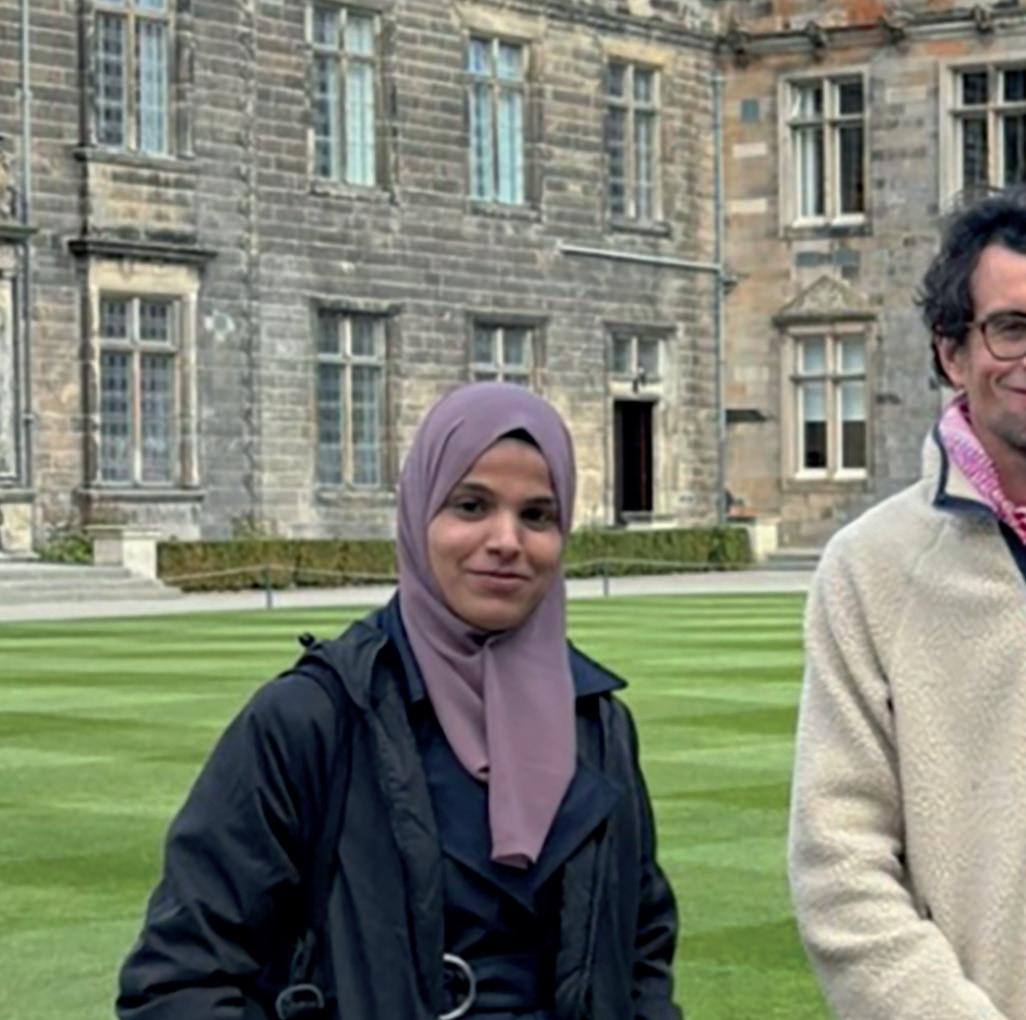


BY RILEY RAAB
Welcome to The Saint — the independent voice of the St Andrews community since 1997. With almost 30 years of hard-hitting investigation, scandal, and impossible crosswords, The Saint’s presence within the University is tested and true. The road to how we became The Saint, however, is as unique, unusual, and resolute as the paper itself.
Read on Page 13.
BY ALEX BARNARD
One of St Andrews’ great merits is the weird and wonderful events it hosts. American tourists dismount their monster-truck tour buses, walking through to Lower College Lawn to hear about the Raisin foam fight. Later, perhaps, they’ll jaunt down to the beach, to imagine students Chariots-of-Fire-ing it into the sea amidst an epic sunrise on May Dip.
Read on Page 21.
St Andrews is delighted to finally welcome two Palestinian scholars who have been trapped due to the ongoing war in Gaza. On Monday 22 September, Abeer Almassri and Heba Al-Tanani landed in the UK from Jordan, where they had medical and visa checks following their departure from Gaza a few days before.
Almassri, 28, who will be studying for an MSc in Health Data Science, was awarded a St Andrews Education for Palestinian Students (STEPS) scholarship in July 2024. For more than fourteen months, she was unable to leave Palestine.
Al-Tanani, 25, a MSc Software Engineering student, was awarded a Higher Education Scholarships for Palestinians (HESPAL) scholarship with the British Council in March 2025.
I have finally arrived in St Andrews, I am overwhelmed with relief and gratitude. My family and I were subjected to the devastating brutality of war and displacement during the last two year[s]. Like so many others in Gaza, we lost our home and many of our loved ones.”
A spokesperson for the NATHALIE HANZLIK-MEECH News Writer
In a statement to The Saint, Almassri wrote: “Now that
Almassri credits “the help of [her] family, the team of the STEPS scholarship [programme], the University of St Andrews, and so many kind hearted people” as being crucial to her evacuation’s success.
Despite the humanitarian crisis in Gaza, evacuation remains extremely hazardous, if not impossible. According to the UK government, formal border crossings out of Gaza have been closed to civilians since 6 May 2024, when the Israeli military took control of the Rafah crossing. The evacuations of Almassri and Al-Tanani, as well as those of 31 other Palestinian university students, was a highly orchestrated operation.
Continued on page 4
BY POPPIENA HORSINGTON
Like many other St Andrews students, I have been known to board a plane. During a typical airport visit, I rigidly stand next to my gate, petrified that the flight has somehow already landed and left without me. To distract myself, I then look around at my fellow jet-setters and am met with a familiar sight...
Read on Page 9.



Ilaria Freccia Editor-in-Chief







































































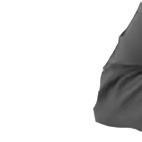



















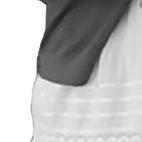







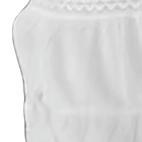
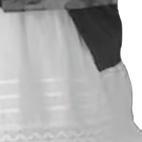













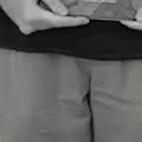

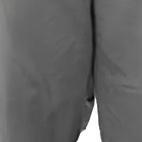







And here it is. Go on. Feel the paper between your fingers, relish in the ink that stains your thumbs, breathe in the smell of the press, stretch your mind with our new crossword puzzle (because we all know what you’re really spending your library time doing) and, most importantly, read the many words on the many pages. And now, welcome to the first issue of the year! It’s taken three days of staff interviews, a week-long editing process, countless pings from the Facebook Messenger app, a myriad of FOIA requests, endless hours on InDesign and way too much time in the Union (and not the fun part, let us be clear) to get it to you. Oh, and a few rewatches of All The President’s (rest in peace, Robert Redford). We obviously couldn’t have done it without our fiercely dedicated Editorial Board, who hit the ground running armed with a series of fresh and exciting ideas for the upcoming year, as well as our two fabulous






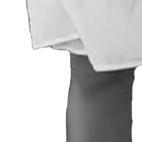

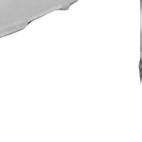
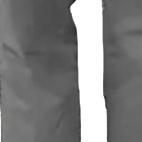

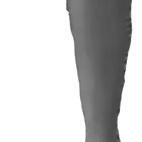


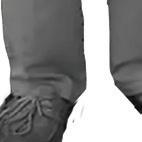
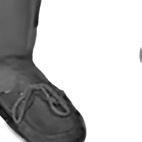
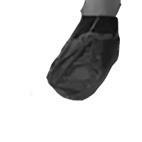






Hannah Shiblaq Editor-in-Chief
Pietro Barbini Business Manager
Maria Ebrahim News Editor
Sam Spendlove Viewpoint Editor
Mrunmayi Kamerkar Features Editor
Luana van Oranje Puzzles Editor
Manraj Gill Photo Editor
Anna-Marie Regner The Relic Editor






























































Deputies, Alden and Arnaz. Thanks to our team’s hard work and commitment, we are so excited to share with you this issue of The Saint, of which we are immensely proud. If there’s anything we’ve learnt in our years writing for and now editing The Saint, it’s that, while St Andrews may be a small town, it’s one which has proved fruitful for the investigative and curious members of our staff, be it reporters, photographers, illustrators, copyeditors, or those on our social media and business teams. To put it plainly, local news is where it’s at — you just have to have the nose for it. And I don’t know about you, but this year is smelling pretty auspicious to us. So as we head into this semester, and take on the hallowed role of Editors-in-Chief, we hope you’ll find yourself loving this paper just as much as we do.





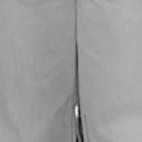












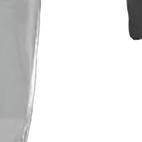
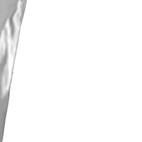








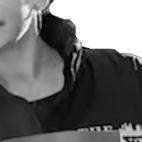
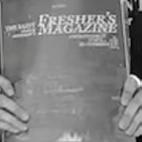


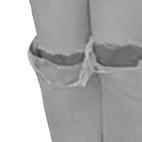





























journalism, but it also begs movie ruin the book? exactly happened gander beyond the
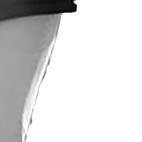

































On that note, not only is Issue 291 full of quality student journalism, but it also begs the question: Does the movie ruin the book? Do some halls dine more lavishly than others? And just what exactly happened at Safeword BOP? So take that gander beyond the fold; you just might find the answers.


find the answers.








Alden Arnold Deputy Editor-in-Chief
Arnaz Mallick Deputy Editor-in-Chief
Lucian Passante Deputy Business Manager
Olga Alonso Blanco Events Editor
Matteo Veratelli Science & Technology Editor
Ben Bagley Sport Editor
Isabelle Holloway Head of Illustration
Finn Lister Senior Copy Editor
Peter Napier Podcast Editor
Zainab Haji Head of Web & Social Media


Hannah and Ilaria




EDITOR: MARIA EBRAHIM
CECILY TODD News Writer
The University of St Andrews’ Student Association will be used as a teaching space for classes for the 2025-26 academic year, a move which also marks a reshuffle in the Union’s structure following the Democracy Review approved last December and implemented this year. The development has prompted questions from students over logistics and communication. Some have voiced surprise and frustration at attending lectures in a venue often affiliated with social gatherings, while others say the location is convenient. The repurposing of Union rooms highlights a wider challenge for the University: accommodating rapid growth in student numbers with limited teaching space. Applications have surged in recent years — including a 15.9% rise in applicants from the United States this year — which increases pressure on University facilities and leaves many students frustrated with the lack of an explanation.
According to the Union’s official website, the building is spread across multiple floors and includes a variety of rooms available for hire. Two larger meeting rooms are located on the middle floor, with a further six smaller meeting rooms on the top floor. The Union lists three rooms specifically described in “classroom” terms: SUN: RM101, branded as a “Classroom Style” room with a capacity of 32, SUN: RM201, as
a “Boardroom Style” room with a capacity of 24, and SUN: RM202, another “Classroom Style” room with a capacity of eighteen.
These facilities are not equipped with audiovisual equipment such as projectors or lecture-capture technology typically found in most university classrooms.
For some, the adjustment to learning in the Union has been challenging. Isabelle Knox, a student in GG4259: Glaciology, described her experience attending classes in SUN: RM202, a room designed for fewer students than were enrolled.
“I actually couldn’t believe how small the room was.”
“I actually couldn’t believe how small the room was,” she said. “The lecturer explained we were located in the Union because the University has become so popular, but I do not think lectures in the Union is a viable solution. The room was uncomfortably crammed, and there weren’t enough desks for everyone, and so my peers had to sit with their laptops on their lap for three hours. I’m lucky to be Scottish and get free tuition, but if I had to pay for tuition, I would not be at all happy nor satisfied.”
Other students echoed concerns about facilities and teaching conditions. Pippa Ashworth, a third-year Philosophy student,
shared her perspective after finding her twohour lecture relocated to the Union. She described feeling “disappointed”: “The room is small with many chairs with attached desks shoved into it. All the chairs are not placed in rows but in unorganised clumps around the room, creating an awkward divide between everyone in the class and [which] makes it difficult to facilitate group discussions.”
Ashworth also told The Saint that “the room also has many exposed pipes and therefore echoes a loud noise [...] the whole class tends to become distracted, taking away from lecture time.” Ashworth added: “I feel that I am unable to pay attention to the lecturer when I am thrown into a learning environment that doesn’t feel thought out or considerate of a student’s academic needs,” she said.
The University of St Andrews’ website specifies that undergraduate students are required to purchase their own printing credits, aside from a small credit provided at the beginning of their first year. Without functional audiovisual support in Union rooms, Ashworth said that she and her peers were encouraged to print out the slides to follow along during classes. This has prompted concern from students about the financial and environmental implications, relying heavily on printed materials in spite of the University’s sustainability commitments.
Yet not all students have experienced these difficulties to the same extent. Despite the unusual setting, some say the Union offers advantages,
particularly in terms of central location.
Vienne Brett, a fourth-year student, reflected on the situation: “I honestly don’t mind where I have my classes. It doesn’t change much for me, but it was definitely strange being in the Union for my seminar. However, as it’s near the library and the quad, I actually found it convenient.”
While it is not unusual for universities to repurpose social or conference spaces as temporary classrooms, the lack of official communication about the change has left students uncertain as to whether the move to the Union is a stopgap or a more long-term plan.
The Saint reached out to the Union President of Education, Emily Bannister. “The Students’ Association is committed to ensuring that students have access to suitable study spaces in appropriate locations, and we are enjoying welcoming more students into our building,” she said. “The new Executive Officers have made considerable efforts to introduce these additional study spaces while minimising the impact on student activities. We will continue our discussions with the University to identify a way forward that complements the requirements and opinions of our students.”
At the time of this article’s publication, the University had not provided a formal statement on why the Union is being used to teach academic classes during the 2025-26 year, or whether this will continue throughout the semester.
ELSPETH SCHOONOVER &
MARIA
EBRAHIM
News Writer & News Editor
UK officially recognises Palestinian statehood
The UK has formally recognised Palestine as a state. Prime Minister Sir Keir Starmer made the announcement on Sunday 21 September, stating that the aim of doing so is “to revive the hope of peace and a twostate solution.” Starmer said the UK now joins more than 150 countries in recognising Palestinian statehood, calling it “a pledge to the Palestinian and Israeli people that there can be a better future.” The UK’s declaration comes alongside similar announcements from Canada and Australia on the same day, with France following on Monday
22 September. In response, Israeli Prime Minister Benjamin Netanyahu condemned the declaration from the respective countries. In a video statement, he warned that after the “terrible massacre on October 7,” recognising Palestine was “a huge reward to terrorism.”
Starmer expected to announce new Digital ID Plan
As of Thursday 25 September, Prime Minister Sir Keir Starmer is expected to announce plans for the introduction of a UK-wide digital identity scheme, referred to as the “Brit-Card.” While some online routes for verification have existed since 2022, a nationwide digital ID would bring a major expansion to the system, designed to modernise identity checks through smartphone technology which will be able to confirm an individual’s right to live, work,
and access services in the UK. The Labour Party has long dismissed the idea and even rejected it under Tony Blair, but mounting pressure over illegal migration has prompted ministers to show support for the scheme. The Liberal Democrats have opposed the plans, writing in a post on X, “Liberal Democrats cannot support mandatory digital IDs. People shouldn’t be criminalised just because they don’t want to hand over their private data.” Conservative Party leader Kemi Badenoch was also critical, referring to the plan as “a desperate gimmick that will do nothing to stop the boats [...] This is a throwaway conference announcement designed to distract attention.”
Scottish Housing Bill to pass with partial rent controls
Scottish Parliament is debating legislation
that could lead to rent controls, just over a year after councils Argyll and Bute, Edinburgh, Fife, and Glasgow declared “housing emergencies.” The proposed Housing Bill aims to cap rent increases and strengthen tenant protections amid mounting concerns over affordability due to a national housing crisis. The Scottish Conservatives have criticised the proposals, stating that they will vote in opposition. The Labour Party has indicated its support but is calling for amendments, while the Scottish Greens have pledged full support. In addition to addressing changes to the private rentals, the Bill will also impose laws on public authorities to prevent homelessness. The new legislation extends councils’ duty to act from two months to six months before homelessness is likely.
University commented on their involvement in the evacuation operation: “It has been a far from easy task securing [the students’] departure from Gaza and involved a coordinated campaign led by St Andrews Public Affairs team working with the UK Gaza Scholarship Initiative, other Scottish universities, STEPS Trustees, and the Scottish Government, with the aim of generating support amongst parliamentarians, lobbying the UK Government, and securing media coverage highlighting the need for all students with fully funded places at UK universities to be safely evacuated and guaranteed entry to the UK.”
They continued, “Following a high-level security process, 33 students left Gaza in the early hours of Wednesday 17 September and arrived in Jordan later that evening. Medical and visa checks were carried out under the direction of the British Embassy. The students made the final leg of their journey to the UK on Monday 22 September.”
“This activity has taken months of hard work and commitment by staff across the University who were determined they would do all they could to support these
students,” added the spokesperson. “St Andrews is delighted to finally welcome two Palestinian scholars who have been trapped due to the ongoing war in Gaza.”
The University has historically supported the academic journeys of Palestinian students. Since 2011, the University has agreed to waive tuition fees for two Palestinian Master’s students annually, provided the STEPS programme can raise all other expenses. Over the past fourteen years, STEPS has managed to cover travel, accommodation, and maintenance expenses, amounting to a minimum of £15,000 per student for over twenty Palestinian students.
According to Dr Patrick O’Hare, Chair and trustee of the STEPS scholarship programme as well as an anthropology lecturer, the students’ arrival in St Andrews was nothing less than “a small miracle.”
Dr O’Hare described his formative involvement with the programme in an interview with The Saint: “My story is that I was part of an occupation of Lower College Hall as a student back in 2009 […] We [...] made several demands on the University [involving] cutting ties
with Israel, Israeli institutions, Israeli providers, [and] providing scholarships for students from Gaza, [as well as] sending educational equipment over to Gaza [...] The fee waiver for students from Palestine [...] came out eventually from that.”
Dr O’Hare recalled feeling “sympathetic to Palestine [and] sort of helpless in the face of what was going on.” It seemed to him as if “nobody seemed to be doing anything at St Andrews” and so decided to “get a bunch of people together, [...] take some action, and see if we [could] mobilise people.”
Regarding the situation in Gaza in 2009, he said “a lot pales in comparison to what has happened since.” According to Dr O’Hare, when the conflict in Gaza started in 2023, the University agreed to double the amount of scholarships that it was going to offer. This year, there were five students: “two of them originally from Gaza — but they have come via Egypt — two of them from the West Bank, and [Almassri] who has just arrived from Gaza,” Dr O’Hare explained.
Dr O’Hare stressed that the challenges faced by these students do not disappear upon arrival in St Andrews. STEPS students
have to tackle “culture-shock aspects, the way that the courses are taught, the essays they have to write.” Moreover, being so far away from family, particularly those still in Gaza, “obviously adds a whole layer of […] anguish, difficulty, and pain.”
Dr O’Hare strongly believes that Almassari and Al-Tanani will need “time to gather themselves and rest and process everything they have been through.”
In response, a spokesperson of the University told The Saint: “During their time here they — like all other sanctuary scholars — will be supported during their studies. STEPS offers the Palestinian scholars a warm and welcoming community where they are supported by trustees and fellow students.”
Almassri and Al-Tanani described feeling hopeful for their futures at St Andrews.
“It has been a long and difficult journey full of uncertainty and loss, but also [of] hope,” Almassri said. “I am determined to make the most of this opportunity, to grow academically and personally, and to use my education to contribute positively in the future.”
On 15 September 2025, construction work began across 38 buildings for the St Andrews Rooftop Solar Project. The Solar Project, announced in September 2024, marks the University’s latest step towards its target of becoming the UK’s first carbon net-zero university by 2035.
The scheme is funded by lowinterest loans from the Scottish Funding Council to support capital investments in advancing university net-zero plans.
The University told The Saint, “The main project objectives are to maximise potential solar installation at the University from available spaces, increase energy security by reducing the impact of future utility cost rises to the University, and to standardise the solar specification for the University.” This news comes as non-domestic average electricity prices have risen by over 90% in the last five years, according to figures from the Office of National Statistics.
The University expects the project to generate approximately 1,100kWp of solar, accounting for roughly 4.8% of annual electrical consumption, saving 200 tonnes of carbon dioxide per year.
This marks the third collaboration between the University of St Andrews and Vital Energi, building on the success of the award-winning Eden Park Campus Project and the St Andrews NonDomestic Energy Efficiency project. These two projects combined have led to carbon dioxide emissions reductions of approximately 7,900 tonnes.
Amid heightened financial strain for UK universities, The Financial Times reported that banks are pressuring institutions to restructure loans by
invested in wind and solar yielded 2.5 times more energy output than a dollar spent on the same technologies a decade prior.”

securing them against easily liquidated real estate, in case of credit default.
Adding to financial concerns, the Institute for Fiscal Studies has predicted a decline in international student fee income for Scottish universities, citing global volatility, rising tuition fees and tougher immigration laws — a “perfect storm for Scottish universities.”
Despite these financial circumstances, renewable projects — especially solar — are generally viewed as a responsible investment for organisations. In 2023, the International Energy Agency reported that “each dollar
The St Andrews Rooftop Solar Project comes during one of the most intensive periods for construction
St Andrews has seen, with the walking route between Younger Hall and David Russell Apartments (DRA) passing nine active sites.
One DRA resident told The Saint that they were “wrenched from sleep at 9am [during] Freshers’ Week by the sound of footsteps on the roof.”
In spite of the inevitable disruption, in a letter to the local community, the University stated that “measures are in place to reduce noise” and that “standard working hours will be Monday to Friday, 9am to 5pm,” with no anticipated weekend work.
A University statement obtained by The Saint on Friday 26 September confirmed that “the project is on schedule to complete as set out on the capital projects site.”
A controversial aspect of the project has been the unannounced placement of four PIS Armadillo security cameras near DRA. These cameras are operated by DeterTech, a private security firm and have been installed to guard the equipment
when contractors are not at the site.
Under the University of St Andrews CCTV Policy and UK General Data Protection Regulations, the University is obliged to obtain a Data Processor Agreement and conduct a Data Protection Impact Assessment prior to appointing third parties to maintain CCTV systems.
The Saint asked the University to confirm whether these documents had been obtained, to which a spokesperson responded, “It would be the contractor who is responsible for meeting the provisions of UK GDPR and not the University [...] The site is currently the contractor’s domain and responsibility until the work is completed and the site returned to the University.”
The University spokesperson added that “the mobile security towers operated by DeterTech are for the purpose of intruder detection to protect the contractor’s equipment and resources during solar panel installation work. These devices are widely used across the construction sector.”
“Recording is activated only by motion sensor and only when the contractor is not on-site,” the spokesperson wrote. “The devices operate with a limited field of view of 2.5 metres. They face inwards towards the site equipment, so there is no scope for invasion of privacy for any resident of DRA [...] The only chance of students being identified by the sensors would be if they entered the fenced-off construction site.”
The Saint has issued a Freedom of Information Request to the University regarding the Data Processor Agreement and Data Protection Impact Assessment.
IONA CARRUTH News Writer
On 9 September, during the University of St Andrews’ annual Freshers’ Fayre at the Student Union, about 80 people — including students, local residents, and Rector Stella Maris — gathered outside for a pro-Palestine protest. The demonstration, organised by St Andrews Students for Justice in
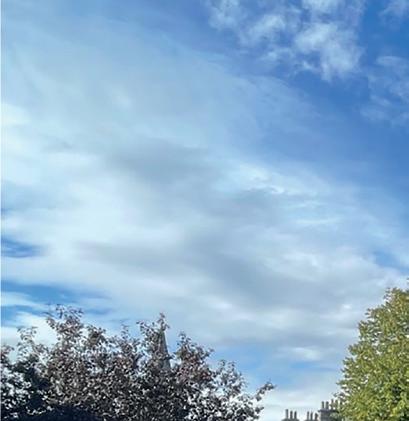

Palestine (SJP), was promoted on the group’s Instagram with the slogan “No Freshers As Usual During Genocide.”
SJP lists two main goals on their Instagram: The first, for the University to divest from the company Siemens, which they state provides surveillance infrastructure and energy to Israeli settlements, a contribution they describe as illegal under international law.

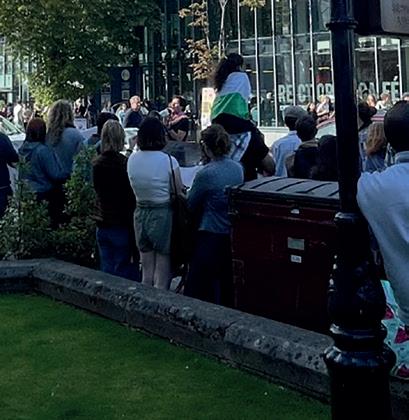
The second goal is for the University to cut ties with the Hebrew University of Jerusalem. The University and College Union of St Andrews issued an open letter in August calling for the University to end its links with the Hebrew University of Jerusalem and similar institutions. This letter, which SJP also shared on Instagram, remains open until mid-October for students and staff to sign.
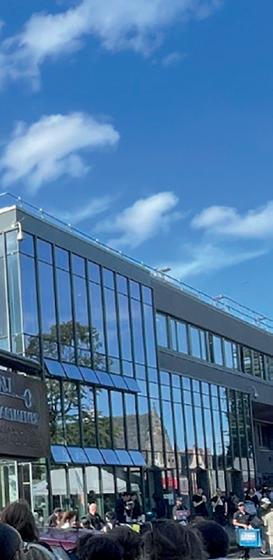
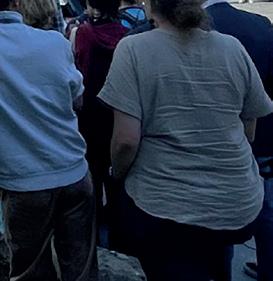
The Saint reached out to the lead organiser of the protest, fourth-year student Sage Wilson, who stated that “the student movement has been in intermittent communication with the University about our demands over the last couple of years — demands which have stayed relatively the same.” She added, “Students for Justice in Palestine (with rep[resentatives] from other societies) are currently setting up meetings with the University.”
“This is the second time the Palestine movement has held a demonstration in a more public-facing area of St Andrews, and we had students stood watching from outside the Union and listening/clapping to the speeches, some even coming to join us, members of the public clapping as they walked past, affirmative car honks,” said Wilson.
Wilson added that “there is certainly a thread of anger or sadness woven through protests, particularly amplified when our speakers touch on the devastating events we are faced with [...] If we normalise public attention on this issue, more people will talk about it and perhaps be encouraged to take part in collective action against institutional complicity.”
“For the University to show that they are taking the voices and opinions of their students seriously, they must disclose their
current financial investments (the July 2024 financial statement wasn’t released until early this year, and again they are late in releasing the 2025 statement) — and divest from companies on the BDS (Boycott Divestment, Sanctions movement) list, as well as from Israeli academic institutions whose scholarship helps to further the apartheid system,” Wilson stated.
Alice Hodges, President of Union Affairs, spoke to The Saint about how the Union was helping represent student voices on the current Israel-Gaza war: “Last year, our Campaigns & Impact Co-ordinator and the Director of Wellbeing & Equality at the Union developed a Student Activism Guide, which, amongst other things, covers safety, practicalities, and the legal context around protests in Scotland and the UK more widely.” The President continued, “As Your Union, we are committed to supporting students to make their voices heard through peaceful protest or other forms of activism.”
The Saint contacted the University for comment regarding the student-led protests on demands for divestment and cutting ties with the Hebrew University of Jerusalem, but received no response by the time of this article’s publication.
Photo by AleX Milton
ROWAN HOOVER News Writer
The University of St Andrews has once again cemented its reputation for academic excellence, ranking first in Scotland and second in the UK, according to the latest Guardian University Guide 2026, published Saturday 13 September.
St Andrews is one of six Scottish universities to feature in the UK’s top 30, alongside Edinburgh, Aberdeen, Strathclyde, Glasgow, and Dundee. Several of the University’s schools also achieved national recognition, with Mathematics, History, Art History, and International Relations all ranked first. Seventeen subjects were also placed in the top ten, including Economics, Film Studies, Psychology, Management, Chemistry, and a plethora in the School of Modern Languages. Geography also placed second, as well as Philosophy, Physics, Anthropology, Classics, Computer Science, and Earth Science, with English placing third.
The Guardian Guide ranks universities according to student satisfaction, spending per student, student-to-staff ratio, and career prospects. St Andrews first broke the longstanding Oxbridge duopoly in 2019,
unseating Oxford to take second place nationally. The University reached the top spot in 2022 and maintained its position in 2023, cementing its reputation for outstanding teaching and student experience.
In a separate ranking, The Times and The Sunday Times Good University Guide 2026, published Friday 19 September, St Andrews was again confirmed as Scotland’s top university and second in the UK. Eight subjects achieved first place nationally: Art History, Chemistry, English (joint top with Oxford), French, History, International Relations, Physics, and Social Anthropology. For the first time in the Guide’s 32-year history, Oxford and Cambridge both fell outside of the top three, with the London School of Economics (LSE) ranking first and Durham University third.
Emily Bannister, President of Education at the Students’ Association, expressed her pride in the University’s performance: “This prestigious recognition reflects the dedication of our staff, the excellence of our academic provisions, and fundamentally the outstanding achievements of our students.”
Bannister emphasised the importance of collaboration between the Union and the institution: “I am particularly grateful for the strong partnership between the Students’
Association and the University, which plays a vital role in creating a supportive and enriching environment for our students.”
Highlighting the University’s teaching and support systems, Bannister noted, “We are supported by outstanding staff who have an unwavering commitment to offer an exceptional academic experience. Our success is further built on strong partnerships with students; we are proud to support and train over 400 academic representatives who are treated as partners in shaping the academic environment.”
Looking ahead, Bannister stressed the need to maintain excellence. “Our institution must not become complicit,” she said. “Students deserve the very best spaces in which to study and learn, and we should continue to work to be an attractive destination for prospective students through embracing the changes brought by artificial intelligence and the evolving digital landscape. To stay ahead in the ‘Stoxbridge’ race, the University of St Andrews must ensure our historic legacy is complemented through embracing innovation.”
Alice Hodges, Students’ Association President of Union Affairs, also celebrated the University’s unique culture and achievements: “St Andrews is proof that
“St Andrews is proof that excellence doesn’t have a single definition.”
excellence doesn’t have a single definition. Every student here shapes a different experience, from world-class teaching and research to unique traditions, creativity, and community within our Union. What makes us special is that these experiences don’t compete, they build on one another, and together they push all of us to achieve more. This recognition is a reflection of that shared spirit of collaboration and ambition — what our motto ‘Ever To Excel’ truly means.”
Alastair McCall, Editor of the Daily Mail Guide, also praised St Andrews’ longstanding excellence in a statement to the University: “St Andrews is one of the serial winners in British and global higher education over the past twenty years [...] That might seem strange to say for an institution that has survived for more than 600 years: it has clearly been doing something right for much longer than that.”
ANNABELLE MACKEY News Writer
T-Squared Social, the new development within the building that once housed New Picture House (NPH) Cinema, is progressing with renovations despite delays and continued controversy over ownership and the loss of St Andrews’ only cinema. The multi-purpose luxury sports bar was initially projected to open in Spring 2025, but with construction still underway — and no reestimated projection from real estate partner NEXUS — there remains uncertainty as to what lies ahead for the venue.
The brand, founded by Tiger Woods and Justin Timberlake with investment from the NEXUS Luxury Collection, launched in Midtown Manhattan in September 2023. Prior to NPH Cinema’s official closure on 19 September 2024, the cinema had consistently retained an occupancy of about 10% capacity at any given showtime. The brand’s St Andrews expansion involves converting much of the NPH Cinema into a luxury sports bar with golf simulators, a lounge, and a redesigned cinema space. Two of the three screens will remain, reducing capacity from 700 to 350.
Signs displaying ‘Justin Timberlake x Tiger Woods’ across the sides of the building were installed this week.
The ownership transition has sparked mixed reactions from students and locals amid concerns that small-business buyouts prioritise tourists over residents. In 2023, former student Ash Johann Curry-Machado launched a petition, “Save the New Picture House Cinema,” gaining 12,371 supporters.
The St Andrews Film Society has been among the strongest opponents of the T-Squared Social development. President Lily Burton told The Saint, “As a society, we campaigned tirelessly to save our cinema a couple years ago. The club reached out to us this summer to ask if we wanted to do social events there but Film Soc[iety] will not be having anything to do with the venue once it opens and will continue to use the Dundee Contemporary Arts (DCA) as our go-to venue.”
“We really care about student arts experiences in St Andrews and [...] over the years they have been systematically stripped from us in favour of business opportunities,” Burton added. “Film Soc’s role in St Andrews is important as a social [...] space, but now [...] I also feel in the shadow of our cinema being refurbished to prioritise golfers. We have a job to make a loud statement that we as a student body will continue to ensure our own access to arts if the [University] and town will not protect that access for us.”
22 September in St Salvator’s School II.
“Most people are mourning it, because they can’t go see [...] the latest blockbusters in the cinema.” said Eglinton. “People didn’t show up to see the smaller movies, the smaller films. And that’s what really
cinema’s future. “During Fresher’s Fayre, when [we were] setting the table, the most common question we actually got asked was, ‘Do you know when the cinema is gonna be open again?’, ‘Do you know what’s going on with the cinema?’” said Eglinton.
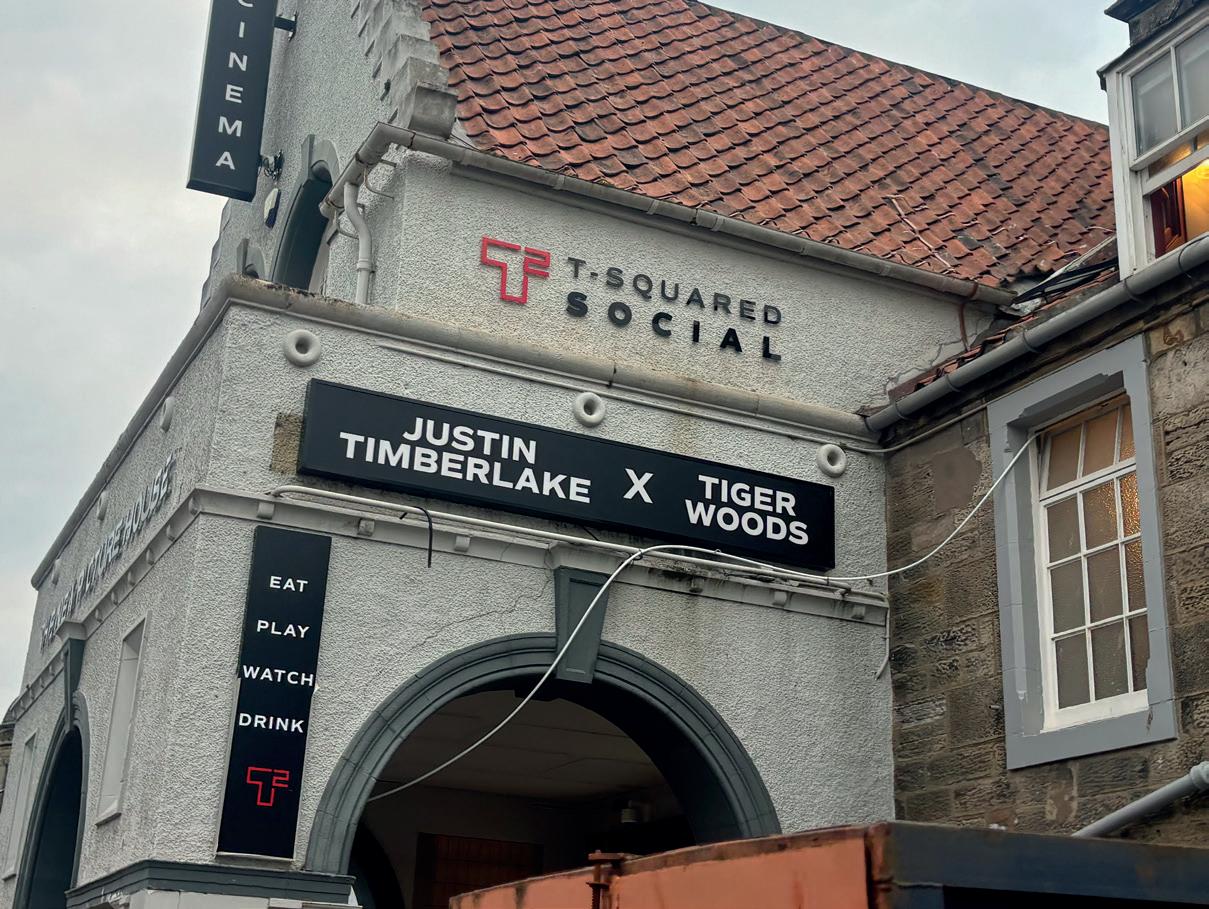
keeps the cinema alive.” Eglinton added: “it’s really up to [...] the students and the locals to keep something like that alive. Unfortunately, it’s a for-profit business. We fill the gap in a way, but we’re just two, maybe three screens a week [...] we’re not gonna have the newest movies.”
For its twice-weekly screenings, the Film Society will continue using the DCA after T-Squared Social opens, though the society stresses that this does not replace the loss of a dedicated town cinema.
“Ironically, I think the actual cinema section of the NPH was bigger than the one in the DCA, [...] especially the main screen with the two floors,” said Laredo.“But [...] you lose the [...] thing of people just going to the cinema […] You don’t get that feeling of walking into a cinema lobby, and [...] there’s the popcorn machine on one side, and the ticket booth. When you walk in and someone checks your ticket, it’s a bit more like [when] you go to a museum where there happens to be a cinema.”
“When you went to the cinema here in St Andrews, you would always recognise people — people from your classes, from societies, people who you see there every week. When you go [and see a film, it was just that nice feeling of ‘I could chat to someone.’ That’s just completely lost [from] the town,” Eglinton told The Saint
Film Society Events Manager Lewis Eglinton and Secretary Luke Laredo both reminisced on their NPH Cinema experiences during a showing of Rocky Horror on
Laredo shared similar sentiments: “Practicalities aside, it’s a huge loss for the town, because I don’t think this new bar [will] add anything to the town that it didn’t already have, whereas a cinema really does.”
The society has also received a wave of enquiries, reflecting wider concern over the
As Laredo put it, “One cinema over none is way better than 35 pubs over 34.”
The Saint sought comment from NEXUS and the T-Squared Social affiliate. However, no response was received before the time of this article’s publication.
TUANA KARDAS News Writer
Students at Agnes Blackadder Hall have reported consistent problems with laundry facilities in the opening weeks of the academic year, with malfunctioning machines, lost payments, and long delays causing frustration.
Several students reported that the Washnet app system, which manages bookings and payments, has been frequently failing. Payments have sometimes been processed without a cycle starting, while machines have occasionally displayed error messages during the washing process.
Students gathered around the ABH lobby, trying to find a “sweet spot” where the Wi-Fi would work, complaining that the Washnet app often disconnected within the laundry room, forcing them to reconnect elsewhere. Some students even reported
waiting up to four hours before managing to do a load of laundry. Others recalled that students dumped out clean clothes onto the floor, rushing to secure a machine.
Malika, a first-year in ABH, said, “I had trouble getting it to start despite booking for it. It cost £3 — enough for a cappuccino.”
Another student, Luise, described delays: “Each step did not load for ten minutes,” while another student Melis recalled finding her machine in error mode when she returned, stating “I had to drown out all of the water out of my clothes.” One student even noted losing as much as £20 through failed cycles. While dryer charges were eventually fully refunded, the £3 washing fees were not, with even partial repayments taking more than a week to process
One student even recalled losing as much as £20 through failed cycles. While dryer charges were eventually fully refunded, the £3 washing fees were not, with even partial repayments
taking more than a week to process.
When students sought help at reception in the hall, staff explained that the machines are operated by a private company, “Washnet, powered by Washstation,” and that hall staff have a limited ability to assist with laundry issues.
Residents in other halls did not report these same problems. “It has not scammed us yet,” said Matej, a first-year in David Russell Apartments. Abina, a student living in University Hall, “did not have any issues.” Luisa, living in McIntosh Hall, added, “They have been fine, just one machine does not work.”
Yet Ali, a first-year in St Salvator’s Hall, noted, “We do not have enough laundry machines for Sallies. One of the dryers has been broken for a week and Washnet can be difficult to upload money to [...] It is so expensive.”
In a statement to The Saint, the University confirmed that they were aware
of the issues in ABH. However, it claimed that the recent problems were “not related to the laundry but the WiFi provision and the level of demand over the arrival week.” IT Services have been made aware and “are looking into it,” while staff have been asked to check and report broken machines. Although no widespread issues with the app have been recorded, the University acknowledged “unacceptable delays in repairing machines in at least two halls,” which have been escalated to Washstation.
The University spokesperson said that students are encouraged to “report all issues directly to Washstation, who can be contacted via email, phone, or Whatsapp.” If no response is received, they are required to notify hall staff, who can then pass the complaint along.
Students can report issues directly to Washnet via service@ washstation.co.uk or 0800 141 2331.

EDITOR: SAM SPENDLOVE
GAYATRI CHATTERJI
Viewpoint Writer
As Fresher’s Week kicked off, walking down the street, I came across a poster advertising a pro-Palestine demonstration. I felt so disappointed that a meeting with a professor was scheduled for the same time. But when I left said meeting and walked down Market Street across from the demonstration, it was so sparsely attended that I had barely noticed it as I passed by. This seemed beyond bizarre and unprecedented, given how the conditions in Gaza deteriorated so substantially over the summer. The state of affairs has gradually stopped being treated like a political issue and has become, in a way that is utterly undeniable, something increasingly seen for what it is: an unacceptable humanitarian emergency. A rush of shame fell over me in recognising the degree of comfort and non-confrontation we seem to enjoy in the Bubble.
Checking the news has consistently felt sadistic and dystopian, with a relentlessness that almost seems com- ical. We’re all just waiting for the next thing in today’s utterly ludicrous politics, and humanitarian crises that only get worse, driving us all into a simultaneous sense of sickness and desensitised helplessness.
Assassination attempts, some successful, pervade American politics. This is symptomatic of a political climate which is perhaps the most polarised we’ve seen in the US in decades. The world echoes this polarisation, as immigration laws are called into question globally, along with the lives and livelihoods of so many. In the UK, Nigel Farage and his far-right, anti-immigration politics lead the polls. In the US, ICE continues its assault on immigrants, breaking up families, destroying lives, and tearing the social fabric. Recession and inflation only seem to be intensifying, and employment opportunities are increasingly scarce. Most pressing are the events in Gaza, which represent not just war, but one of the worst genocides and famines contemporary times have seen. Gen Z has become increasingly political — likely from the feeling of having no stake in global decision-making, which ultimately forges the world we inherit. The most striking example of recent radical youth political activity is in Nepal. The recent protests, which represent our generational character and trademarked ‘unseriousness,’ prove that we aren’t always unserious, particularly re-
garding issues which cannot be overlooked. These protests have not been benign — they’ve been angry and violent. The recent movement in Nepal, now referred to as the Nepalese Revolution, resulted in 70 casualties. In the US, an assassination attempt on President Donald Trump resulted in the death of the twenty-year-old perpetrator and a bystander. My point does not attempt to glorify violence, nor idolise the perpetuation of violent protests, but rather to highlight the of
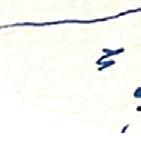
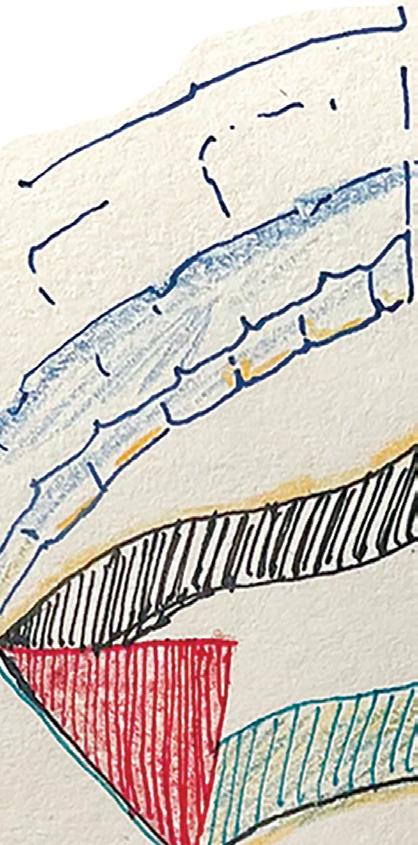
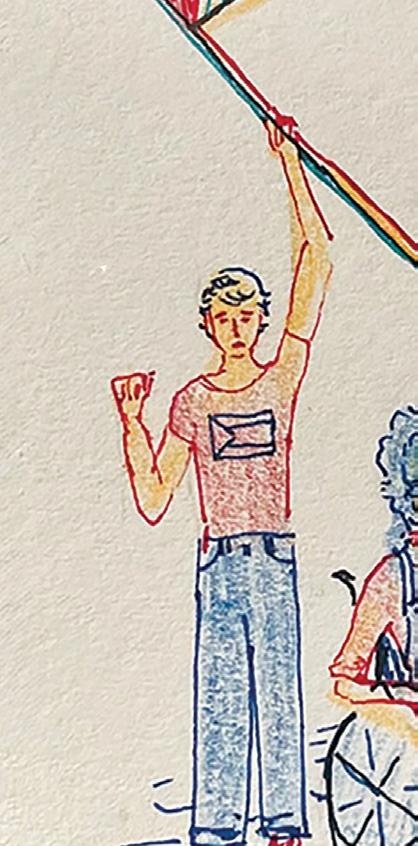

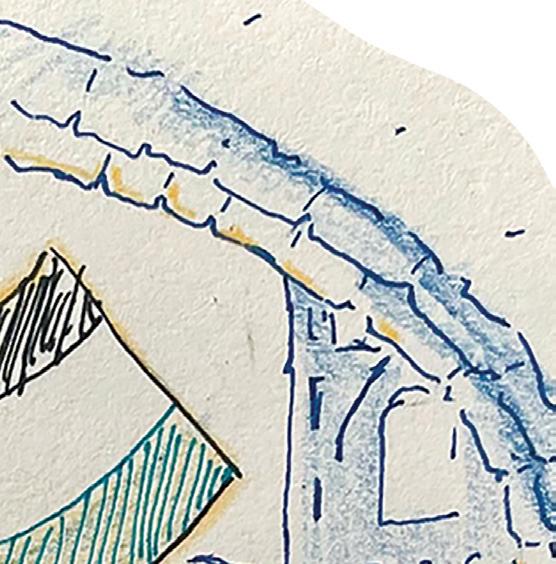
vast majority of us St Andrews students. St Andrews’ elitist student community and the echo chamber of privilege which has shielded us can no longer absolve us of our duty as students. Here in the Bubble, rent, bills, and even meal-deal prices continue to climb. Our Career Centre visits increasingly lead to the inevitable understanding that opportunities for jobs and money are scarce. We are not immune, even in our most privileged spot. Activism and advocacy have taken place for the ongoing war in Ukraine and the floods in Spain. This is important, and we, as privileged students have a responsibility to act. I can’t help but



Z’s anger in response to the current political climate. People, in general, but displayed most vehemently in the St Andrews community, have a trait that I’ve found increasingly difficult to stomach: Problems seem to only be legitimised once they are ours to face. Even the worst economic conditions globally don’t faze the
think, however, that our sympathies seem only to peak when calamities and atrocities hit the first world — which is, for most of us, our world. What is happening in Afghanistan (yes, still, look it up) and Gaza is sickening. We all say it, but what have we done with our rights and responsibilities to appeal to the institutions around us, which are complicit? The shameful answer is “not enough.” Yet we sit
in our History tutorials, condemning people of the past who stood watching as terrible injustices were committed, and it somehow hasn’t occurred to us that we’re no better. Across the UK, students have embodied what has long characterised student culture. Activism and outrage are what’s expected from young people gathered in educational institutions. Comparable institutions with similar student demographics, including Durham and Oxbridge, have staged large-scale demonstrations, actively engaging in resistance against the injustice our world faces every day. Haya Adam, President of the Palestine Society at the School of Oriental and African Studies, recently faced expulsion, allegedly in relation to her pro-Palestine activism. Here, there certainly has been discourse, and I would be remiss not to mention our Rector, Stella Maris, and her statement condemning the genocide and the extensive complicity of the UK and British institutions. The backlash this generated represented a wider issue, in which placing accountability on a government’s perpetration of ethnic cleansing as an assertion of Zionism is misconstrued as antisemitic. I signed a petition to help the Rector be reinstated, and the Palestine Solidarity Society has been doing even more important work, but it just doesn’t ever seem to penetrate deep enough into the student community.
My question is, for a generation so polarised — the leaders of ‘woke’ culture and, increasingly, its conservative counter-movement — why don’t we seem to echo this political outrage in St Andrews?
What, beyond our good fortune, separates us from the university students and faculty living through wartorn conditions in Gaza, or the Palestinian journalists being targeted and killed? As a student body that is almost half international, does some extra cash in a trust fund absolve us entirely from standing up for ourselves and for those far more affected by anti-immigration movements across the UK and US? These issues are becoming less and less a matter of differing political views and commonplace discourse; we are watching lives, families, and communities be upended and destroyed. Our privilege does not absolve us from saying nothing and doing nothing. It is time we stopped being ‘apolitical’ on issues where our silence and non-participation can be taken as nothing but complicity.
Illustration by Ramona Kirkham


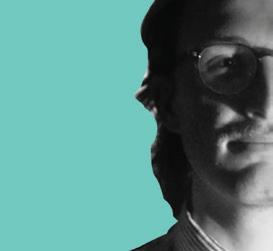





Like wine and cheese, a good film adaptation can only complement the book on which it’s based. The book provides the substance and detail, and the movie provides a separate but related palate of flavours. Neither claims to be definitive. The two sides are not in competition. At most, one may overpower the other, but even the most poorly matched Amazon Prime series cannot entirely ruin the J. R. R. Tolkien novel. Instead, the good pairings strengthen the artistic merits of both media, like the Godfather books and movies, while the truly awful pairings are mercifully forgotten. The very best film and folio pairings come about when accomplished filmmakers recognise the merit in good books, and use the text as a starting point for their own projects. Necessarily, this means the final movie may differ significantly from the book. It would be naive to expect absolute fidelity to the text, even when authors are involved in writing the screenplays for their books. Creative license means that Dune according to David Lynch or Denis Villeneuve is not Dune according to you or Frank Herbert.
“Our lived experiences furnish the framework the author provides .”
Instead, they should be evaluated as separate, though related, works of art. Take an old novel with a critically acclaimed film equivalent, like The Leopard or Jane Austen’s Sense and Sensibility. It wouldn’t be right to say that the novel is bad because the movie is bad, and vice versa. Great movies, like Wes Anderson’s Fantastic Mr Fox, can be great because they share something of the spirit of the book. But they can also be great despite not sticking to the text. This is also true of historical films — unless you are a total nerd, the merits of Marie Antoinette or Gladiator are in the storytelling, not the meticulous attention to historical detail. With this in mind, it’s hard to imagine how movies can ruin books. Perhaps the exception is when a movie becomes much more deeply
embedded in the popular consciousness than the book on which it’s based. In cases like this, it’s hard to read the book uncoloured by the actors and scenes that we’re already familiar with. When I read Dune, I had Lynch’s hilariously primitive CGI in mind during the fight scenes. The same is true of Alain Delon and Patricia Highsmith’s The Talented Mr Ripley, or the desert scenery of No Country for Old Men in Cormac McCarthy’s masterpiece.
Even in these cases, it’s hard to say that the movie image of a book ruins it for us. Maybe a really bad film adaptation can hang unpleasantly over an otherwise readable novel. Most of the time, though, the movie only informs superficial details about how we imagine the story’s characters and setting. That’s not a bad thing. It would be impossible to hermetically seal ourselves off from outside influence in order to ‘properly’ enjoy a good book. Our lived experiences furnish the framework the author provides. From another angle, it would be ridiculous to say that a work like Hamlet ‘ruins’ an entirely separate though related piece like The Lion King. Or that Joseph Conrad’s book about the Congo unfairly flavours Kubrick’s Apocalypse Now. Movies based on books are separate artistic works than the books themselves, and it’s not fair to say that one poisons the other in either direction. They’re distinct works of art. If a bad movie ruined what you thought of a book, maybe consider it a bad movie instead of blaming the book.
As a disclaimer: I love adaptation. I find it thrilling. I love to see different spins on the same story — I’m sat for updates or reimaginings, retellings or pieces of inspiration. I’m happy to see Macbeth staged in a Pets at Home, or watch a movie where The Odyssey is reperformed a set of semi-sentient crystals. I am not a purist, nor a hipster (or, I try not to be). But if I did have a concealed hipster gene, then Hollywood’s adaptation ethos would activate it: the film industry, through adapting novels, seems hungry to eat them whole.
A good adaptation sets up a symbiotic relationship between the adaptation and its source material. The original and what it inspired are changed by each other, with neither disappearing completely. One can love Greta Gerwig’s Little Women, for example, while keeping the novel in mind; and, usually, one can have a different experience when consuming either. You can have a book Jo and a movie Jo, with only one being Saoirse Ronan. Both these experiences should be equally as valuable. What you imagine when you read Little Women is as official of a vision as anything someone could project on the silver screen. A good adaptation leaves you with that freedom to move between what you imagine and what a director imagined. The film industry seems to have no interest in allowing audiences this freedom. For about five years, the only copies of The Handmaid’s Tale available were ones covered with Elisabeth Moss’s face. During the marketing campaign for Wicked, the obscure source material was

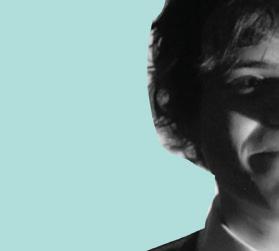
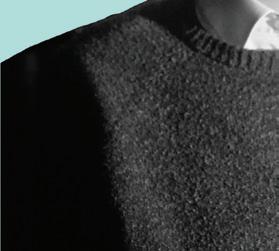

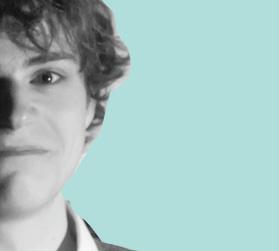


“The subliminal message to readers, here, is that the book is supplementary reading.”
everywhere. Even Greta Gerwig (or her team) refitted copies of Little Women with a small sticker displaying her choice actresses for the March sisters. The subliminal message to readers, here, is that the book is supplementary reading — just one step toward consuming the film industry’s official vision of a story. I’m not saying books should be treated as holy texts. I loathe the tendency towards wrapping books in dark-academia-mystique, thereby denying them the chance at being creatively adapted. But I do think all iterations of a story should be equal, allowing for a clearer look at why the story stuck with us in the first place. You’d think this would be intuitive: if we like a story, we should like it in all its forms — be open to a diverse catalog even if it’s different from what we know. But, we aren’t: instead, we’re encouraged to purchase the official merchandise, to buy tickets to the official vision of what our stories are. And people buy those tickets! Even if they say they’ll go back and read the book, they do so with a vision of the movie. For this reason, it feels like a death sentence whenever a film adaptation comes drifting down from on high. For forever, the free imagery of the novel will feel dominated and restricted by the settled imagery of the movie.

POPPIENA HORSINGTON
Viewpoint Writer
Like many other St Andrews students, I have been known to board a plane. During a typical airport visit, I rigidly stand next to my gate, petrified that the flight has somehow already landed and left without me. To distract myself, I then look around at my fellow jet-setters and am met with a familiar sight: people lying around in comfy clothes, headphones firmly attached to their heads, playing games on their phones. Yet, during my last airport visit, this sight truly made me wonder if we’ve all just gotten too used to air travel, as if one day the Boeing became boring for us all. If a plane no longer holds prestige and excitement, then it slowly falls into the category of bus — a form of transport that is highly utilised and taken for granted. I implore us to stop neglecting the distinguished jet and start seeing it in its true form: a humungous metal cylinder that cruises at a minimum of 850 kilometres per hour. It seems to me that no one, aside from children under the age of eight, gets excited for planes anymore. Even then, a child’s passion immediately dissipates the second they experience any semblance of ear pain or air sickness. Little do they know that this pain is caused by man’s conquest of the principles of flight. While the child weeps tears of discomfort, the Wright Brothers weep tears of joy. Everyone else on the plane is attempt-
ing to ignore these deafening wails while listening to music and flicking through the in-flight magazine (a delight on any flight, I must admit, even if no one in the history of mankind has ever bought something from those things). Where are the people staring out the window in awe of how fast we went from ground to troposphere? Why are we engaging in bus activity and doing these mundane scrolls-on-phones and flip-throughs-ofmagazines instead of taking advantage of the full joys of flight? Look out the window! Hell, I give you permission to clap when the plane takes off and lands! Anything to make the plane respected once more. There is one regard in which the plane knows how special it truly is: the infamous ‘airplane mode.’ The fact that this button exists is a reminder that the plane flies above bus status, literally and figuratively. No one has ever stepped onto a bus and wondered if they need to enable bus mode. Only the plane can incite this pontification in people! However, I am sensing that many don’t even press this discreet but
decisive button, choosing instead to think about the one time they forgot to do it and the plane still landed safely. Enjoy the moment and click that button, because there are not a whole lot of contexts in which it

can be pressed! The plane undermines itself, though, by sometimes offering Wi-Fi on a flight. What is the point of being all the way above the rest of the population if you still have to interact with them? Texting your loved ones that special “boarding now, love you!” loses its climactic feel if an hour lat-
er, you are sending them Instagram Reels. Let’s all agree to commit to the isolation of the plane. Buzz Aldrin had less communication with Ground Control during his 21 hours on the moon than you have available to you on your three-hour-long flight. I think we can all agree, moreover, that meal time(s) on any flight is a firm reminder of just how not-bus the plane should be. When the wheels of that divine cart rolling down the aisle are heard, it is as if the plane lights up with glee. Tray tables are down, people are waking up from naps, maybe even nudging the person next to them if they share that greedy gene. On buses, eating is regarded as a suspicious act — some say you can, some say you can’t, and some say some weird variation of the two. I have eaten on a bus before and I was judged; I have eaten on a plane and I was celebrated!
I do not intend to pit two immensely valuable forms of transportation against each other. I have love for both. Buses will get their own article one day, I’m sure. I simply aim to illustrate that travelling on a plane should not be casual. It is objectively a big deal to board something that flies through the air and can land you across the world in a matter of hours. I know some of you are itching to bring up Airbus, but just because it humbles itself doesn’t mean we should. The next time you board a flight, turn on that flight mode, enjoy that airplane food, and make the most of the thrills of flying.
Illustration by Haalah Bint Hashim
STELLA PAK-GUNETTE Viewpoint Writer
When I put “economics” on my UCAS form, it wasn’t because I’d uncovered some burning passion for the subject itself. Sure, I enjoyed IB Economics, but graphs and curves never exactly lit me up or sparked much curiosity. Admittedly, it was because the degree sounded serious and employable.
I don’t think I am alone in that. There’s a certain reassurance in picking economics, IR, or management: degrees that come with clear labels and ready-made explanations. You can tell relatives what you study without the age-old, “So … what do you actually do with that?” Honestly, you can’t really blame yourself. At seventeen or eighteen, reeling from exams and UCAS deadlines, it feels impossible to weigh the next four years of your life with any real clarity. So you go with what sounds safe, what opens doors, and figure the rest out later. Eventually, you start to wonder: do I actually like what I’m studying, or just the idea of it? Too often, it feels like the label matters more than the material itself. Not to sound like a tour guide, but one reason I chose St Andrews was its flexible
degree structure. This semester I chose a first-year anthropology class just to have a small detour from the management and economics modules that tend to overtake my timetable. Even in the first two weeks, it’s refreshing to sit in a completely different discipline. It reminded me that the degree I chose at eighteen mustn’t necessarily define all four years, and new curiosity can surface in unexpected places. Sometimes it creeps in from the sidelines, and it’s no less valid than the subjects we picked under the banner of ‘direction’ or ‘practicality.’
The issue is that most of us don’t let ourselves follow that interest or curiosity. Why? Because the sunk-cost fallacy kicks in fast. By the time you’ve invested years of effort into a subject, it feels futile to change course. You tell yourself that your persistence is proof of passion, when in reality it’s just proof of inertia. “But I’ve already made it this far,” or “What else would I do … ?” become the excuses to continue.
Disclaimer: none of this is to say everyone secretly hates their degree, or that studying a certain subject is inherently dishonest. But it’s worth asking what, exactly, sustains our attachment? Are we motivated by actual curiosity, or by the performance of
loving a subject that happens to align with high-paying jobs later down the road?


anthropology feels like a return to that structured, quantitative performing interest rather than actually passes for










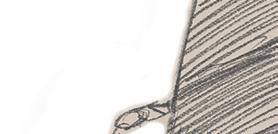








What my anthropology detour reminds me is that curiosity feels different from obligation. Back in high school, I loved History and English, but I never seriously considered them at university. Not because they lacked value, but because I’d internalised the idea that some subjects point more directly to a career and that linearity seemed like a responsible choice. The more interpretive, subjective nature of anthropology feels like a return to that side of myself. By contrast, the structured, quantitative logic of my degree often leaves me performing interest rather than actually feeling it. Yes, it passes for





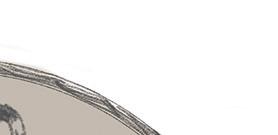

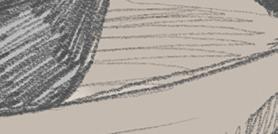


There’s no moral victory in finishing a degree you don’t actually love just because you started it. That isn’t discipline; it’s denial. The point isn’t that we’ve all chosen wrongly, but that sometimes we fail to recognise university for what it’s meant to be: a place to explore. Which is why we should give ourselves permission to keep re-evaluating, especially in first and second year, when there’s still room to change direction. Curiosity is a valid compass, even if it doesn’t point straight to a career. If we’re only pretending to care in the name of employability, then we’ve already let the job market colonise the one space that’s meant to belong to learning for its own sake.
we’re only pretending to care in the then we’ve already the one to belong to learning for its own


isn’t the same as any curiosity I had before
engagement, but it isn’t the same as any curiosity I had before everything was filtered through career logic.





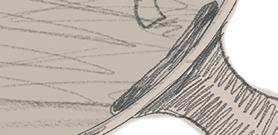
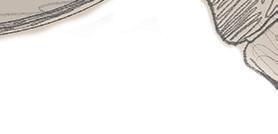




















what might’ve been, but what happened anyway
ALEX MCQUIBBAN Viewpoint Writer
It can sometimes feel like one’s life could have turned out very differently if only one choice had been made instead of another. I, myself, often lie awake at night visualising my life as a winding road with a myriad of branching paths down which I could have travelled: different universities I could have gone to, places I could have lived in, people I could have met. A day scarcely goes by without me mentally re-enacting and revisiting it a hundred times over — and a hundred times more for good measure. This is despite the fact that I am largely convinced that everything is as it was always going to be, a niche philosophical point which I am clearly better at arguing for than living by It should perhaps come as no surprise, then, that one particular fork in the road which I have recently made a habit of revisiting is one over which I definitely had no control. Going into my second year of primary school, I developed a fascination with all things scientific, a passion strong enough to motivate me to ask my parents to sign up to the school’s science club. Unfortunately, I was one year too young to join — God forbid the school make an exception. The absolute last thing a school should do,
after all, is feed the intellectual curiosity of impressionable young minds; such a thing is known to have pretty severe consequences.
Although I’m not sure exactly how devastated I was at the time and was certainly not put off by intellectual pursuits altogether; at my time of writing, I am against all better judgement in the second year of a second Master’s and eyeing up another four years of study and a potential lifetime in academia. Still, I’ve come to think of my exclusion from the science club as a turning point in my life. From then on, I scarcely went out of my way to indulge in extracurriculars despite having all sorts of interests and plenty of friends with which to develop them. Perhaps it would’ve been helpful to put a label on what I now know to be crippling anxiety frustratingly matched by an equally staggering extroversion. I could have, at least, learnt how to effortlessly juggle a football. I can only imagine the clubs I would’ve tried out for had I accrued that skill, and the promising, though ultimately short-lived, multi-sport career that would’ve followed.
My biggest stumbling block when it came to exerting myself ‘extracurricularly’ (other than myself), however, were my parents. I knew many kids that were, let’s just say, ‘strongly encouraged’ to compete in amateur sports, learn an instrument, or, scariest of all, attend a summer camp.
I, on the other hand, was ‘raised’ — if one can call it that — by parents who took a distinctly laissez-faire attitude to parenting. That they came to adopt this attitude is not surprising when their own life-paths are brought into view. Besides being quite the busy-bees, they had also had two kids prior to me and, long before I was of age to join the school science club, they had already encountered that all-too-common fork in the parental road where they give in to their children’s protests against mandatory piano lessons. Had I been allowed to join the school science club, I might still have lacked the ‘positive reinforcement’ needed to learn an instrument or try out for a sports team, shocking ‘keepie-uppie’ ability notwithstanding. Whatever the case may be, to this day, I have zero sporting trophies to my name, nor can I play a single instrument. Alas, I have made some strides in the extra-curricular department since my school days. I can now proudly say that despite having experienced a level of parental nonintervention that would make even a Swede shudder, I have written for many a school publication, presided over a few societies, founded a sporting club — shoutout Saints GAA — and even had the joy of meeting my now-partner at an Irish Society pub quiz, of all places. So, while I am now

unquestionably pro-extracurricular and do still wonder how my life would have been had I been allowed into the science club or parented more authoritatively, I am beyond happy with the path I’ve ended up on. In the immortal words of the great poet Robert Frost, (albeit probably not penned in reference to extracurricular activities):
“I shall be telling this with a sigh Somewhere ages and ages hence: Two roads diverged in a wood, and I — I took the one less traveled by, And that has made all the difference.”
Illustration by Eve Fishman
ADRIAN HANLON viewpoint writer
With a net approval rating among Britons of -61 (about halfway between Starmer and Putin), it is quite clear that the decision to grant Donald Trump an unprecedented second state visit was not a reflection of the British people’s overwhelming love for the US President. Away from the pomp and pageantry with which the government and Royal Family greeted him, protests demonstrated the true feelings of the public. Some of these, like the one that projected videos of Trump and Epstein onto Windsor Castle, even resulted in arrest. Yet despite the public’s reasonable reluctance to host a man whose second term in office can only be characterised as an exercise in corruption and whose approach to foreign policy has alienated allies and emboldened dictators, one could make the argument that the UK has a duty to host Trump. With Russia violating NATO airspace multiple times in recent weeks, the threat to Europe’s former Eastern Bloc is mounting. That means we require US backing more
than ever. It is not a question of condoning Trump’s actions, it is a question of necessity.
It is also a question of efficacy. Given that Trump has, in the past few months, imposed sweeping tariffs on allies, threatened to annex Canada, and cut aid to Ukraine, one might worry about the ability of any US partner to make the President honour allegiances. Still, the UK is uniquely poised for the task due to Trump’s well-known admiration for the Royal Family, who remained front-andcentre throughout the visit. Furthermore, the UK has on several occasions acted as a bridge between him and Europe, showing that Starmer’s skills in international diplomacy are stronger than his domestic policy. Even so, it is unclear that he has been able to influence the President in any meaningful way, besides achieving exemptions and reductions on some US-imposed tariffs and signing a £250 billion tech deal during the visit, the details of which remain unclear.
It is too early, therefore, to judge the effect of this state visit on Trump. His chief of staff, Susan Wiles, told the BBC that, although he enjoyed the trip, it would have no influence at all on his decisions. And yet, also according to the BBC, he plans to invite King
Charles and Queen Camilla to the US next year, suggesting that the Royal Family could be one of Britain’s strongest political assets.
To summarise, then, the UK is leveraging the Royal Family, spending millions on state visits, and putting in huge amounts of diplomatic man-hours to perhaps, maybe, hopefully, get some indication that the US will honour its commitments. And is the threat from Russia really great enough to justify sucking up to Trump? Or are we, like CBS and ABC, simply capitulating to the whims of a hardman for potential short-term gain in a manner that may well come back to haunt us?
The answer to whether capitulation will haunt us is uncertain. The answer to whether Russia is a significant threat to Europe is “yes.” According to the 2025 Global Firepower Index, Russia has the third-strongest army in the world. They also have the backing of North Korea, as well as deepening ties with China.
Meanwhile, Europe’s capabilities have dwindled, and although we likely remain a match for Russia, we no longer possess the military might needed to fully deter aggression. Furthermore, our commitments
to rearmament do not respect the imminence of the threat, with the UK aiming to spend 2.5% of GDP on defence by 2027, a mere 0.2% increase from 2024. Thus, a diminished Europe requires US security guarantees, if only for the purpose of deterrence.
“The answer to whether Russia is a significant threat to Europe is ‘yes.’”
Overall, I think the UK does have some duty to suck up to Trump. Yet I think that duty applies more to the government than to the public. People should continue to protest. They should continue to champion the causes in which they believe and oppose those they deem harmful. But they should do so with the understanding that such protests have consequences, and when our safety and the safety of our allies are at stake, one ought to think twice before telling Trump to pack his bags.
MILLY SMITH
Viewpoint
writer
The line between the (few) British members of the St Andrews student population and those who hail from ‘across the pond’ is becoming increasingly blurred. Seeing a figure in a green waxed Barbour jacket advancing towards you on Market Street no longer signifies a pending invite to a bird shoot on Balmoral estate, but instead a Californian with a vocal fry asking you if you’d like to attend this week’s Polo social. Wellies have become a fashion shoe, teapots are just so quaint, and Princess Di is total fashion inspo.
However, one aspect of our British culture that the St Andrean Yanks seem averse to adopting is our tendency towards self-deprecation. In conversation, even amongst our most trusted of friends, we Brits always err on the side of modesty. If we absolutely must bring up our achievements, we will do so with all the necessary humility and understatement, always careful to downplay them at each step.
For example, if asked, “What did you get up to over the Summer?”, a popular socially galvanising question of the moment, never respond, as many Americans have been known to do these past few weeks, with a slew of self-aggrandising remarks that
amount to a spoken LinkedIn post. None of this investment bank name-dropping and return offer nonsense, just say something brief about the nice weather we had, shame that you had to spend a month in an office staring at Excel, and be done with it.
On the rare occasion that somebody asks you: “How is your degree going?” (a sure sign that pub chat is drying up), mumble something about how you’re always out drinking pints and can’t quite seem to remember where the library is, then offer to buy the next round. Never ever resort to mentioning that you are on track to get a First or, god forbid, bring up that you won some kind of academic award or had your coursework published in a journal. How utterly gauche.
This tendency to put ourselves down doesn’t actually mean that we think little of ourselves. In fact, endless boasting about one’s successes comes across as terribly needy, as if you are Oliver Twist begging for just a little more admiration, just a few more compliments. To be the first person in a room to decry your own achievements, however, points to a fortitude of character; you are an independent soul who does not feed on the adoration of others. And when, inevitably, the wheel of fortune turns once more, and the firm who offered you that

stellar grad job sinks into liquidation, no one will cackle loudly in your face and recount how you drunkenly told every drinker in Aikman’s cellar your starting salary. Instead, they’ll give you a sympathetic pat on the back and move on. Yet, is there something we can learn from our American peers? Should we be more comfortable blowing our own trumpet, and is our tendency towards selfdeprecation actually as attractive a quality as we think it is? To be honest, before writing this article I expected to discover that we Brits are all just miserable people, suffering from a malaise brought on by eating too many tinned products and
GEORGES TOULOUSE
Viewpoint writer
Our times are arguably more troubled than those which most generations born after the Second World War have had to face. Read the news, watch television, look at any social media, and you’ll see that something has profoundly changed. Conflicts have broken out throughout the world, more than Western media tends to acknowledge; violence and division are rife in what we can only call ‘the most developed democracies’ with a pinch of irony. Everywhere, the consensus we all took for granted is crumbling. While the world has gotten more divided, we have ourselves become lazy. Much of the news people take in is selected and tailored to comfort their existing ideas — this applies to Fox News and GB News as much as to CBS and The Guardian. Social media feeds us only the information we want to see, locking us into systems of thought which vilify anyone on the outside. As opinion has
started to outweigh fact, we have, in large part, surrendered by no longer challenging ourselves into backing up our beliefs.
Societies increasingly feel like collections of antagonistic groups with their own interests and ideals, coexisting with tension and the occasional flareup. We don’t trust each other because we don’t understand one another anymore.
You can think what you wish about Charlie Kirk’s or Bernie Sanders’ beliefs, I certainly do, but they talked to people, confronted other beliefs, and tried to break down walls l of incomprehension. We can’t be societies if we don’t understand one another, or without actively engaging with those we disagree with or distrust.
I like to think that I’ve learned a few things in my twenty-odd years down on Earth. One of them is that very few people are ‘bad people.’ The proportion of real psychopaths in the world has historically been relatively low — 1.2% — and most of the people you think to be crazy or soulless


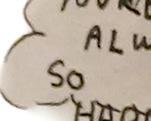

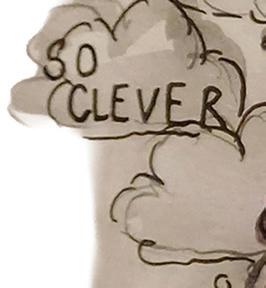
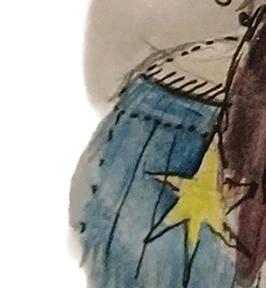

only seeing the sun once a year, unable to emulate the happy-go-lucky personalities of our American counterparts. Yet, for all the culture that we import from the States, their singers, sitcoms, and big brands, this is one thing I think that they could take back stateside after four years spent in Fife.
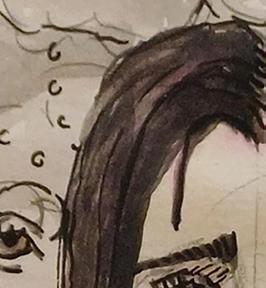


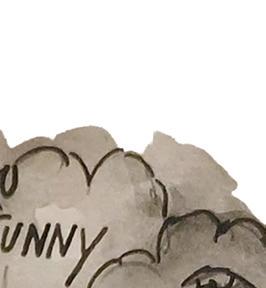
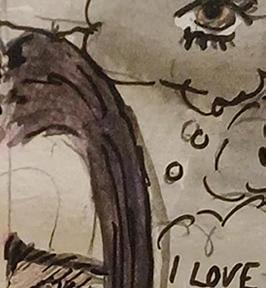

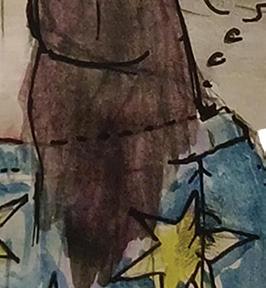


because they believe X, Y, or Z are probably not. You may think they’re bad people with horrible and dangerous beliefs, but they probably also think that of you. Are they right about you? You’d say no. What makes you so sure that you are right about them?
We all have our preconceptions about others. We all associate certain images with the communists, Trumpists, Tories, and Labourites of the world, good or bad. However, most communists want a better and more equal world, not a return of the KGB and gulags. Most Trump supporters, I believe, are either willing to put up with his rhetoric and diatribes in exchange for tax cuts or have lost faith in any other form of governance; they’re not all racists and sexists. Left-wingers and right-wingers — even the centrists — in their crushing majority seek the same thing: a bettering of life. They simply disagree on the method, due to philosophy or personal interests, and what sacrifices to make in achieving it.
I am not saying you should see all



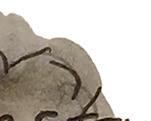
For all our British misery, our endless chatter about whether it’s too hot, or too cold, or too rainy, this is the one thing I think we get right. You can never go wrong by being humble and modest, rather than brash, boastful, or egotistic.
convictions as acceptable. Some beliefs are wrong; some people are stupid, selfish, dangerous, and uncaring. But not everyone. Understand why they think what they do, without writing them off as unfrequentable before doing so. Think for yourself, debate others into understanding you, and they will make you understand them. Even if you do not change their minds, or they yours, you will have made progress in healing the fractures within our society.
A person is not evil because they vote, act, look, or think differently from you —we should have moved past all this years ago. Stop relying on the caricatures drawn up by interested parties and make up our own mind. Not every right-winger is a milk-snatching xenophobe, and not every leftist is a woo-woo Stalinist. Understanding that is a conversation away.
DESDEMONA SMYTH
Viewpoint Writer
I set out to write about the shoes of St Andrews and found that the suede trainer was more than a trend — it was a symbol. The suede trainer overruled the black kneehigh boot, the ballet flat, the loafer, the boat shoe, and even the ‘standard’ trainer. The Adidas Samba and Gazelle, now nearubiquitous, embody a larger phenomenon: the homogenisation of identity.
The suede trainer sits neatly alongside the TikTok-born “Clean Girl Aesthetic.” On the surface, both seem harmless: trainers that “go with everything,” or a style centred on clear skin and simple clothes. But together, they form a uniform: one that flattens individuality into a prepackaged look. If the clean girl is the face, the suede trainer is the foot. One polishes the body into a minimal, unthreatening ideal; the other grounds it in a shoe that promises chicness but delivers sameness.
In St Andrews, the trainer is everywhere, and almost always styled in the same way. Picture it: straight-leg jeans, a baby tee, oversized sweater, trench coat, and either a Goyard Artois or Longchamp Le Pliage. This formula repeats itself so often that spotting a deviation feels like an event. Yes, the trainers come in dozens of colors, but their cultural effect is the same — they erase difference, reducing the wearer to one more iteration of a pre-approved aesthetic.
celebrated. In St Andrews, compliments on your outfit tend to come when you’re wearing the most unremarkable things: a trench, jeans, ballet flats. Standing out is not rewarded; blending in is. The result is a strange paradox: individuality is more comfortable than imitation, but the fear of rejection makes us cling to
“The suede trainer is more than just a shoe; It’s the foundation of a larger aesthetic.”
sameness. The suede trainer is both a symptom and symbol of that paradox.
To be clear, this is not an attack on those who wear Sambas or Gazelles — I own a pair myself, worn nearly to pieces. Rather, it’s a call to consider what our clothing choices communicate. The cult of the suede trainer, and the clean-girl aesthetic it reinforces, has a classist undercurrent. Looking “effortless” is expensive: the skincare, the hair appointments, the designer totes. Yet the aesthetic demands denial. We are told this look is natural, “just good genetics,” when in fact it reflects time, money, and labour.




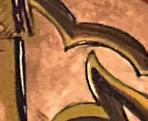














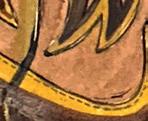


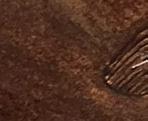


The suede trainer plays its part perfectly. It doesn’t detract, it doesn’t distract, and for some, that’s the ultimate victory. This pursuit of inoffensiveness fosters a culture that prizes conformity over individuality. The trainer blends in so smoothly that it erases the wearer, just as the cleangirl aesthetic erases the effort behind it.
PETRA PENDER Viewpoint Writer
SAFFRON ROWELL Viewpoint Writer














Breaking out of that mould is frightening. To swap the uniform trainer for, say, snakeskin boots or something less predictable risks social discomfort. But trends fade; individuality endures. Trendfollowers are quickly forgotten, while those who resist the cult stand a chance of being remembered.












The irony is that social media feeds are filled with people trying to present themselves as innovators. Yet when it comes to the suede trainer, there is no unique way to wear it. Its very popularity cancels the individuality it was meant to project. People buy into the myth that this shoe makes them chic, but in truth it advances a culture of conformity. And conformity is not just tolerated here — it’s
project. People but in truth it conformity. And conformity is not just here
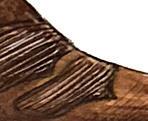
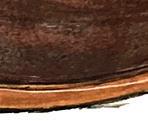



The suede trainer is more than just a shoe; It’s the foundation of a larger aesthetic — one that confuses sameness for style and compliance for confidence. There is no easy cure for conformist consumerism, but there is an antidote: reflection. Ask yourself why you want the thing everyone else has. Is it laziness? Fear? A desire for superficial belonging? Choosing clothes you actually like — rather than what the algorithm tells you to like — isn’t just braver. It’s easier. Pretending to be everyone else is the real work.
Illustration by Magdalena Yiacoumi
It is a truth universally acknowledged that a 601 attendee in possession of some cigarettes must be in want of some friends — or so the saying goes. When the indoor smoking ban was introduced, an unexpected positive outcome was the uptick in romantic connections forged. But, in this era of pilates princesses and manospheric protein powders, what triggered this sudden shift? When browsing social media, celebrity pages, or even the mainstream news, a surprising trend is apparent: smoking is back. Whether it’s Paul Mescal, Addison Rae, or Queen Margaret of Denmark, it seems that smoking for Gen Z isn’t quite the taboo it was for the generation before us. In the late ‘90s and noughties, smoking was akin to a moral failure. . . Continue reading online
Taste — the cultural preferences we have — is a quality which, once shaped, remains deeply ingrained in us. The clothes we wear, the movies we watch, the books we read, are all formed by our environment: the people around us growing up, our school friends, our family, or wherever it was that we spent the majority of our time. And it plays a seminal role in the choices we make now. You already know that there are groups around you with different perspectives, different jokes, that may just not be to your taste. This might seem obvious. No one is missing the hint, for instance, in the Tory Society Aikman’s Code. But these social differentiators, which are inherent in our everyday lives, are often a lot subtler. . . Continue reading online

ANNA REZNICK FeatUres Writer
Afternoon sun splayed across the tables outside the St Andrews Shawarma House when I interviewed founder and owner Aydin Daj. Throughout our conversation, locals and students briefly interrupted to say hello to Daj, who greeted them with a smile and a fist bump. The restaurant opened in December 2019, and in just six years has become a staple of St Andrews, with locals stopping in for a quick lunch and students ending their nights out at the restaurant.
Daj’s experience with food began far before the restaurant opened, back when he still lived in Turkey. To this day he remembers his favourite meal his mother cooked. “Pasta, always pasta,” he said. “When she cooks it, it’s all I eat.”
His fond memories of food provided him with direction after he left school as a child. “I studied until primary school, I was four or five,” Daj said. “My family didn’t have a position where we could study… Since then, I’ve been in the kitchen. ”
“His fond memories of food provided him with direction after he left school as a child.”
When asked about what he learned from his years as a chef, Daj told me, “I know thousands of things, too many to tell you.”
At twenty years old, Daj decided to take his knowledge across the continent to Scotland. While his time in Turkey as a chef taught him many things, he still found he had much to learn upon arrival in Scotland.
“My English was a problem,” Daj explained. “But I learned on the street. I never studied.”
The language barrier was not the only struggle Daj faced. Translating business knowledge from one country to another proved difficult, and his early years in Scotland were marred by failure. “I had two, three businesses in Dundee,” he said. “I burst them. I made
a lot of mistakes on those businesses.”
Fortunately, Daj was not alone. His mother, ever faithful in her son’s abilities, found a way to keep funding Daj’s entrepreneurial ideas.
“My mum, she sold her gold, her Arab gold,” Daj said. “She opened our business for £35,000. Then she helped me, I think it’s eight months she helped me.”
To this day, Daj considers the restaurant to be his mother’s. “It’s her shop,” Daj said. “She can do whatever. If she told me to sell the business, I’d sell it straight away, because Mum is very important for me.”
Daj and his mother worked alongside each other with no other help, making recipes that came not from a cookbook, but from family tradition. Despite Daj’s mother moving to Canada once the Shawarma House proved successful, her presence remains in the restaurant’s menu. “It’s the same now. Never changed anything,” he said.
While his path to success may have been rocky, Daj has reached a point of personal pride. “It does make me proud of myself,” he said. “And it means I’m doing something right. Because I bursted two,
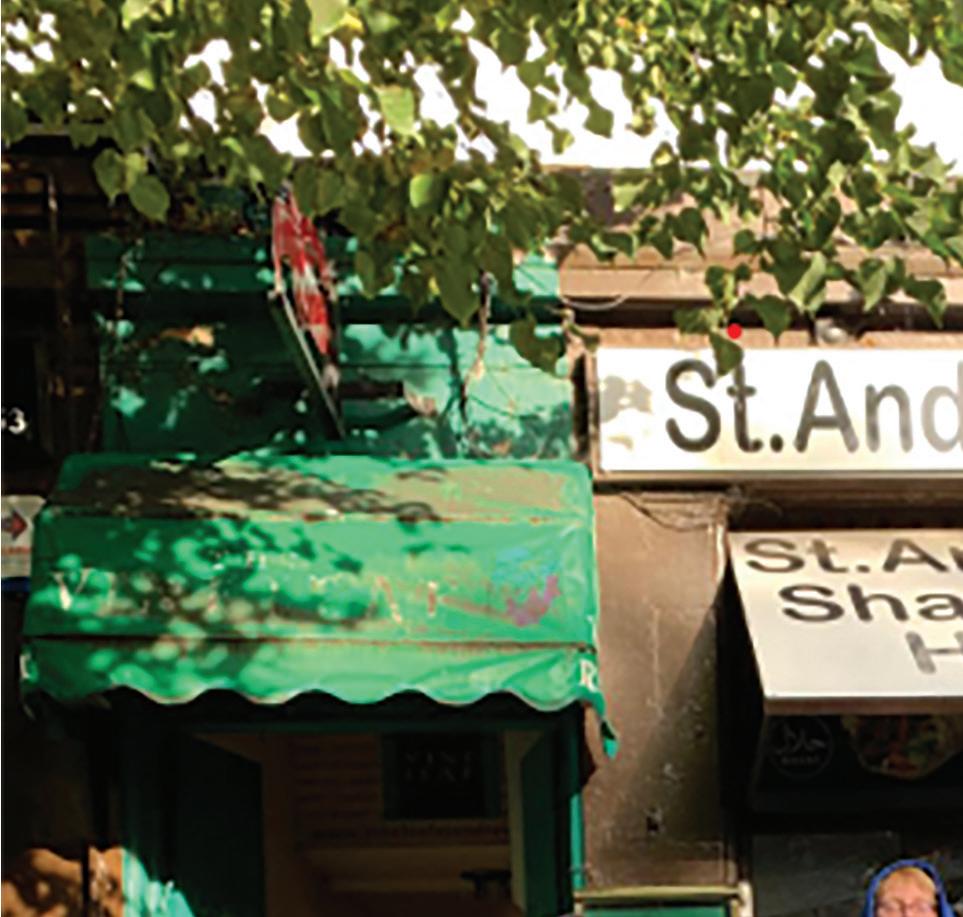
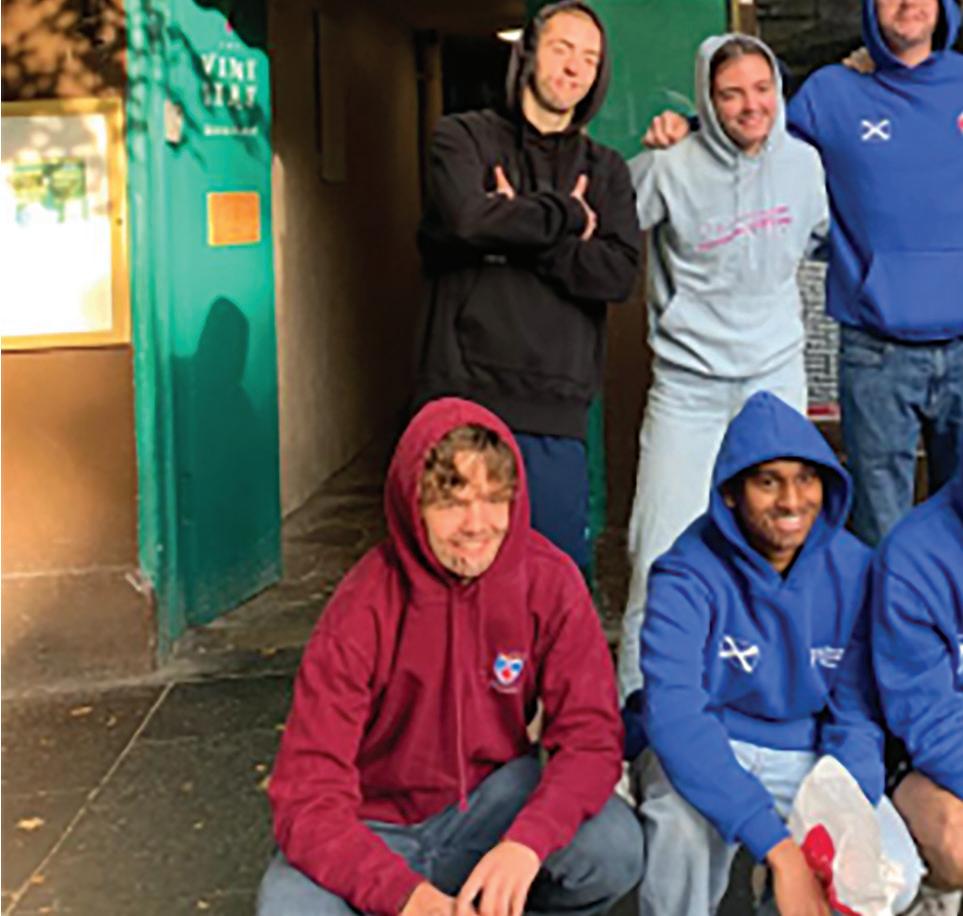

Despite early success, Daj’s blooming restaurant was soon put under pressure by the Covid-19 pandemic.
“Covid affected me really badly,” he said. “I was really struggling, because of no money, no income. It was bad, really bad.”
Fortunately, the reinstatement of takeaway allowed Daj to make a speedy turnaround. “A restaurant is different,” he said. “At a restaurant, you have to treat it like a baby. Takeaway, you need to be careful, but it has a fast turnover. Not like a restaurant where you’re dealing with customers for one hour, maybe two hours. Takeaway is just 10 minutes. The customer is happy, you’re happy? That’s it. Finished. Quick money.”
the kids,” he said. “They’re crazy. I love them, they’re just cool as f***. Most faces, I can tell. 80 % are my regular customers. Same faces, always. Students come back, they return.”
The love students have for the Shawarma House has shown itself in many ways. While some bring presents to show their appreciation, one group of students took a different approach and dressed up as Daj. “Last year on Halloween, I think it was twenty students?,” he recalled. “They had a fake beard and had a hoodie. I even have a picture.”


three businesses before, I had a bad feeling. But now I know I can do it. I believe myself.”
With his growing success, Daj keeps the students of St Andrews in mind. When asked about the best part of St Andrews, Daj’s response was simple: “The students [...] I love
“When asked about the best part of St Andrews, Daj’s response was simple: ‘the students.’”
The loyalty students have to Daj is reciprocated, and Daj aims to connect his clubs and restaurants so he can provide students with discounts. “All the money I make from the kids I put back into the business,” Daj said. “I’m trying to connect [them] together. I would like to treat them like a family.”
As he told me the story, he smiled. “I love my kids,” he said. “Man, they’re really crazy.” Daj’s actual son, Aras Aydin Daj, then joined us, waving a chilli pepper in his father’s face. “When I swear, he puts pepper in my mouth,” Daj told me. “He is training me.”
The presence of his son turned Daj to consider the future. For his son, he looks beyond the restaurant. “He’s gonna study,” Daj said. “If he fails, he’s gonna do something else. If he fails again, he already knows the shawarma in the back of his mind. For example, when he’s 30 years old, if he has nothing to do, he’ll know, ‘Oh, my dad taught me how to make a shawarma.’ It’ll be a skill on his hand forever.”
As for Daj, the community of St Andrews has ensured a retirement here. He told me, “I feel the same when I go to Turkey as when I’m here. It feels like home now.”
Photo
by
Anna ReZnick
RILEY RAAB Editor-at-Large
Welcome to The Saint — the independent voice of the St Andrews community since 1997. With almost 30 years of hard-hitting investigation, scandal, and impossible crosswords, The Saint’s presence within the University is tested and true. The road to how we became The Saint, however, is as unique, unusual, and resolute as the paper itself.
The Saint began as the mysterious and unknown Quorum, published in 1962, quickly becoming Aien until 1984. The paper was then renamed the St Andrews University Chronicle. It wasn’t until 1997 that the Chronicle became The Saint — and it wasn’t a smooth transition. Tim Samuels, the founder of The Saint, explained that half the staff weren’t having it: “A delegation was led to my flat on North Street […] saying they were going to resign if I went ahead and did this.” Samuels’ response? “Fine, off you go.”
This revolution to relaunch the “bit earnest and a bit dull” Chronicle into The Saint occurred at a pivotal moment in the global culture of journalism. The 1990s saw a sceptical anxiety concerning how the internet would affect journalism anda movement towards sensationalised tabloid-style publications. At a time when publications of all types were changing and adapting, especially in the UK, nothing was off the table. As to why Samuels sparked this evolution within St Andrews, he claimed that the town “needed something which had a bit more humour and a bit more bite to it, and there’s so much to take the piss out of up there.”
After a holiday spent planning with a close group of friends, the “more maverick” publication was born anew. For the students, the idea was to tell news stories with real “puncture” and satire. The Saint was perhaps most different to the Chronicle with its heightened focus on student life. “There was so much crap in it in the old days,” Samuels explained. Someone would do a two-page feature on, I don’t know, something that had nothing to do with the University. .”
One creative forte of the early publication was its satirical social commentary. The publication gave away a wall calendar with “a social climbing ladder […] you could fill in your attempts to become a Yarr.” When former Principal and ViceChancellor Struther Arnott commissioned a large oil portrait of himself, paid for by the University, the staff turned it into a
“centrefold with a pull-out version of this painting.” They made sure “you [didn’t] have to spend thousands — you too [could] have your own version of the Struther portrait.” Samuels added that Arnott ironically “never saw the satire in it,” and just thought it was great that everyone got their own copy.
This edge for satire is something that Samuels has continued to practice in his professional career. In 2007, Samuels formed a rock group called The Zimmers, which broke into the pop charts, rose to #1 on YouTube, and recorded in the Beatles’ studio on Abbey Road. The kick? The band was entirely made of lonely elderly people, fresh from isolating care homes and tower blocks.” On bringing satire to his TV work, Samuels explained, “you can bring humour and something unexpected to the equation. You can reach a much bigger audience and you can take people on a bit more of an emotional journey.”
maybe [in] Scotland, and that was a big accolade. We beat all these big swanky newspapers from Leeds and London and Oxford, Bristol and Manchester, and that was riotous,” Samuels recalled. “We had a riotous night out in London.”
The celebrations did not stop there.
Samuels pointed to a few important points that still feel relevant today.
In an increasingly polarised world of social media, student journalism is “a way of bringing people together” through shared experiences. It also serves as “a place where people can voice opinions without falling
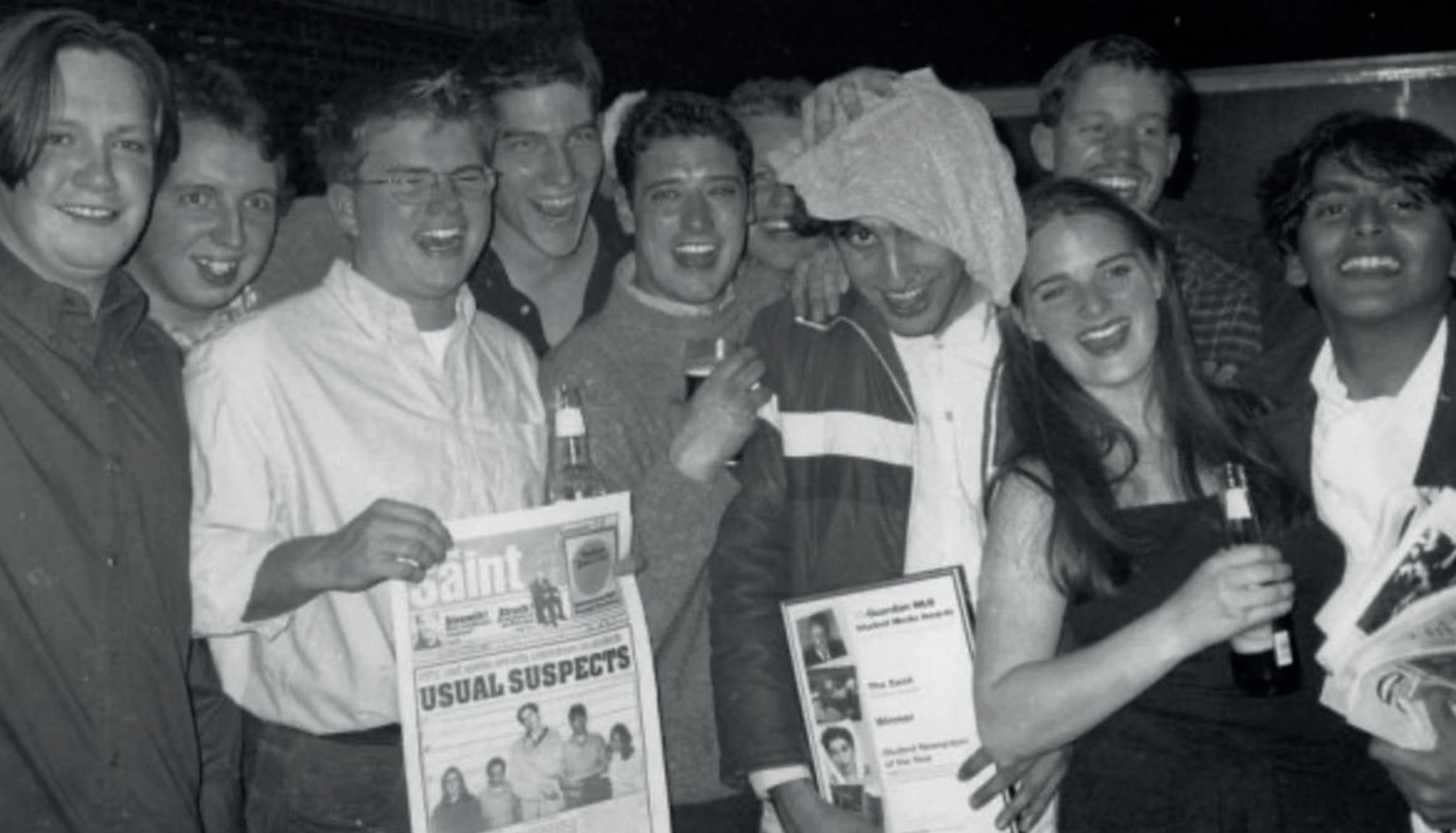
Under Samuels, satirical social commentary and hard-hitting journalism found common ground in The Saint. The paper was quite early to join mental health conversations, and people wrote about surviving the Dunblane massacre. The staff worked hard to produce a paper which was both fun and radical. The Saint took off and saw the return of the rioted writers to the staff. A tradition of chaotic and messy staff dinners was born in this first year — a rogue crash helmet accidentally broke a nose.
Today The Saint finds brethren in student newspapers across the UK in publishing style and staff dynamics. In the early days, this was not the case. Samuels recalls the “competition” at the time being “quite earnest” and taking themselves very seriously. Overly issueobsessed, these papers rarely had anything to do with student life. The Saint became reflective of the way that “hedonistic” St Andrews students never took themselves too seriously and was a “celebration of the idiosyncrasies of St Andrews.”
This difference led The Saint to win Student Newspaper of the Year the same year of its founding. This was “the first time we’d certainly won in St Andrews,
On returning to St Andrews, Samuels recalls renting “an open-top bus for the staff” and driving around the three streets of St Andrews “getting more and more pissed. So the police pulled us over and threatened me with a caution for orchestrating a ‘breach of the peace.’”
“At the time,” Samuels explained, there “was quite a sort of iconically awful car called the Ford Capri […] It was a really, sort of nasty car.” The staff used the award winnings to buy the car and then ran a lottery.Suddenly, “you too can drive a local’s car, you too can become a local.” Samuels admitted that “it was all so silly, and we took it for a photo shoot on the beach with a kind of ironic, glamorous photo shoot of this Ford Capri.”
The staff, besides their satirical observations and award-winning publication, seemed to excel at “having great fun and celebrating the absurd institution that we were at, which, you know, seems to be somewhere between a boarding school and a lunatic asylum.” As I told Samuels during our conversation, it certainly still feels that way.
When we discussed the importance of student journalism compared to professional journalism beyond campuses,
out, which is quite rare,” Samuels explained. Samuels also highlighted the role of student journalism in providing a platform to hold people in power to account — to advocate for those who don’t have a voice. He explained that The Saint plugged into a wider media culture shift, where TV programmes and magazines became anti-establishment. They often poked fun at the Student Union, nicknamed then (as some still call it now) ‘The Onion.’
In a town where, in Samuel’s words, “you could have two very parallel universes living on the same streets,” The Saint also worked to forge town-gown links. St Andrews is an absurd place, and it seems that showcasing, investigating, and celebrating life here is what has always made the paper stand out. Perhaps why it has survived as long as it has, broken noses and all, is that St Andrews has never stopped giving The Saint reasons to laugh, stories to investigate, and the reminder that even in the most ancient of universities, nothing should be taken too seriously.
Tim Samuels
REESE COLBERT News Writer
This article is kindly sponsored by St Andrews Seaside Sauna,
In a town where academic pressure abounds and social commitments are never-ending, relaxation can be difficult to find. Luckily, local creative and healthlover Judith Dunlop has the solution. Last February, the town opened its doors to a brand-new, beachside retreat: St Andrews Seaside Sauna. Nestled on the shores of East Sands, the Seaside Sauna offers not only a reprieve from lectures and deadlines but also transformative health benefits.
Dunlop is on a mission to reframe the mindset that saunas are a luxury or a wellness trend. She believes that a sauna is a place of function and community, and is an essential part of a healthy routine, as normal and vital as brushing your teeth.
The St Andrews Seaside Sauna is a space designed to combat stress, boost immunity, and forge connections. It seeks to bridge the gap between luxury wellness and the everyday regimen, making regular sauna use accessible to people of all ages and backgrounds.
For those unfamiliar with the experience, it can be easy to dismiss a sauna session as a simple indulgence. However, Dunlop made it clear that they should be viewed as anything but: “A sauna session is not only self-care, it is disease prevention.”
Beyond simply increasing blood flow, saunas provide a comprehensive range of health benefits, from cardiovascular fitness to circulation and organ health. In fact, a long-term study by Finnish cardiologist Jari Laukkanen found a strong correlation: participants who used the sauna four to seven times a week were 50% less likely to suffer from cardiovascular diseases. Furthermore, the study found that incidence of stroke, pneumonia, Alzheimer’s disease, and dementia halved in those regular sauna users.
“A sauna session is not only selfcare, it is disease prevention.”
In addition to general health benefits, saunas are a great tool for sports recovery. Dunlop happily works with multiple sports teams at the University, encouraging them to make use of the facility. The sauna seats up to eighteen people, giving teams
the unique opportunity to physically recover from practices or games, while also enjoying invaluable bonding time.
However, the benefits of the sauna are not limited to physical health or
Andrews Seaside Sauna since it opened — around the same time I began rowing at the University.” She went on to credit the sauna as a “crucial part” of her experience on the rowing team, saying that it supported her

sports rehabilitation. Dunlop believes that saunas promote community and mental well-being as much as physical wellbeing. “Saunas are social places. They boost acceptance: self-acceptance and acceptance of [oneself,] and of others. It is hard to be stuck up and self-aggrandising in a sauna, just as it is hard to be unhappy and feel socially isolated,” said the owner.
Postgraduate student Rashad Serhan is in the process of establishing the “Sweaty Saints Seaside Sauna Society,” a studentrun group that aims to share the benefits of regular sauna use with the wider St Andrews student community. “I hope the society becomes a place where people can come together and find time to relax, connect, and have conversations in a beautiful space by the sea,” said Serhan, suggesting that the sauna could serve as an alternative space to connect with other students, instead of pubs, clubs, and bars.
In addition to the community aspect of the sauna, Serhan also credits the facility for doing “wonders” for his mental health, saying that regular sauna use is a “no brainer.” Any students interested in joining the Sweaty Saints Seaside Sauna Society can reach out to rashadserhan@ hotmail.com for more information.
Serhan is not the only one making use of East Sand’s newest retreat. Hansine Marshall, member of the GB Rowing Team, and Henley Regatta Gold Medal winner, said of her experience with the sauna: “Thanks to Judith’s warm and knowledgeable hospitality, I’ve been a regular visitor to St
recovery through better sleep, eased muscle soreness, and gave her a vital mental reset.
Alongside its health and well-being benefits, the sauna also acts as a creative hub for the student community. St Andrews Seaside Sauna has a packed events calendar and is always eager for new ideas. Dunlop emphasised that, “It’s your space, you can use it, you can be creative.” She explained that the sauna is open to any ideas or collaborations, whether the Taylor Swift Society wants to listen to music or a group of students wants to host a book club. However, St Andrews Seaside Sauna’s student collaborations are not limited to creative endeavours. Dunlop also welcomes academics and research students interested in partnering with the sauna to conduct formal studies, saying that, “We in the sauna world are desperate for data.”
St Andrews Seaside Sauna also has plenty of its own events to offer. From Sauna Yoga, to Aufguss, and even Sauna Astrology, the sauna provides a plethora of unique experiences designed to help students de-stress and prioritise their wellbeing.
Whether you are a seasoned sauna user or entirely unfamiliar with the experience, Dunlop believes that saunas should be available to everyone. For this reason, she has made affordability a priority, ensuring that low prices and discounts for both students and staff at St Andrews make regular sauna use accessible to the entire community. The discount code USTA-451B gives students 50 per cent off for an hour-long session in the sauna, while staff members can receive
20 per cent off using the code USTA-357A
Physical accessibility and convenience are also at the top of Dunlop’s priority list. “We are a short, flat walk from disabled parking and very close to the ground, so anyone with mobility issues has an easier time getting to the sauna,” she said. The sauna is also surrounded by local establishments, offering students plenty of options to cool off after they finish warming up. Speaking about these local spots, Dunlop said, “We find East Sands a really friendly community, with The Cheesy Toastie Shack, Caffe Bombo, and lots of student accommodation. With the Surf Club, Rowing, and Triathlon Club, there is a lot going on down here.”
Dunlop is a Fife local who grew up swimming at St Andrews. Thanks to her familiarity with the area, she managed to find a spot on East Sands with easy access to the water, but away from any potential dangers. “We are at the south end of the beach, away from the tidal rip that makes it more dangerous to swim at the north end,” said Dunlop. This allows sauna users to take advantage of the North Sea and engage in contrast therapy, a popular wellness technique that involves alternating exposure to hot and cold temperatures.
The St Andrews Seaside Sauna is more than a coastal retreat — it is an innovative approach to health and wellbeing. Dunlop’s ethos is built on the belief that regular sauna use should become an essential component of a healthy lifestyle, available to all who are interested. “It’s a safe space, you don’t have to worry about how you look or your background — everyone is welcome,” said Dunlop. No matter your familiarity with saunas, one thing is clear: St Andrews Seaside Sauna is open to all, eager to reshape the way that the St Andrews community approaches health and wellbeing.
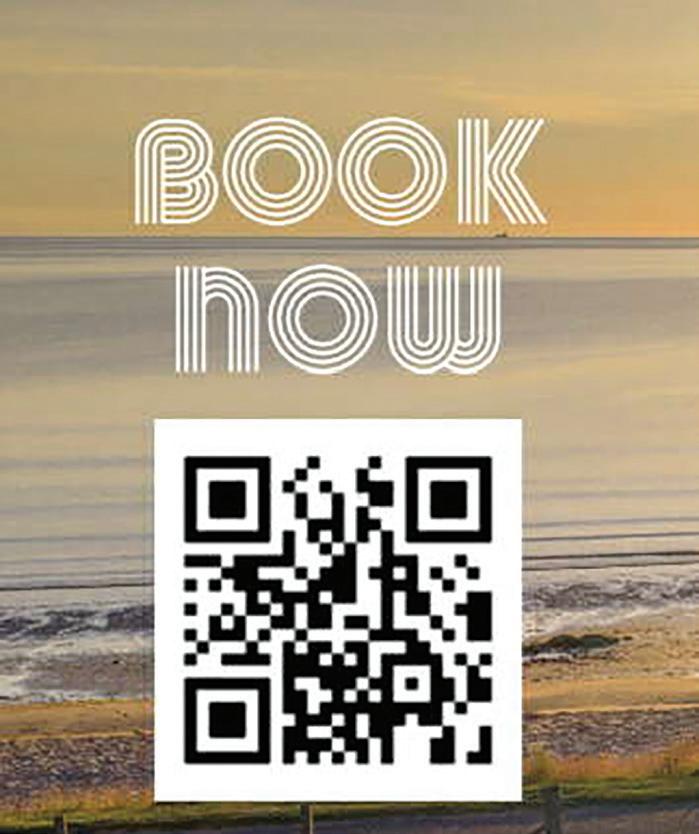
IRIS PRITCHARD FeatUres Writer
quite international, many students are not well versed in Scottish Law. When asked if they knew what their rights were as tenants all students interviewed stated they did not. So, what does the law actually say?
The whispers typically start in midNovember. “Did you hear they signed a flat already?” and “Yeah I’m on every agency’s mailing list, but I’m so stressed.” Every year, students experience the scramble that is trying to find a flat. For all the commotion it causes, one might think that the flats in St Andrews are pristine. Instead, students are met with absent landlords, broken appliances and sky-high rent.

After viewing his flat in April, secondyear Jack James arrived to discover that the property did not match what he had seen at his viewing. “There were brown stains covering every single wall, furniture had been shattered and left with splinters across the room and black mold was visible on multiple appliances.”





Scottish law also allows for the designation of Rent Pressure Zones by local authorities. In a rent pressure zone, a cap is set for how much rent can increase for existing tenants. However, there are not currently any rent pressure zones in Scotland.


private tenants must meet certain standards
standards include a working heating system, in proper working order. The complete

Under Scottish Law, tenants have extensive and outlined rights. When it comes to broken appliances and unresponsive landlords, tenants are protected by the Repairing Standard. According to the Repairing Standard, properties rented by private tenants must meet certain standards and it is the responsibility of the landlord to ensure these standards are met. These standards include a working heating system, a safe place to store food and electrical devices in proper working order. The complete order can be found on the gov.scot website.


“Formal channels exist to force landlords to comply with the repairing standard.”


are without proper care, Cllr. Jane Ann Liston said, “landlords are supposed to be responsible and should all be registered with the council.” She also advocated for the need for more houses in St. Andrews. Development however, comes with its own set of issues, she explained. When a developer wants to build new housing, 25% of said housing is supposed to be “affordable.” If the housing is meant for students or retirees, the 25% rule does not apply. This means that any possible new housing may still be unaffordable for students.



Amy Allan arrived at her flat to find that the heating didn’t work. “I couldn’t go to bed because I would shiver throughout the night,” she said. While the landlords fixed the heating after about a week, her fridge and washing machine remain broken and she has been living off of “three socks”. “Individual socks,” she clarified, “not even pairs.”



Even more upsetting were the responses students received from their landlords and letting agencies. James’s landlord “refused to fix any of the property damage and instead offered to remove,” and not reinstall, “basic appliances such as the couch and microwave.” Allan described her letting agencies’ responses as, “unhelpful and unprofessional.”
find that when appliances break in their channels exist to force landlords to comply





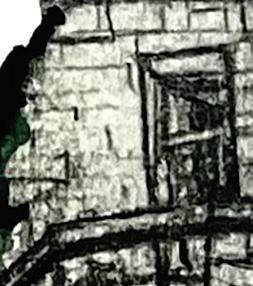
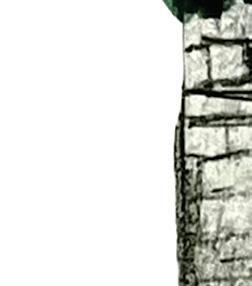
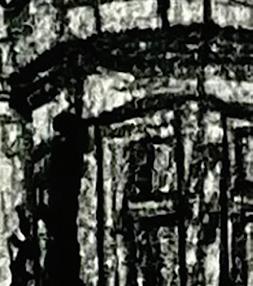

(Housing and Property determination.
Despite the law, many students still find that when appliances break in their flats, landlords are not quick to act. Formal channels exist to force landlords to comply with the repairing standard. Tenants can apply to the FTT (Housing and Property Chamber) for a determination. The FTT

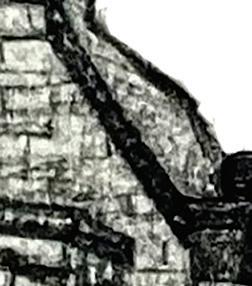
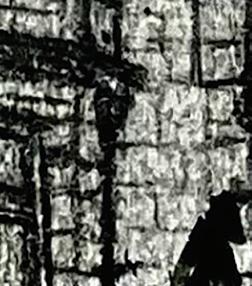
means that any possible new housing

Multiple Occupation’ (HMO) restrictions

Second-year Emma Eaton emailed her

Second-year Emma Eaton emailed her agency about a mold infestation only for them to stop responding.“They said they couldn’t clean any of the mold up,” she recalled. “They said it was our fault, somehow.”
clean any of the mold up,” she recalled.
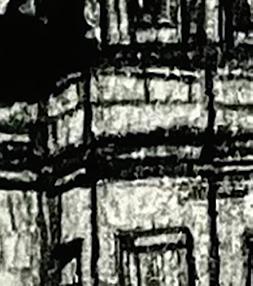
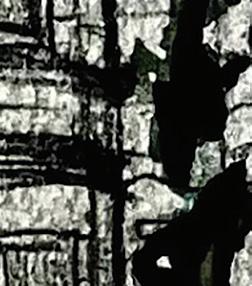

“They said it was our fault, somehow.”

Despite the conditions detailed above, student rent in St Andrews is still quite high. According to home.co.uk, the average property rent for a one bedroom in St. Andrews is £1,148 — significantly higher than the national average of Scotland which is £710 as of 2024 (according to the Scottish government).


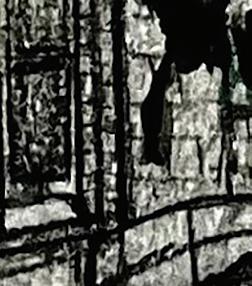

As the student body of St. Andrews is


So the question becomes, is there a
So the question becomes, is there a more permanent solution to these issues?

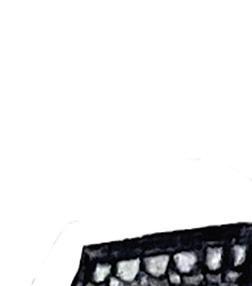
The town of St. Andrews has local

these Councilors to represent the interests of their ward and constituents. The councilors

The town of St. Andrews has local representation in the form of its local councils. It is the job of these Councilors to represent the interests of their ward and constituents. The councilors who oversee St. Andrews say they have taken steps to try to aid student tenants.




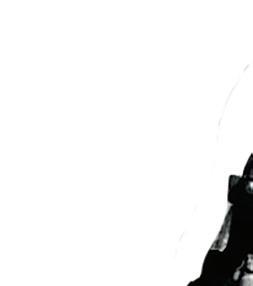
steps to try to aid student tenants.
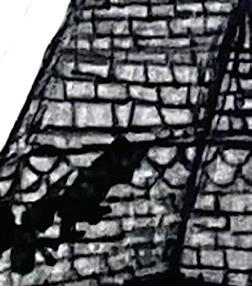
will consider cases and may enforce repairs by issuing a Repairing Standard Enforcement Order. This law has been in effect since March of 2024 and yet students still deal with unlawful living conditions and absent landlords and letting agencies.
An HMO is a property occupied by three family. Restrictions on HMOs mean that landlords may be renting properties with three bedrooms or more to only two students when the
Cllr. Al Clark credited ‘Houses in Multiple Occupation’ (HMO) restrictions with the high price of rent in St. Andrews. An HMO is a property occupied by three or more people who are not from a single family. Restrictions on HMOs mean that landlords may be renting properties with three bedrooms or more to only two students when the house is suitable for more. To rent an HMO, landlords must apply for a license and planning permission which leads many to only rent two bedroom properties.













apply for a license and planning permission which leads many to only rent two bedroom properties.



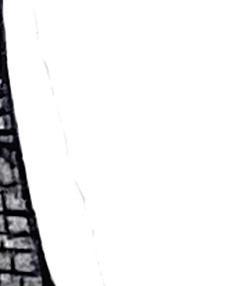

Councilor

Councilor
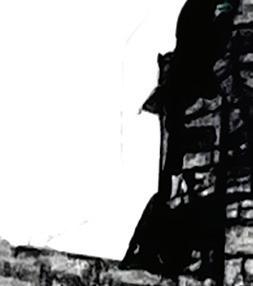

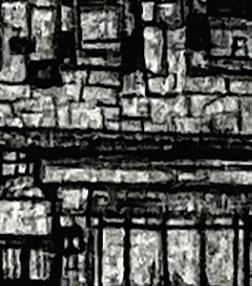
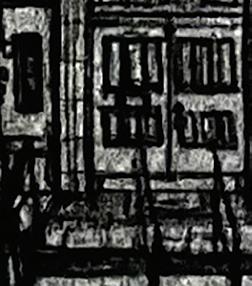





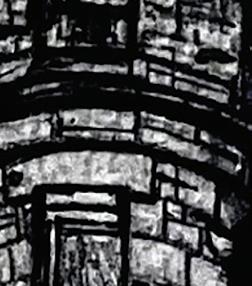
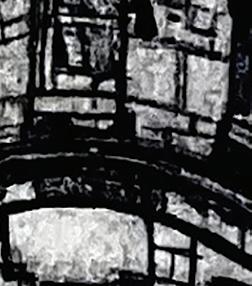
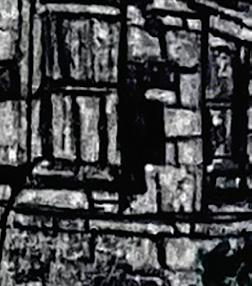

(Cllr.) Robin Lawson has campaigned for more student accommodation in recent years. By last year, “there was a surplus of space available in halls,” he said. When asked what the role of the council should be in helping students who







an St Andrews and reduce the amount of accommodation available to students,” Cllr.



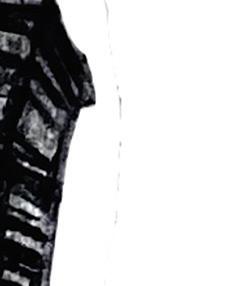


push the council to review their regulations to support students,” he explained, looking to change the current rules which limit



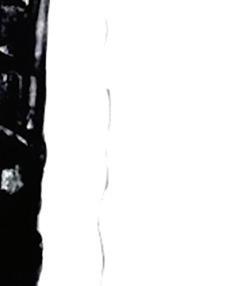
reduce the overall housing stock available for the rental market.

“These restrictions cause an increase in the rents in St Andrews and reduce the amount of accommodation available to students,” Cllr. Clark said.“I have been trying to push the council to review their regulations to support students,” he explained, looking to change the current rules which limit opportunities for students and reduce the overall housing stock available for the rental market.




Despite all of these initiatives, little has changed in






incredibly high in comparison to other areas in the country and students consistently face issues.
Despite all of these initiatives, little has changed in St Andrews. Rent has remained incredibly high in comparison to other areas in the country and students consistently face issues.




“As one of the local members






“As one of the local members of St Andrews I’d be delighted to take up cases if students wish to bring them,” Cllr. Liston offered. Perhaps this is the new channel for students to resolve issues with landlords. After all, as members of the community, the council is here to protect student interests.
to take up cases if students wish to bring them,” Cllr. Liston offered. Perhaps this is the new channel for






Illustration by Piper Dooley

PUZZLES@THESAINT.SCOT
@THESAINTSTA
ORANJE
THESAINT.SCOT/PUZZLES 02 OCTOBER 2025
ACROSS
1. Most besieged place in Britain
13. Virginia, USA
14. Usty___ plateau, located in Central Asia
15. Earhart’s last known landing spot
16. Freezing precipitation
17. Adam & ___
19. One sausage-wrapped delicacy fit for a nest
21. Novel by Stephen King
22. Tempo
23. Plural ending added to nouns ending in S, SH, CH, X, Z, or O
24. Known as the ‘Founder of Capitalism’
27. One of 650 in the House of Commons
28. Water purification process (abbr.)
30. Exclamation of surprise
31. Where Graham Bell invented the telephone
32. Japanese-American cosmetics brand
35. Maryland student athlete, for short
36. Plural pronoun
37. Immediately following April
38. Exclamation of frustration
39. Sunburn salves
40. About; concerning (often in emails)
41. A fit of irritation
43. Atomic number 71 on the periodic table
44. Half a casual goodbye, maybe?
45. Alien vessel
47. Tallow sources
50. 1992 album from The Outfield
CROSSWORD BY MadeLeine ABignaLe WORD LADDERS BY LUana van OranJe SPELLING BEE BY LUana v. OranJe
Change one letter per step (using real words) to turn the first word into the last LOCH
Make 4+ letter words using the given letters. Words must use the center letter, letters can repeat
55. Wasikowska of Alice in Wonderland
56. Enrich, as table salt, in America
58. Muscle worked in bodybuilding
59. Whiskey-based cocktail sharing a name with a novel title written by 67-across
60. Indigo source
61. Battery size
62. “... or ___ just me?”
64. Acquire
65. Jr.’s father
66. Hardware unit that converts alternating current (AC) to direct current (DC)
67. Scottish poet born in 1771
DOWN 1. New Year’s ___
2. Philosopher with the quote: “A wise man proportions his belief to the evidence.”
3. This sounds modern, but it is all Greek to us
4. Metal tubas are made of
5. Old musical syllables
6. Lords over someone
7. What baby chicks do
8. Singer Winans, sister to BeBe
9. Name for the traditional combination of heart, liver, and lungs used in haggis
10. Links in a social media post
11. A free party or show provided for publicity
12. Spanish ‘the’
18. GPS estimation
20. Inflation measure
24. ___ in ‘apple’
25. Alternate name for Queen of Scots
26. Third-largest art museum in the world
27. Ethic
28. Crew member
29. Singles
31. To ___ or not to ___
33. Egyptian sun god
34. Tit for ___
35. The world’s largest performing arts festival, held annually in August
40. ‘Call Me Maybe’ singer Carly ___ Jepsen
42. Dundee denial
46. More drippy
47. Transylvania city, home to the Bridge of Lies
48. Egyptian queen and wife of the Egyptian pharaoh Amenhotep III circa. 1380 BC
49. Alors... en anglais
51. Founders of Milan
52. American environmental agency
53. Bread baking necessity
54. Cocteau’s Le Grand ___
55. What often grows between damp cobblestones or on tree bark
57. Russian “yes”
59. Tear
63. Actor Pacino of The Godfather
SUDOKU BY IsaaC OLdhaM MINI CROSSWORD BY MadeLeine ABignaLe
CONNECTIONS BY JULia EMerY
Find groups of four items that have something in common

EDITOR: MANRAJ GILL
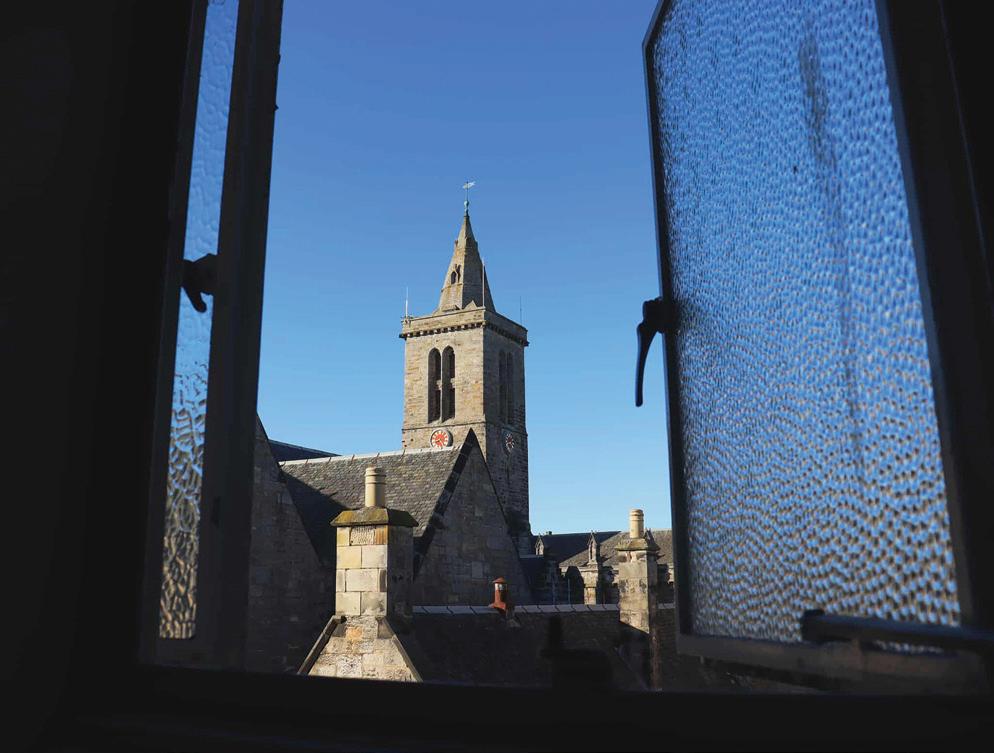
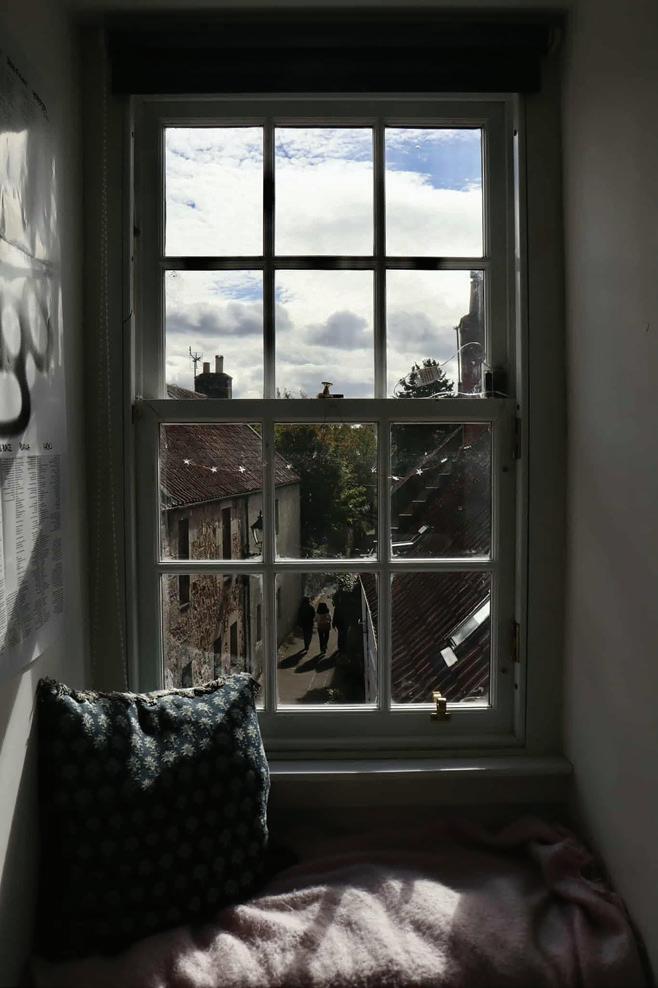



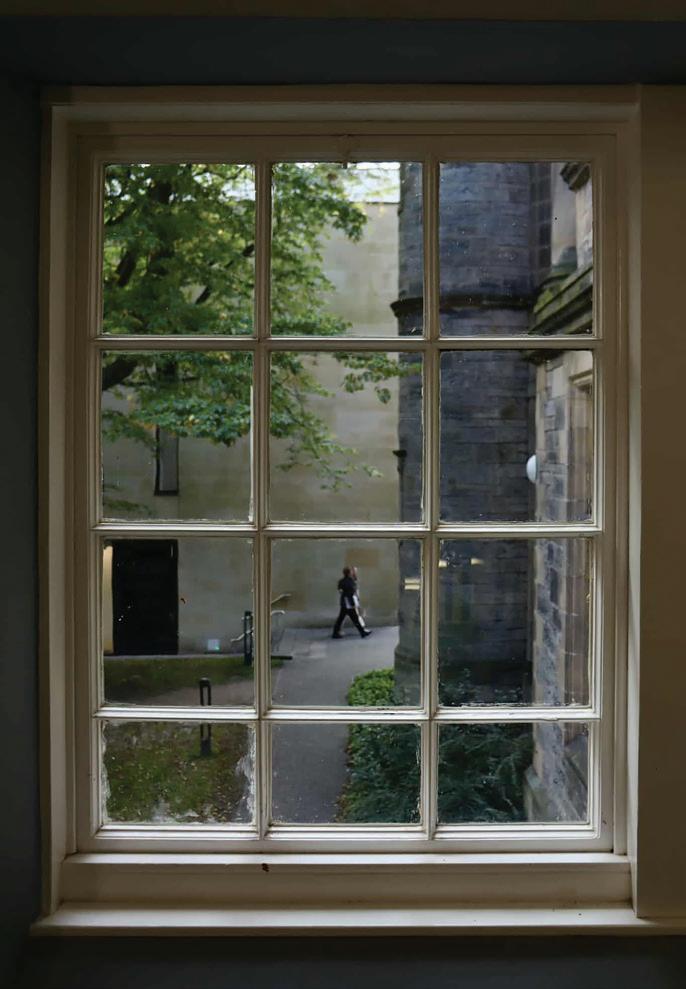
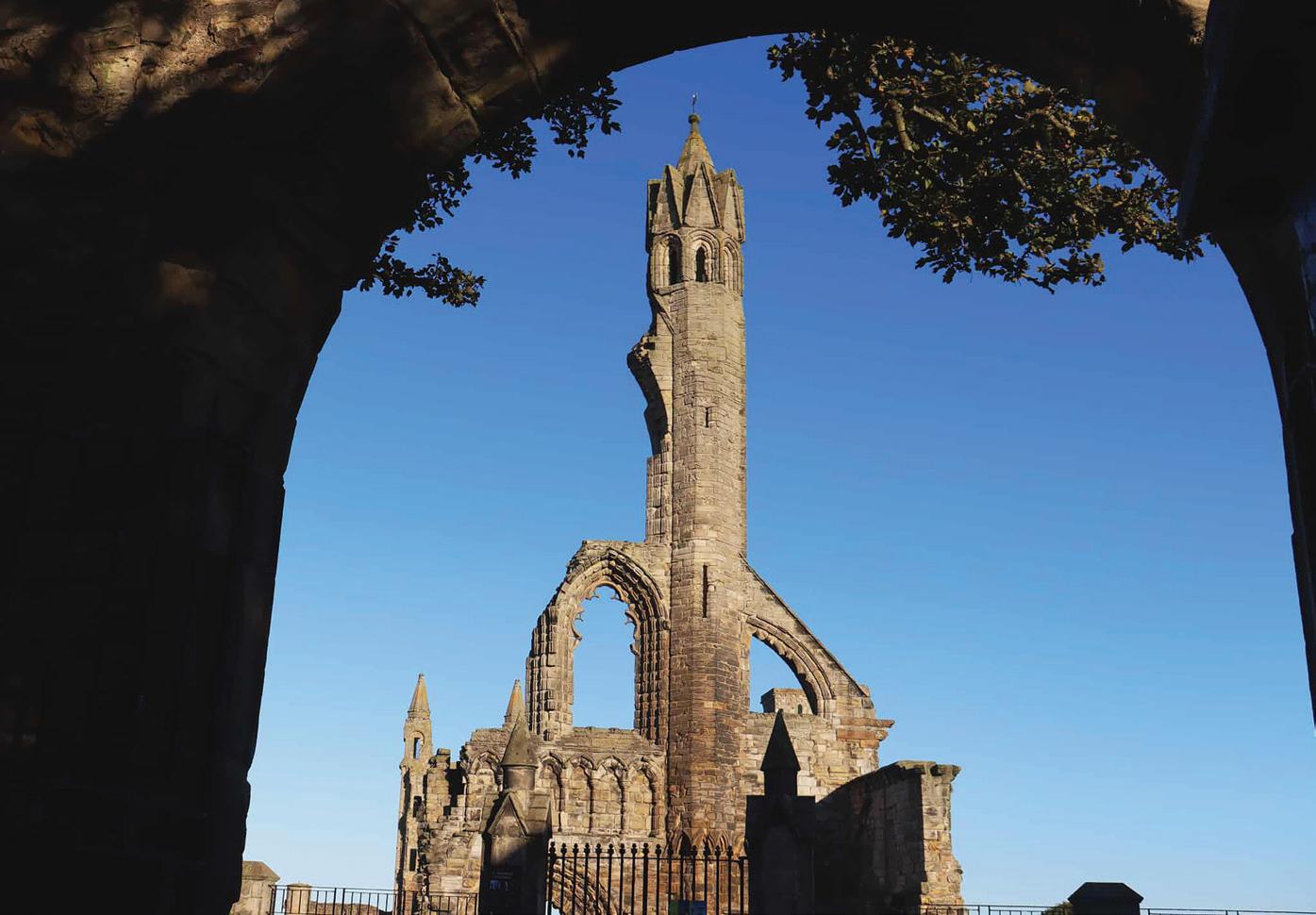
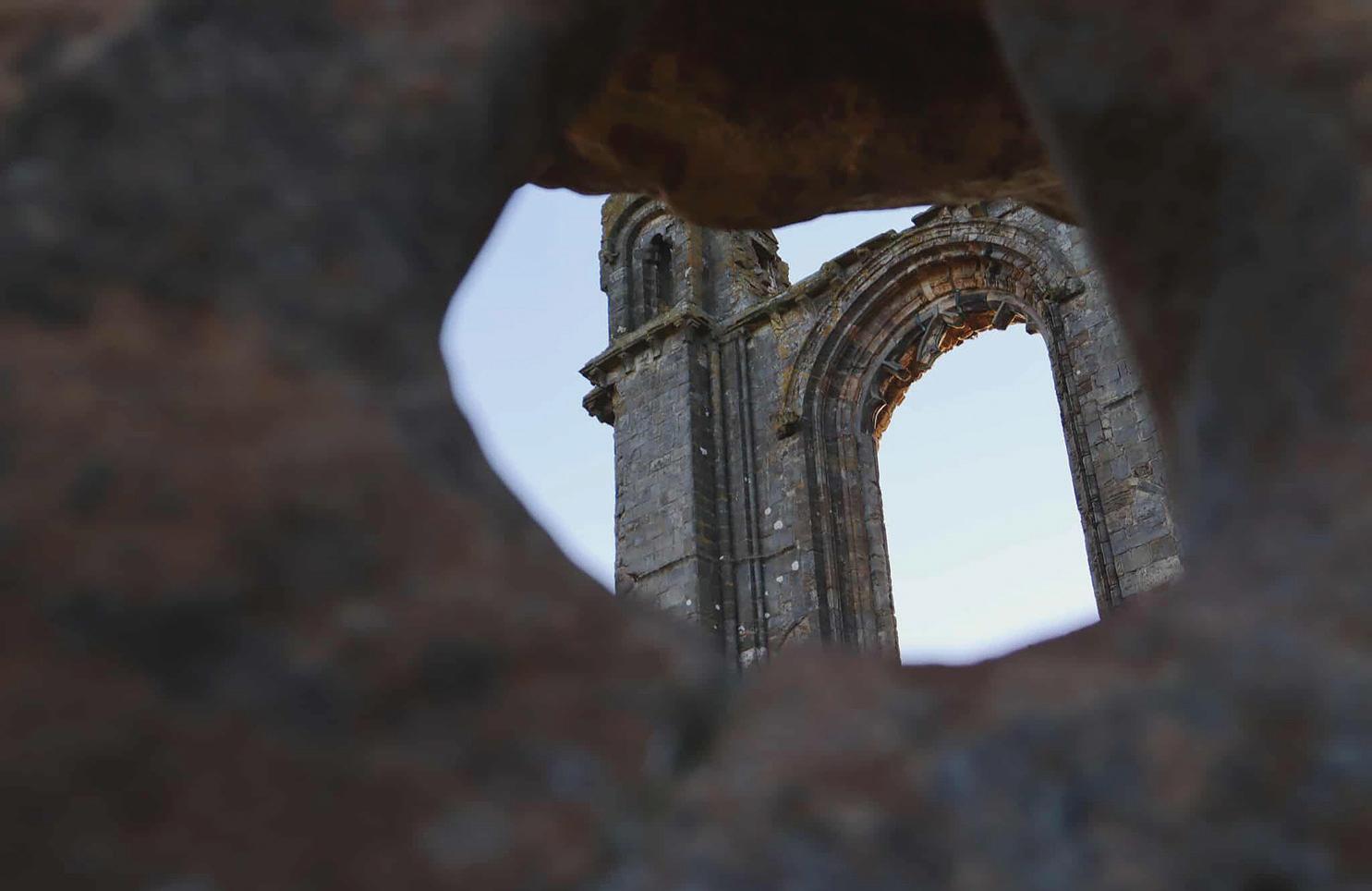
CHRISTOPHER KELLY-BROWN Photographer


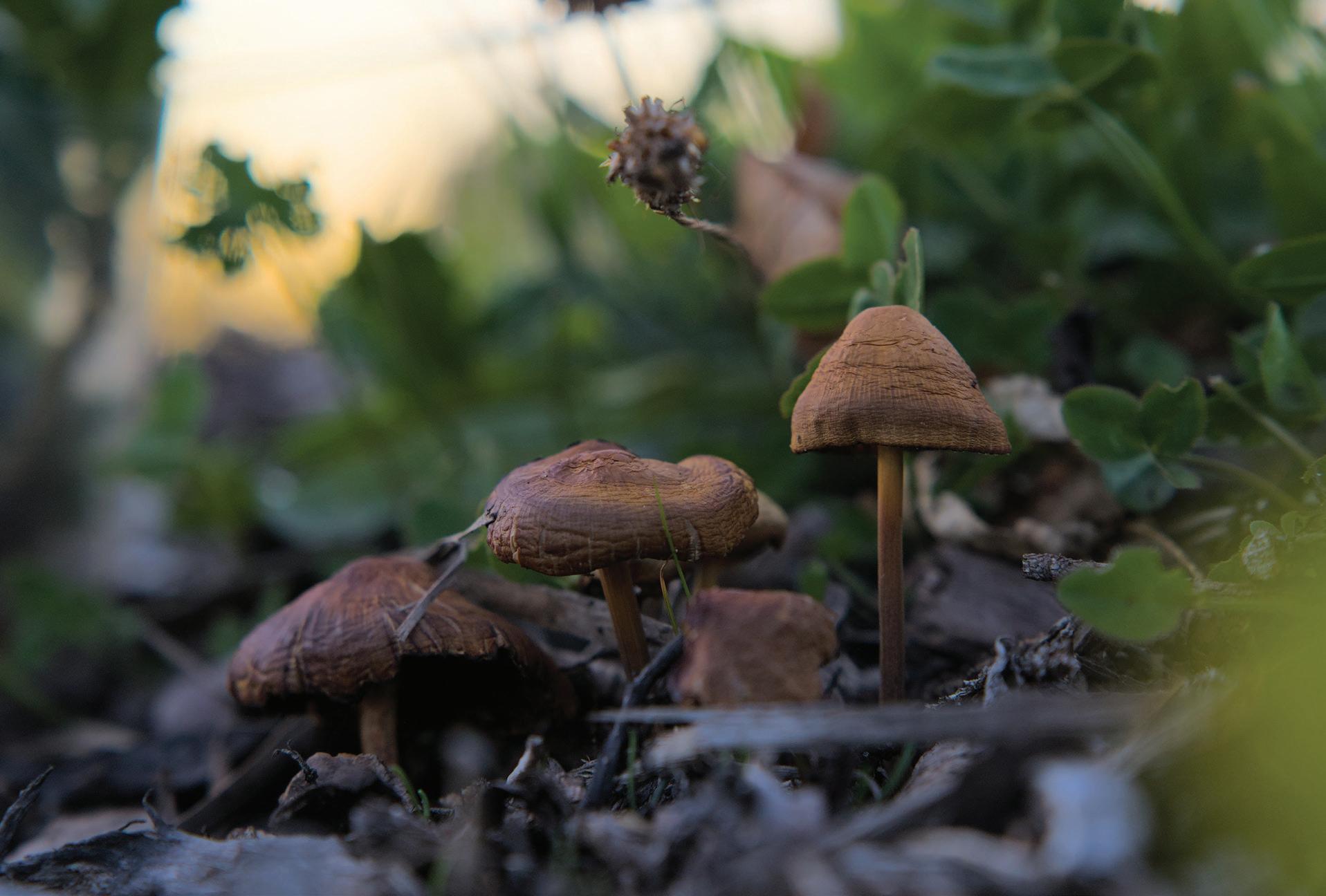

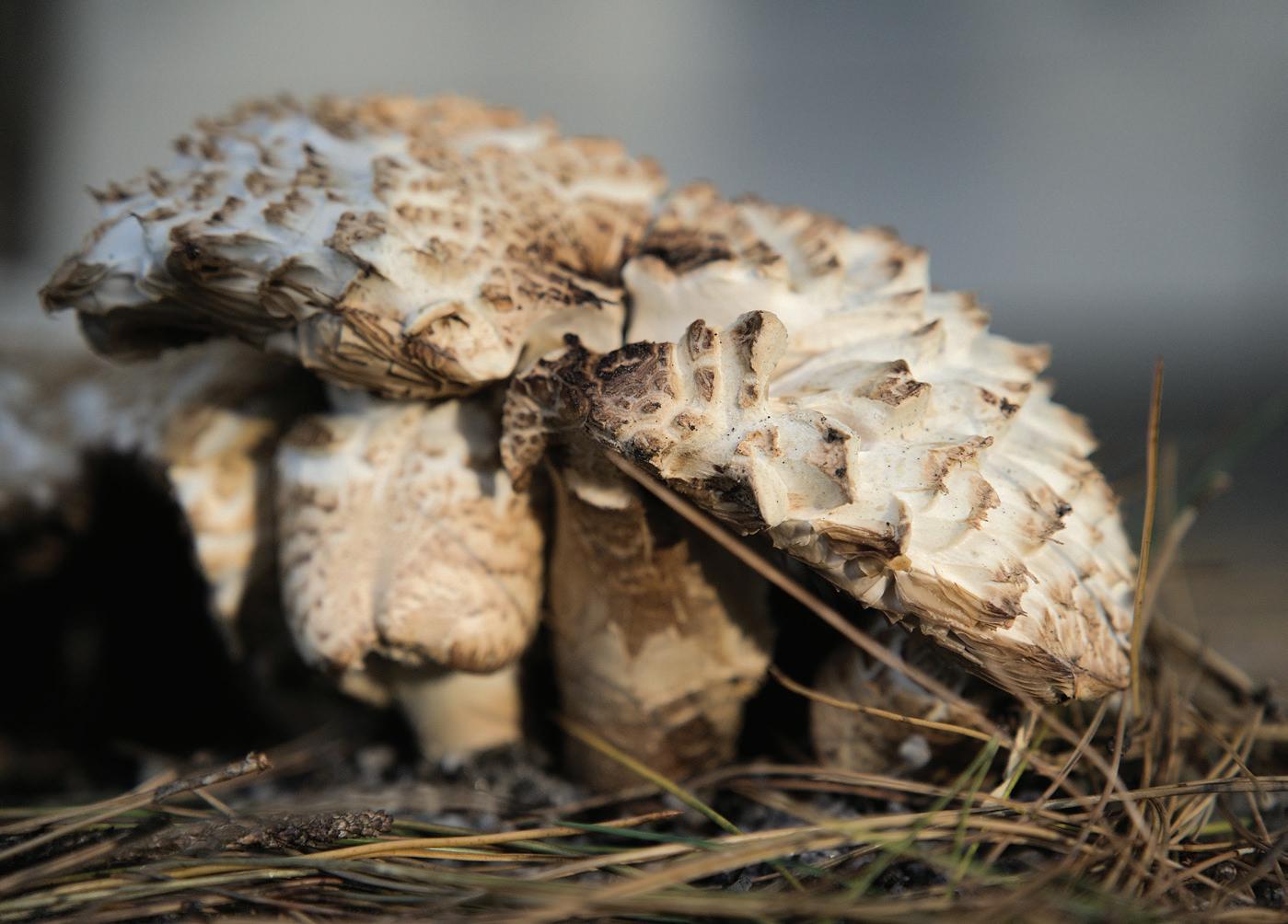
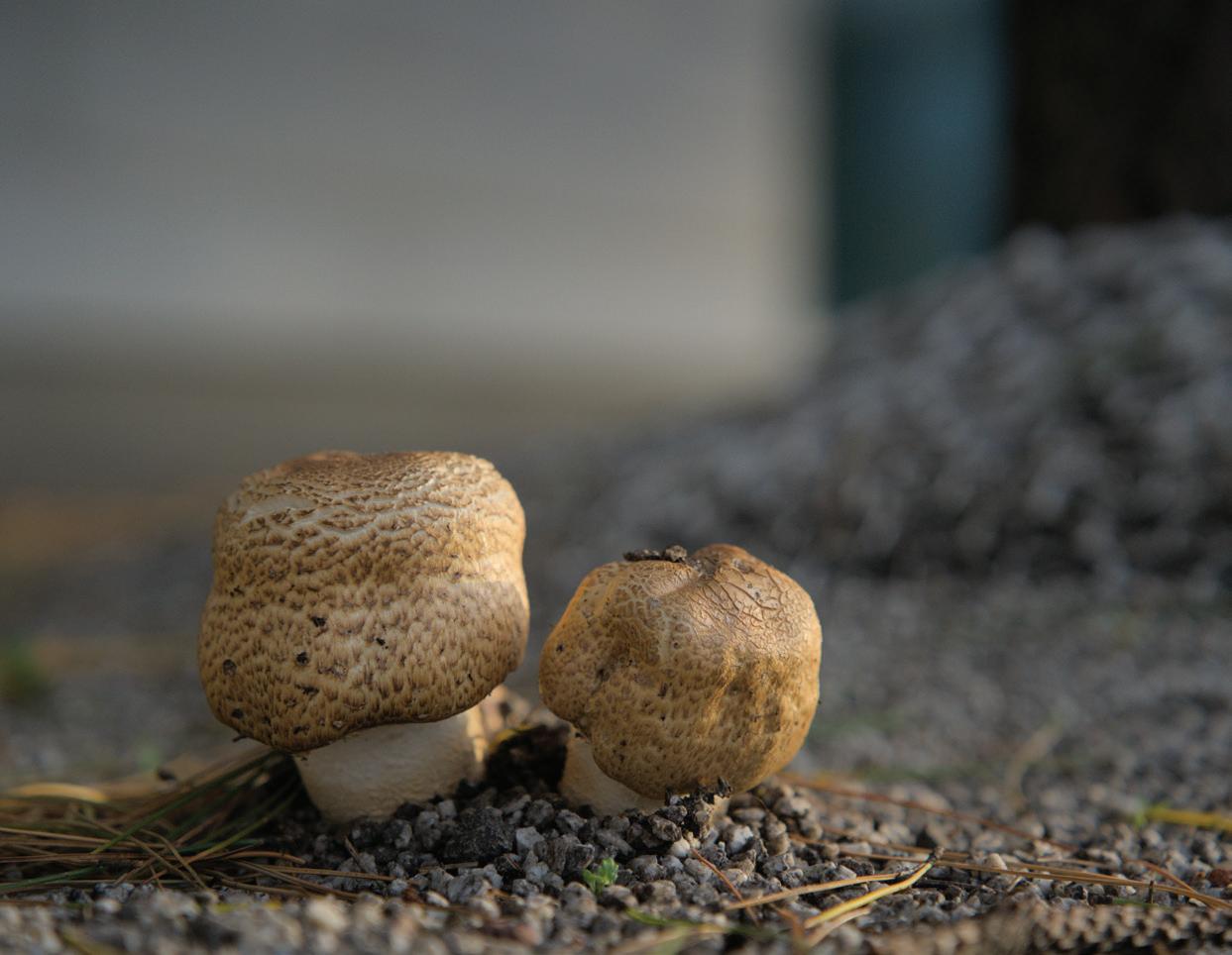





EDITOR: ANNA-MARIE REGNER

ALIX RAMILLON ReLiC Writer
I recently rewatched Jûzô Itami’s 1985 movie Tampopo, a classic movie about the mediation of food and human existence. Tampopo’s noodle shop becomes a ‘community project’, where eating ramen is not just about flavour — but posture, timing, and ritual. The ramen master teaches how to approach the bowl, and caress the pork, apologise to the noodles, and savour slowly. This encapsulates the bodily intentionality of eating and its sensuality through gestures, attention, and comportment and more importantly, intentionality. If food is sine qua non necessary for living our future, in fact, smells and tastes are associated with certain past memories of us at a precise time. Since coming back to St Andrews from my study abroad, I have been feeling post-exchange nostalgia for my moments of solitary bliss roaming street food markets. Hong Kong beef brisket noodles, pineapple buns and kaya toast, stinky tofu, chicken feet, shrimp, roasted duck, shitake mushrooms, salted quail and cabbage, Taiwanese scallion pancakes — a strong combination of smells from my everyday walk around the city. In Japan, the taste of miso rolls and folds under the tongue of algae and yuzu. In Thailand, fresh coconut, roasted peanuts, lime, and chili. In Korea, fermented and pickled condiments, the pungent smell of Durian in Singapore and Vietnam, with softer scents of coriander and chutneys in comforting broths. A year ago, I used to be content and grateful for being able to consume food, but I realised I never fully grasped the extent to which it could shape my life, thoughts, and memories as in these precise moments of travel. In Hong Kong and in my travels, I was overwhelmed by an array of new senses and emotions, and with that, my olfactory system expanded, and so did my focus on noticing the smaller, more benign and mundane movements. The details of streets and night markets appeared to be more ephemeral, with the stalls haloing around the neon of Kowloon lights and the sounds of voices and cars reverberating around the city. Stalls of food were stretching out diametrically under the skyscrapers, sounds muffled from under there, which almost created an optical illusion amongst the dense crowds. With my tasting, my hunger grew, and with it, novel taste combinations to my palate. I started snacking, slowing down when munching, tasting new and sur-




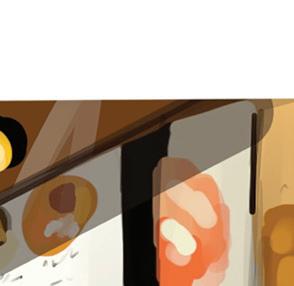


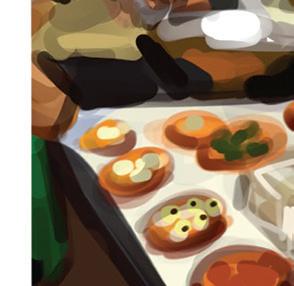


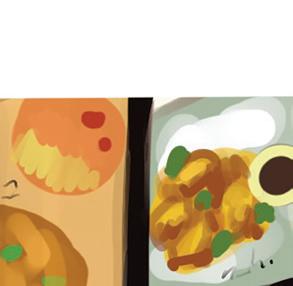
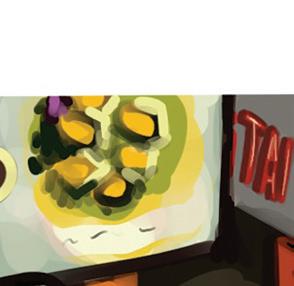
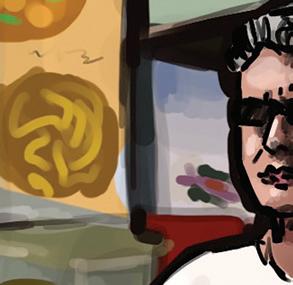
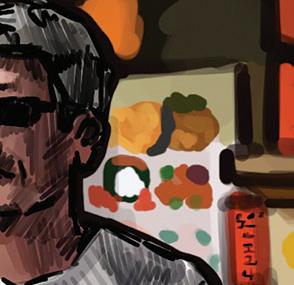

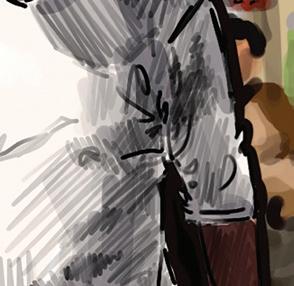
BY AGNES BRENNA




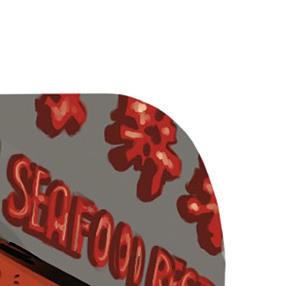









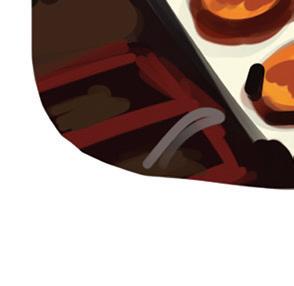


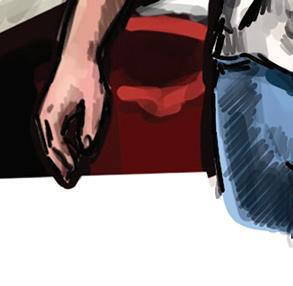
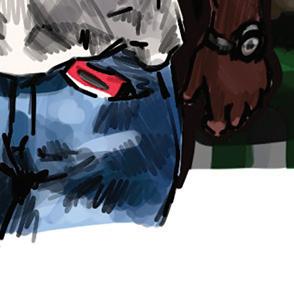
prising combinations, and noting them down. Smelling the kitchens and the broths around me rather than focusing only on my dish, the burning oil crackling, the Sichuan sauces and spices. Observing families sharing different plates, nodding in content, sipping tea, and moving noodles into their child’s plate. How food was handed to you on paper, still steaming, pressed into your palm with a nod. Eating became more than the experience of sitting at a table and responding to my hunger…to move beyond maps and monuments into the lived texture of a place. It felt to me like an avantgout taste of centuries of wisely crafted meals, historically charged, and ways of knowing and transmitting information to an external and foreign eye. In Hanoi, I sat at Anthony Bourdain’s famous bun cha hotspot while conversing with Obama and was thinking about how many people have sat at that exact same spot over the past decades, all hoping to experience life for a fraction of hours like him. It reminded me of my childhood, where I would watch Parts Unknown on the TV as a child and dream of achieving that curated level of exploration. “If you’re twenty-two, physically fit, hungry to learn and be better, I urge you to travel — as far and as widely as possible. Sleep on floors if you have to.”





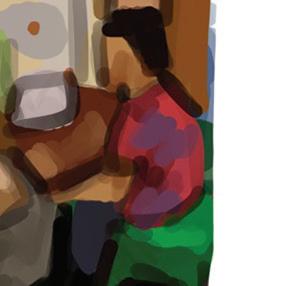











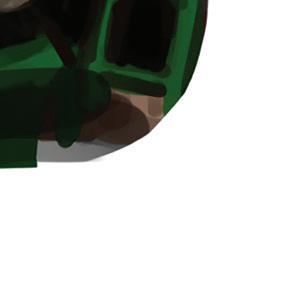
Bourdain had it right — Existence or being is finite and temporary, but we rarely appreciate how it is and even less allow ourselves to eat our ‘Madeleine de Proust’ and build onto old memories. I think in many ways that is Bourdain’s legacy and why his words resonate posthumously through a young audience. As our world’s array of opportunities is expanding, with it, so is our conception of time. How many people in the world have time to actually intentionally enjoy their meals through their bodies’ natural hunger, and not through a clock, an agenda, or a schedule?
Precisely because Bourdain recognised the interconnections between different meals, and how they provided an escape in the warm folds of daily lives and society, enjoying a meal is the only concession that we get in the daily chaos of our lives. It enables us to be more capricious and self-indulgent and to avoid limiting our eating habits to the realm of ‘dinner’ or ‘lunch’” time because it provides a haven of peace and self-indulgence in a world that associates performance and productivity with existence.
Illustration by Lyla RitZler
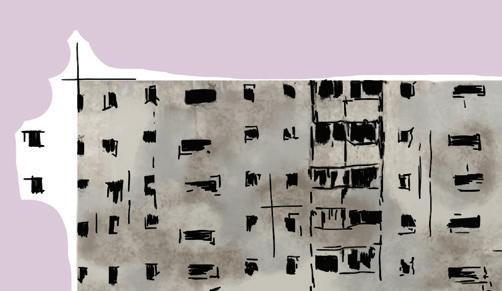
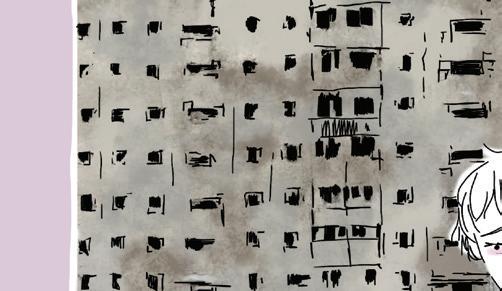

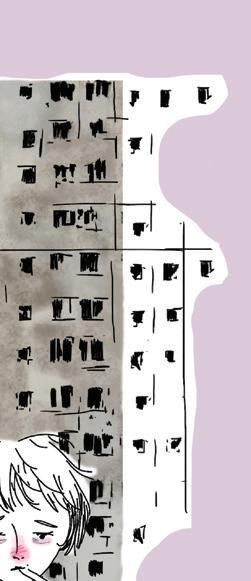



reached the first hills of the Italic Mountains, she
On 7 September, I took a plane from Oslo to Edinburgh, followed by an equally long bus ride to St. Andrews —to begin my highly self-anticipated study-abroad semester. For months I had honed my English on Donna Tartt, Evelyn Waugh and The Crown, each feeding into my picturesque vision of university life. However, already in my first week I would fall sick with the lesser known freshers flu: ‘The St Andrews Syndrome.’ A refurbished version of the Paris Syndrome, mild psychiatric symptoms emerge when reality collides with your romanticised vision of the campus tourist trap. It started brewing the very first night. I was sleeping in a room that was ceiling-rose-free, and communal-carpet-full. My hall looked far more communist than aristocratic, and had a slight smell of cabbage. The following day I pub-crawled a few chain-cafés, since the tables at the two “authentic” ones were full. As I hit the social scene, the symptoms started worsening. I had imagined a set of slightly arrogant Scots drenched in corduroy, dazzled by my thick Norwegian accent. But I was far from being an exotic commodity; I was an additional face in the non-Scottish majority. My fellow students and hallmates were not what I had envisioned either: they were frustratingly nice, American and eighteen. The romantic prospects were bleak; I was lumped in with the teenage freshers, whose eyes widened when they heard me utter my ripe age of 22. Finally, I decided that a self-diagnosed syndrome deserved a self-made cure. My prescription will consist of some mutated expectations and a deliberate hunt for the distinctive strangeness and beauty of St Andreanity – through this mini-column. Bound to report on my experience here every-other week, I am thankfully obliged to give this hide-and-seek a proper try. made her drunk with Longe and Parole and dragged her into their agency, where they abused her for their projects again and again. And if she hasn’t been rewritten, then they are still using her. Far far away, behind the word mountains, far from the countries Vokalia and Consonantia, there live the blind texts. Separated they live in Bookmarksgrove right at the coast of the Semantics, a large language ocean. A small river named Duden flows by their place and supplies it with the necessary regelialia. It is a paradisematic country, in which roasted parts of sentences fly into your mouth. Even the all-powerful Pointing has no control about the blind texts it is an almost unorthographic life One day however a small line of blind text by the name of Lorem Ipsum decided to leave for the far World of Grammar. The Big Oxmox advised her not to do so, because there were thousands of bad Commas, wild Question Marks and devious Semikoli, but the Little Blind Text didn’t listen. She packed her seven versalia, put her initial into the belt and made herself on the way. When she reached the first hills of the Italic Mountains, she had a last view.

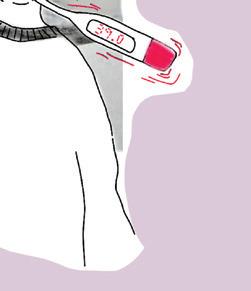
Looking for your next read? The Saint and Topping & Co. have come together to save the day. Find below the best festive stories, all books are available locally in store.


Mikey recommends... Imagined Selves by Willa Muir
This volume collates five works, both fiction and non-fiction, of Willa Muir, St Andrews alumnus and one of Scotland’s most celebrated and erudite woman writers. She and her husband, poet Edwin Muir, were the first to translate Kafka’s writings into English, and their work in translation introduced English-speaking audiences to many great German writers for the first time. Her own writings, though, display enormous range and literary flair. Imagined Selves includes three of her fierce and discursive feminist cultural essays, and her two novels, all of which are deeply rooted in Scottish culture and literary tradition. Though she often diminished her own work to bolster that of her more famous husband, Willa Muir’s distinct voice is indispensable to the Scottish literary canon.
Lucas recommends...
Rabbits by Hugo Rifkind
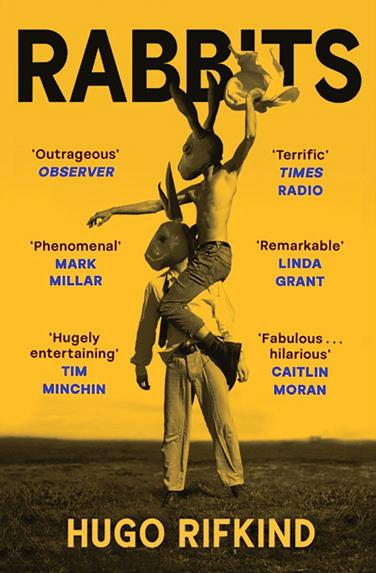
Rabbits by Hugo Rifkind is a hilarious new dark comedy novel that hooked me immediately. It ties a murder mystery with a Saltburn-esque coming of age story. But the real power of Rabbits is how it balances its dark humor with genuine empathy, never falling into cheap cynicism. Tommo, who we follow from boarding school to university, is a brilliant protagonist, evolving as a character across the ‘90s. It also revels in its Scottish setting and a through-line in the novel is the vanishing culture of the Scottish aristocracy. I’ve never read a book filled with so much simultaneous humor and loss.
Sam recommends...
Gliff by Ali Smith
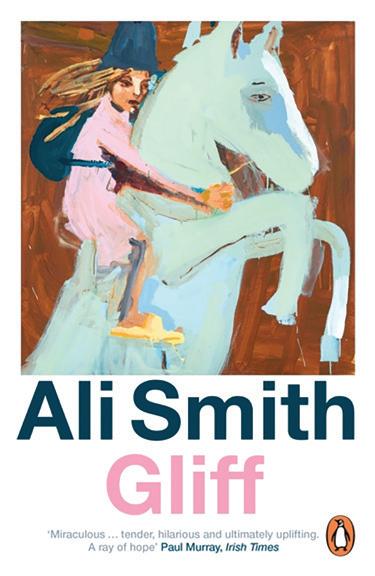
Ali Smith, born in Inverness, has been a longstanding mainstay in the world of contemporary literature. She’s found success with multiple novels over the past, perhaps most notably How to Be Both, which was shortlisted for the Man Booker Prize in 2014 and which won that year’s Goldsmith Prize. Her most recent release, however, confronts the top-of-mind ills of this decade: Gliff sets up a disconcerting tech dystopia, one of boundaries and surveillance, through which two children must move. Briar and Rose have had their mother stolen, been labelled an unsocial threat by the English government, and are being compelled to comply with rampant digitalization. The adventure that ensues is a jewel in the crown of contemporary and Scottish literature, and is undoubtedly worth picking up.
SOPHIE LYNN ReLiC Writer
In recent years, folk music has found a new home on the big screen. Once confined to niche folk horror films and local stages, it’s now playing a central role in films that explore memory, identity, and belonging. The latest example is The History of Sound, released in the United States in September and in the United Kingdom in January.
The History of Sound follows two young men, Lionel (Paul Mescal) and David (Josh O’Connor), who fall in love while recording the lives and music of their American countrymen in the shadow of the Great War. The film uses its soundtrack of traditional folk music to heighten the story’s themes of love, loss, and what music can mean when you’re far from home. In one of the opening scenes, Lionel hears David singing a song from Kentucky (his home) from across the bar. Lionel, who hasn’t been home in years, is moved by hearing the song once again, so he approaches David, and the plot develops from there.
This moment leans into a familiar cinematic trope: the use of folk music as a trigger for characters to confront their memories and/or displacement. Throughout film history, the use of folk songs can signal to the audience that a character is being emotionally pulled back toward a place or identity they can no longer access, whether geographically or temporally. The use of this trope continues throughout The History of Sound, and it deepens as the story unfolds, culminating in a memorable ending.














ty, before I transferred to St Andrews, when I felt the 3,000-kilometre distance between my hometown and my university very acutely. One of the only things that tempered my homesickness was a university radio show, which played a range of folk music across time. Hearing ‘Rocky Mountain High,’ a song about the region where I grew up, on the show stirred a deep sense of connection to home, despite being thousands of kilometres away.
“Everyone brings their own tunes from where they’re from.”







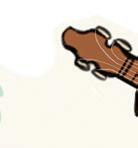











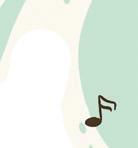































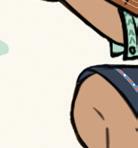
















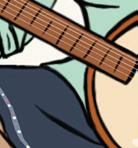
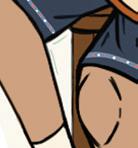
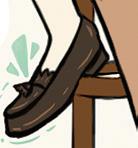

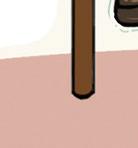


But folk music has always been about more than melody. It’s about memory, community, and place. Because traditional folk music is so deeply tied to the regions it comes from, it has the unique power to locate a person within a specific sonic history that might not be otherwise accessible. This regional specificity exists in part because many traditional folk songs are passed down orally, within families or tight-knit communities. These songs are often influenced by local dia- lects, landscapes, and histories, which makes them much more localised than most commodities or cuisines in this increasing- ly globalised world. When someone hears a melody from their home region, they can be reminded that no matter how far they’ve travelled, there are others out there who know the same songs and belong to the same shared history.




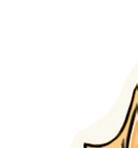

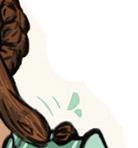

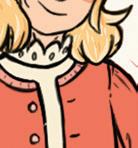
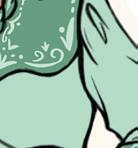

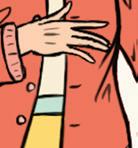
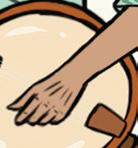
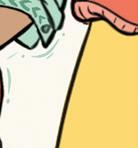
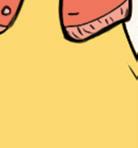
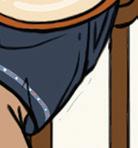
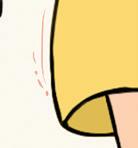
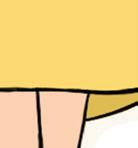

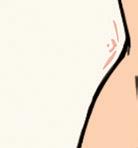

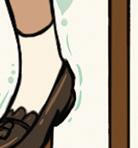

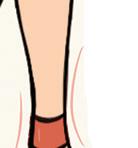
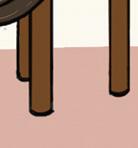



As university students, many of us are living far from home. I remember my first year of universi-










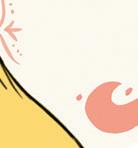































linto of-











This experience clearly isn’t unique to just me. It’s something shared by many students here at St Andrews, particularly among those at the St Andrews Folk and Trad Society, where traditional and folk music is played, taught, and passed on. Erin Dundas, the society’s publicity officer, spoke to her experience: “Everyone brings their own tunes from where they’re from. It does make me feel closer to home. It’s always nice to see someone come from where I’m from, and we can go, ‘oh my goodness, do you know this one?’ and we play it together, and it’s excellent.” What The History of Sound captures so effectively, and what resonates far beyond the screen, is the persistent pull of home. The film explores how folk music, with its deep ties to localised history, can function as a link between people and the places they’ve left behind. It doesn’t matter if it’s two characters in America or students gathering in Molly Malone’s: folk songs remind us that home isn’t always a fixed point on a map. In a world that often asks us to keep moving, folk mu- sic gers fer us something deeper and more enduring: a way back to who we were, and a connection to where we came from.

The St Andrews Folk & Trad Society meets every Sunday at 8pm in Molly Malone’s.








CARLA LONGO ReLiC Writer
Can mountains bring us together? Right now, in the Research Studio of the Wardlaw Museum, you can see an exhibition very close to my heart: Divine Summits: The Cultural Lives of Mediterranean Mountains. Since January of last year, my friend Victoria Jackson and I have been working with the museum and the School of Classics to explore the deep connection between mountain landscapes and cultural heritage, showing that protecting one often means protecting the other. Before this project, we had a story to tell — but no idea how to make it happen. Breaking into the museum world felt impossible. It’s often described as impenetrable, a place for insiders. But we decided to take one small step at a time. One day, Victoria spotted a call for exhibition proposals on the Wardlaw website. She texted me: “Let’s give it a try.” We didn’t expect much. The Wardlaw is historic and prestigious, and securing a space there seemed out of reach. But with nothing to lose, we submitted the proposal. Surprisingly, it got accepted. That night, we toasted in Regs’ dining hall.
As we dove into research, we discovered that one of the most important books on the topic, The Folds of Olympus: Mountains in Ancient Greek and Roman Culture, had been written by St Andrews professor Jason König. We reached out for reading suggestions and instead found a mentor.
He reviewed our materials, helped sharpen our ideas, and even secured funding.
Then came the documentary, an adventure all its own. We knew several St Andrews scholars whose research focuses on ecocriticism and the human–nature relationship, and they were excited to be interviewed. What we didn’t know was how to make a film. We needed a videographer, equipment, and a plan. Luckily, a friend from the Department of Film Studies stepped in. In May, squeezed between exams, we transformed professors’ offices and Classics classrooms into makeshift sets, hunting for the right backdrops, light, and questions to capture the heart of our project.
After collecting about an hour of raw footage, another talented friend took over the editing. She shaped the clips, colour graded, made the right cuts, and
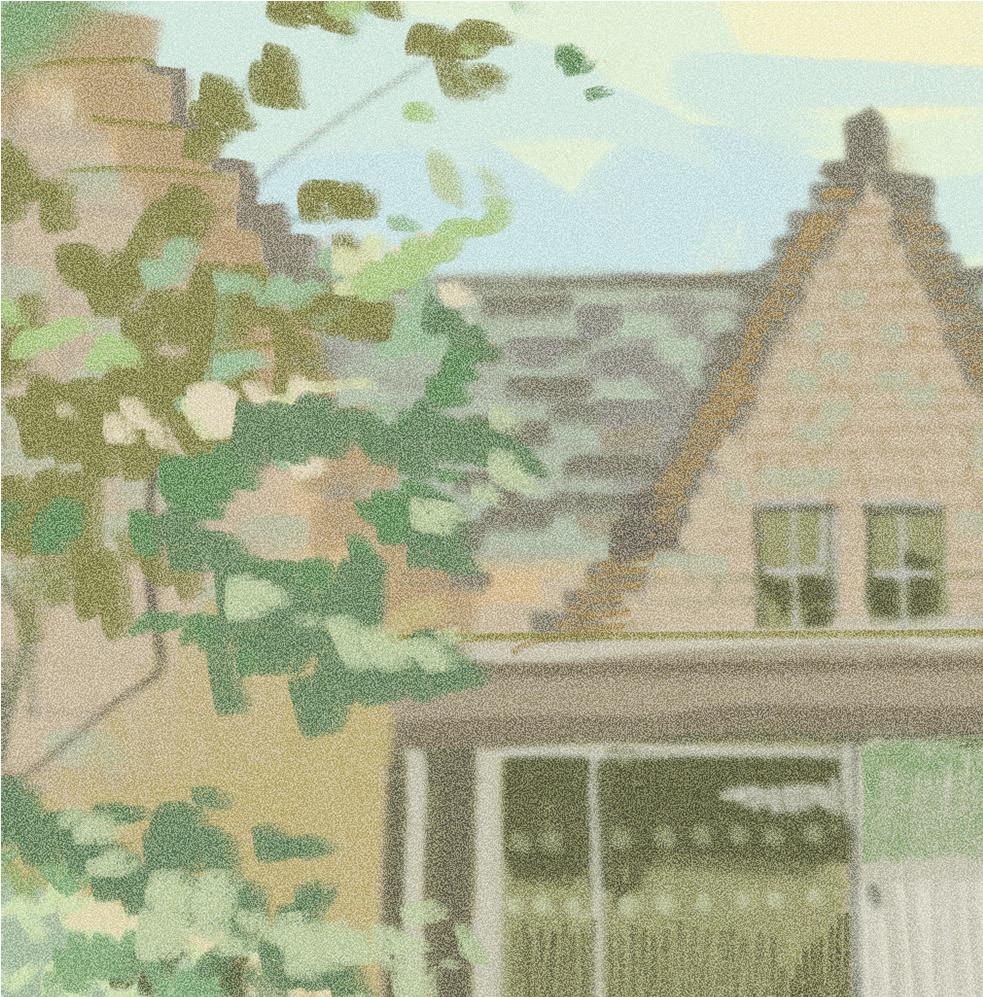
turned our messy hours of filming into a story that truly came alive. When it was finished, we were speechless. We had created something from nothing. Every late night, every frustrating moment, every tiny setback suddenly felt worth it.
The exhibition doesn’t stop at the documentary. It also features photographs and stories of mountain days submitted by students, family, and friends. We received dozens of images from across the globe — from South America and New Zealand to Italy, Scotland, and beyond. Some capture childhood memories or weekends spent with friends; others honour loved ones we have lost, like my uncle Fabrizio Longo, whose passion for the mountains I wanted to celebrate. Together, these stories and images wove a web of connection, linking all of us across time and space. And finally, all of this is


L v e i n t h e B u b b l e
This column, ‘Love in the Bubble,’ began exactly a year ago, on the first print issue of the 2024-25 academic year. The first column spoke of former romantic experiences in St Andrews, and one of its ending phrases read thus: “In these years, we encounter several people who will change us, with whom we genuinely resonate — they are worth holding onto.”
This issue’s column, however, may be somewhat different in tone — because what happens when we can’t hold onto those we love, or once did?
Say what you will about the St Andrews dating scene, the town is nonetheless one of the most picturesque places in which one can be in love. The romance and splendour of ruined castles, stony buildings and cloisters
in grassy quads all come to life when you can share their beauty with another. But a place conducive to love and romance can similarly stir up the dark underside of those very emotions; it is difficult to live here without feeling discontentment, envy, or longing.
When you start the year with a breakup, you’re thrust once more into a new solitude, facing uncertainty and the desire for approval in the absence of a person who once gave you that. And I do not believe we can ever think of places without first thinking of people or emotions. The period after a breakup in St Andrews can be confronting — being quite often faced, when walking through the aisles at Tesco, finding a seat in the library, waiting for coffee at Taste, by someone who used to repre-
“Every frustrating moment, every tiny setback suddenly felt worth it.”
ready for the whole St Andrews and beyond. I hope this article does more than share our exhibition — though we would be thrilled if you visited. I hope it shows that there is hope in telling our stories. That hope lives in community. Nothing we achieved would have been possible without the support of institutions and professors who believed in us, friends who volunteered countless hours, and everyone who contributed photos and memories. At a time when individualism is often glorified, I want to offer a different message. A path in the cultural world is possible, but only if we rely on others with kindness, trust, and generosity. This is what mathematician John Nash demonstrated when he challenged Adam Smith’s economic theories. While Smith argued that the best outcome comes when each individual pursues their own interest, Nash showed that the best results happen when everyone acts for themselves and for the group. Collaboration, he proved, shapes everything we do. Divine Summits is an invitation to reflect on how sharing our dreams does not diminish them. On the contrary, it turns them into reality.

sent some of the best aspects of this town. There is not much advice to be offered that is new or radical here. We know the mantras that time heals all wounds, we know to turn to our friends and loved ones. But what I think has been the most valuable experience so far has simply been learning to be alone again, rev- elling in a new introspection and clarity.
If you feel alone in St Andrews, here is all the advice I have to give — take a walk all the way down West Sands, turn around, stretch your arm in front of you and hold out your thumb against the faraway, floating view of this town. It is so small that your little thumb will cover it, engulf it completely. In this distant image is everything that makes up life here: romances, friendships, small dramas, and the like.
We so often see relationships as ways to better understand ourselves, to gain a sense of security amidst confusion. Standing on West Sands, the lives of thousands of people are reduced to a scene of buildings rising and falling by the sea. And there you are, looking from afar, and, for a moment, existing away from it all.

ALEX BRUBAKER ReLiC Writer
“I think we have a different vision of what a gig should look like,” says Leonardo (Leo) Arrigoni, the bassist for the popular student band, the Macaronis. As someone who frequents live music in St Andrews, I had already felt this. Watching them perform, they were beautifully loud, imperfect, and full of themselves. This was a deviation from what I was used to with student bands — polished, tame, and pretty. Though each band has their own unique character, bands in St Andrews generally tend toward pop, folk, and soft rock — think ‘Harvest Moon’ by Neil Young, or ‘Linger’ by the Cranberries. The Macaronis trade a gentle sway for a headbang, playing songs by the Rolling Stones, the Clash, or the Arctic Monkeys. At their gigs, there’s no possibility of talking over them: “I remember in our first gigs last year, people were complaining about our sound, because it was way too loud. It was literally destroying people’s ears,” Leo continued. “We didn’t really care […] more sound meant more energy.”
This group of second and third-year musicians met through a Signpost WhatsApp chat at the beginning of the last academic year. Since then, they have found an untapped niche of live rock music, amassed a loyal fanbase, and become a recognisable name around town. Their gigs, usually Signpost events at the Rule or Aikman’s, are almost always packed. They have a
strong social media presence, with an active Instagram account and collaborations with popular accounts like Overheardrews. Leo mentioned that, when he meets new
the Macaronis are trying out is working Students aren’t showing up to gigs to see technical perfection. Sometimes a solo is missed, or a song restarted. This isn’t for

people, some instantly recognise him as a member of the band. Some gig attendees are friends, but, as Leo says, most are faces none of them have seen before. Although everyone in the band is friendly and sociable, there’s something more that’s drawing in new people. The different style that
lack of ability (watch Leo play slap bass, or Daisy on keys), it’s an occasional side effect of the energy with which they play. “Ten minutes before a gig, we hype ourselves up, I don’t know, slap our backs or some s***. We’re super excited, like, adrenaline is
pumping, and we really want to be there.”
They’re having fun up there, and as an audience member, you see it. They mouth the words to the songs, smile at their friends in the audience, and dance with anyone who locks eyes with them in the cramped pub space. Engagement with a band is often what can transform the act from background music to the main attraction.
“What’s often overlooked is the fact that bands are putting on an act,” Leo says. “We all have our own personalities on stage, and we do it so that, I guess, one day we’ll be recognisable.”
Their stage presence, aside from the personality they put into their performance, is distinguishable by the colourful, spiky eye makeup they wear. “Kathryn, the band manager, was just like […], ‘It’s sick as f***, let’s do it. We look like ‘80s rock stars.’”
Though he mentions they have drawn criticism for this, Leo says, “We’re free to do whatever we want. If it looks cool, it looks cool.” Now, in their almost weekly gigs, it’s a distinct marker of their personal style, and a metaphor for their novelty in the St Andrews music scene.
By creating a campus presence and a stage act around something they love to do, the Macaronis have become St Andrews’ own miniature versions of rock stars. And their own enjoyment, radiating from them while performing, keeps people coming back. “We’re so obsessed with it,” Leo says. “We’re actually obsessed.”
Photo by Kathryn McRae
SYLVIA COVACI ReLiC
Writer
The first time I entered my dorm room, wrenching my way through its name-engraved wooden doorframe, I felt like an intruder. The resistance of the door was nearly forty pounds, and I tottered through the threshold with four bags in my arms, two bulky, clattering suitcases, a small silver key clutched between my fingertips and a belly full of fear. Everywhere I looked, the mark of departed roommates — there were initials scraped white against wood, there were suspicious stains in the carpet, there were black scratches in the mirror and crumbs in the drawers. At that moment of intrusion, standing alone in my room, not yet my room, I felt a shivering itch to unpack. To take every bit of my life and shove it into drawers and on hangers, between bookshelves and under beds. To lay my life
“When I wake up [...] the first thing I see [is] my best friend’s handwriting.”
lovingly on my desk, to hang it up on my walls, to see that this space is capable of holding my life, and therefore can be mine
What most intimidated — and perhaps excited — me about the whole ritualistic unpacking adventure was the decoration of the pinboard. Purplish-red, rough, and spanning the entire length of my bed, the pinboard loomed angrily from its place on the wall. I say angrily partly due to its ruddy hue, but also because it was so starkly, so hugely empty. So, I endeavoured to fill its scratchy canvas to the best of my ability. Armed with a very flimsy collection of pins and Adrienne Lenker humming from my computer, I pinned up my first item: a portrait with my two closest friends. Lenker, admittedly, wasn’t the wisest musical choice, and I was briefly blinded by the shedding of some light (or rather, whale-like) tears. I finished the corner closest to my pillow first, picked and pinned it so that when I wake up and the sun fills my unwilling eyes, the first things I see are my best friend’s handwriting and the profile of my smiling senior cat. A wave of color swept across the red of the board as I built off of those initial items; baby portraits with my brother, eating greengreen apples in the Romanian countryside; cherry blossoms flowering and falling at my old school; views through the window of my warm, sweet turpentine-smelling art studio on the second floor; the evergreen-carpet-
ed Carpathians, the blue walls of my tennis club, the faces of parents, grandparents, cousins and friends so close I call them family; the faces of all the homes I’ve known. The last thing I pinned up with those thin-bladed, vexingly bendy pins was “Mutability” by Percy Blythe Shelley. Annotated from a beloved English class, I’d bracketed two lines: “Man’s yesterday may ne’er be like his morrow;/ Nought may endure but Mutability.” The poem spoke of change; the inevitability of mutation, nature’s random hand. Change brought me here, to a new ocean. But with the new, my pinboard reminds me that the old remains, too. Just because I have left a place or people doesn’t mean they cease to exist; they are here, neatly pinned on my board, held and heard in my phone, and there, across the ocean. Granted, friends’ faces are a bit pixelated and their voices a tad choppy (I blame Eduroam), but we talk about all the same things and they exist just the same. For now, they make their home in my pinboard, making this newness hold my life a little easier.
I think I am not alone in the first-year feeling of missing home. My advice to you is to grieve; listen to sad music and hang up your photographs, call your mom crying and call your friends smiling. But then go out of your grief and embrace mutability. Swim in the North Sea, walk the cobblestone of this town till you know every alley, make friends
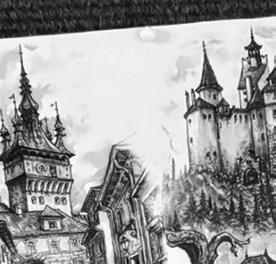
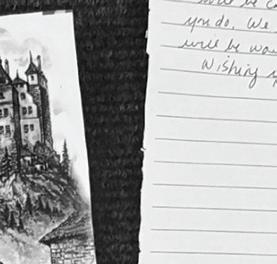


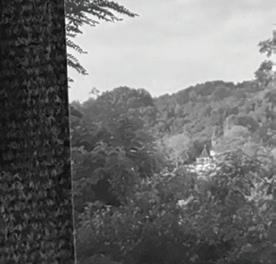




with neighbourhood cats and have hundreds of awkward introductory conversations. Invite people through your threshold, and let their newness populate your room with its new jokes and new accents, new stories and new smiles. And soon, that which is new will become home, and join the faces and places of your ever-crowding pinboard.
Photo by Sylvia Covaci
EMMA INGRAM-JOHNSON ReLiC Writer
The writing advice my cohort and I received from an honours English tutor early this Martinmas semester was to ‘write a letter to someone you love’, something she suggested would simultaneously improve our self-knowledge and writing abilities. To a class of eighteen, frankly reluctant students, these instructions were received doubtfully. Although many of us spend our days endlessly, laboriously writing, we are unaccustomed to the style, and substance, required by a love letter.
content, but also their style. To write a love letter inadvertently exposes the inner sanctum of the author’s mind, both in writing capability as well as feeling. When attempting to translate our affection or desires into intelligible language, we author the most accurate and poignant portrait of ourselves that we can offer.


not Troilus, of her unspoken machinations. More than a plot device, however, it is also the only time the reader hears Cressida’s voice unfiltered through either Chaucer or Troilus’ narration. Criticised and scrutinised by readers and critics in every version of this tale, Chaucer’s use of ‘love’ letter here suggests an unprecedented sympathy for the character and inadvertent unveiling of Cressida’s own role in this tragedy — Cressida’s fear and vulnerability lie buried only shallowly beneath the semantic layers of the letter.

Once a revered skill, formal letter writing has vanished from the daily lives of so many. Letters have codes, conditions, and specific syntactical formats; they are not only intricate in their







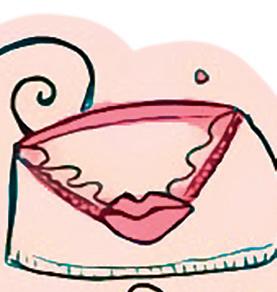










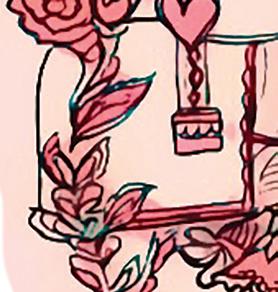
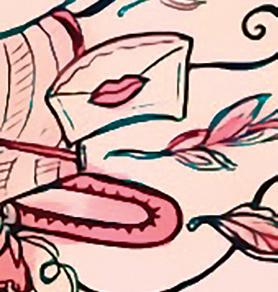
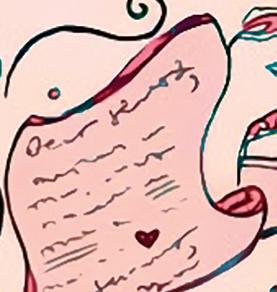
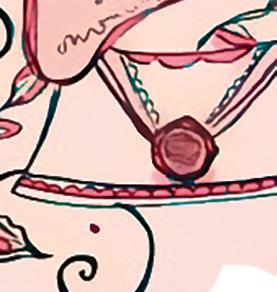

This can be traced backwards through a long literary tradition of letters embedded within prosaic and poetic fiction. As early as the fourteenth century, Geoffrey Chaucer exploits the epistolary form as a clever stylistic technique in his translation of the tragic love story of Troilus and Criseyde Cressida’s real feelings cannot be revealed in her letter to Troilus, whom she is about to betray, ‘for feere’ (tl: for fear) of discovery. This informs the reader, if

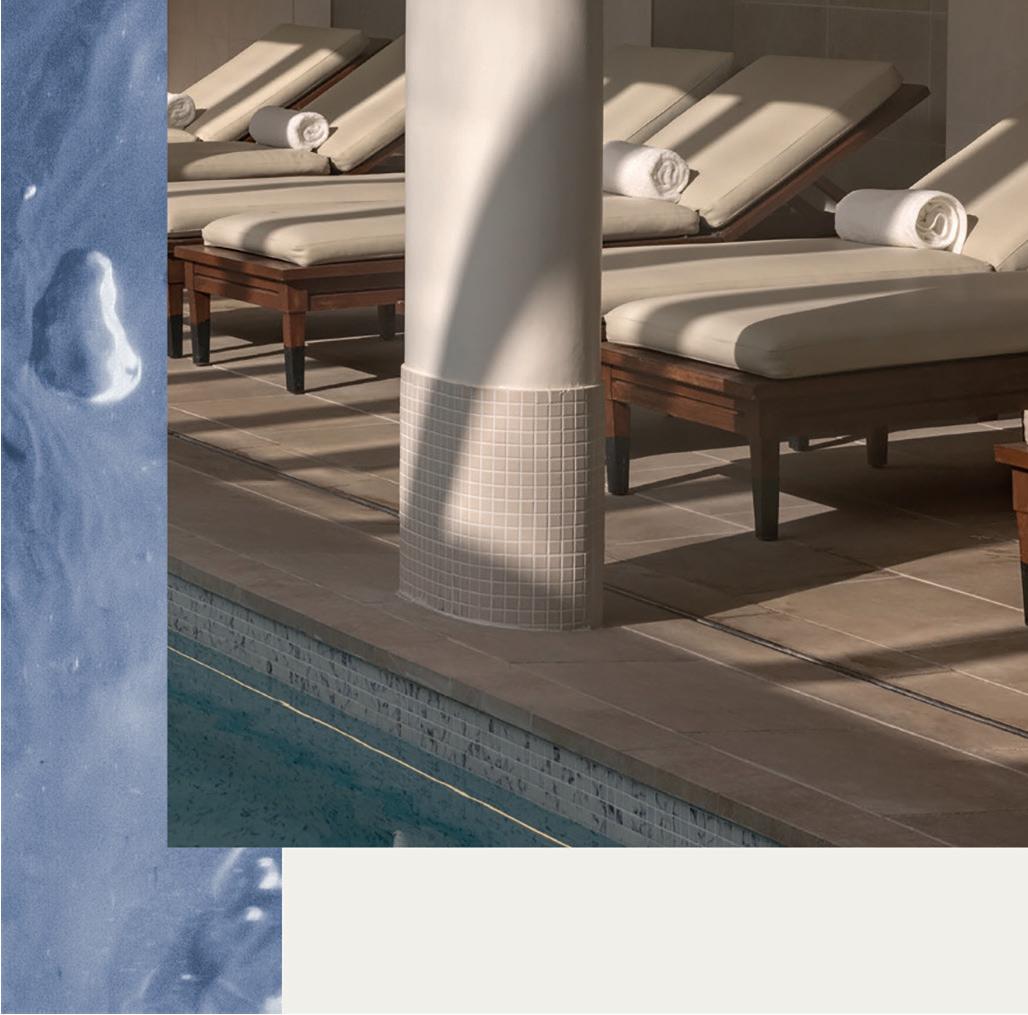





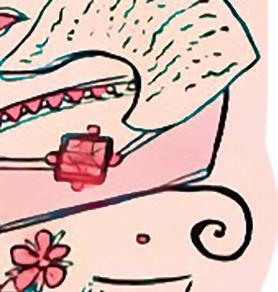







Four centuries later, in Jane Austen’s version of London society in Sense and Sensibility, letter writing directly (and wrongly) reflects tangible attachment. Willoughby and Marianne Dashwood’s exchange of hand-delivered notes can only have one interpretation by the other characters: that they are secretly engaged. When it is discovered that there is no engagement and that all but one of Marianne’s hopelessly romantic love letters to Willoughby remain unanswered, she is subject to ridicule and derision from those around her. Marianne’s ability to love without restraint or ‘check’ is delineated by Austen most powerfully in her tender letters. As is common in Austen’s depiction of sisterly affection, the letters become sites of shared reading between Marianne and her sister, Elinor, granting the elder understanding of Marianne’s behaviour and innocence in this affair. Not only can love letters reveal an autobiographical subtext, they also become vital character references
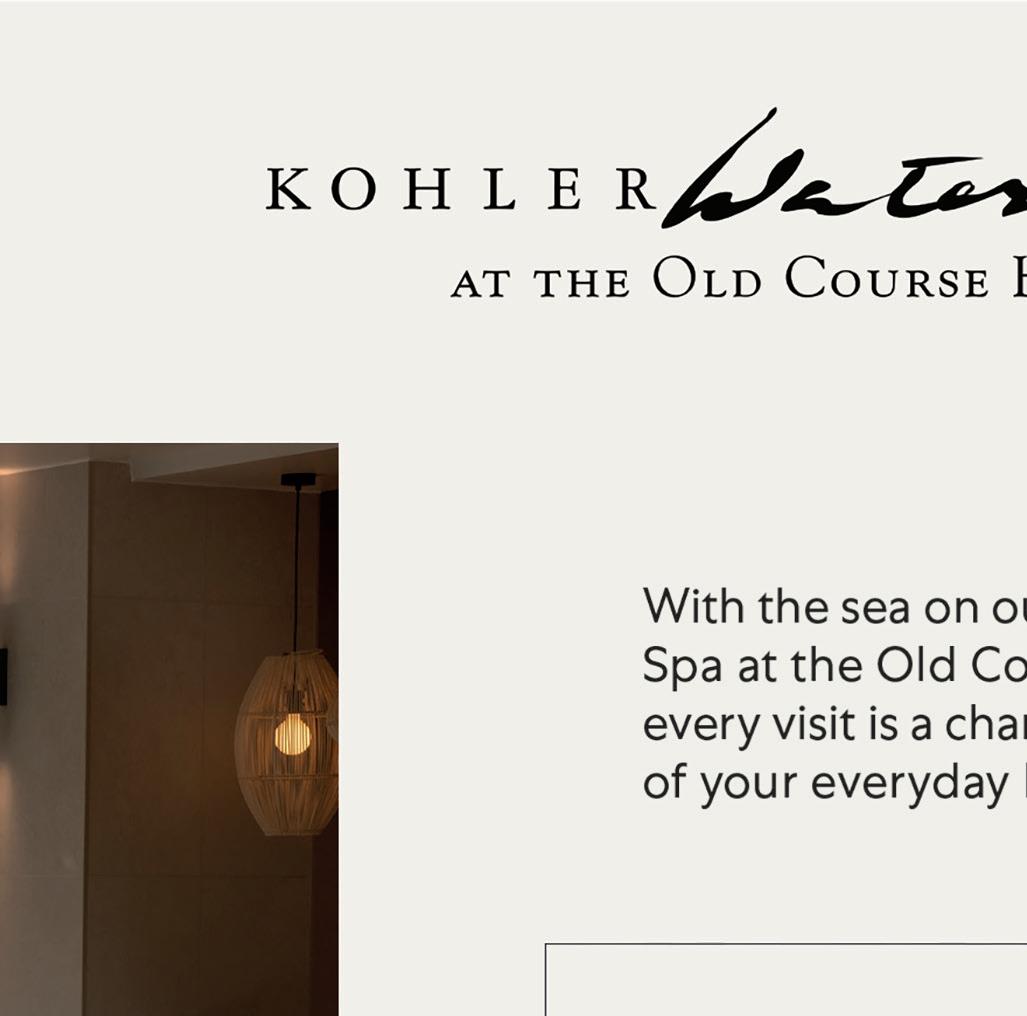

in an age of restricted emotional and marital liberty, such as the nineteenth century. More modern fictions and films that place importance on epistolary communication (Love, Rosie, Dear John, or You’ve Got Mail) all initiate romance from letter writing (electronic mail) rather than from physical consummation or interaction. These are considered highly unrealistic and romantic stories —immediate communication and interconnectedness in the modern age have removed the days or weeks of waiting between letters, and thus, rendered them useless. The delicate laments and confessions that litter these modern rom-coms are, just as Chaucer’s Cressida and Austen’s Marianne were, derided for their feminine sentiment and exaggerated imagery. Perhaps the quixotic nature of these love stories is what dissuades some students from love letters and open self-expression more generally. Writing about emotions exposes one’s fallibility in the face of rejection. However, writing can force what is within to surface, allowing the author to turn over and inspect their interior worlds in their own hands. Returning to the ways love letters have been used historically in literature, particularly for women, may rectify their reputation and teach women and girls to write letters, even just as an entryway to a plethora of other writing forms, for self-definition.
Illustration by Isabelle HolloWay
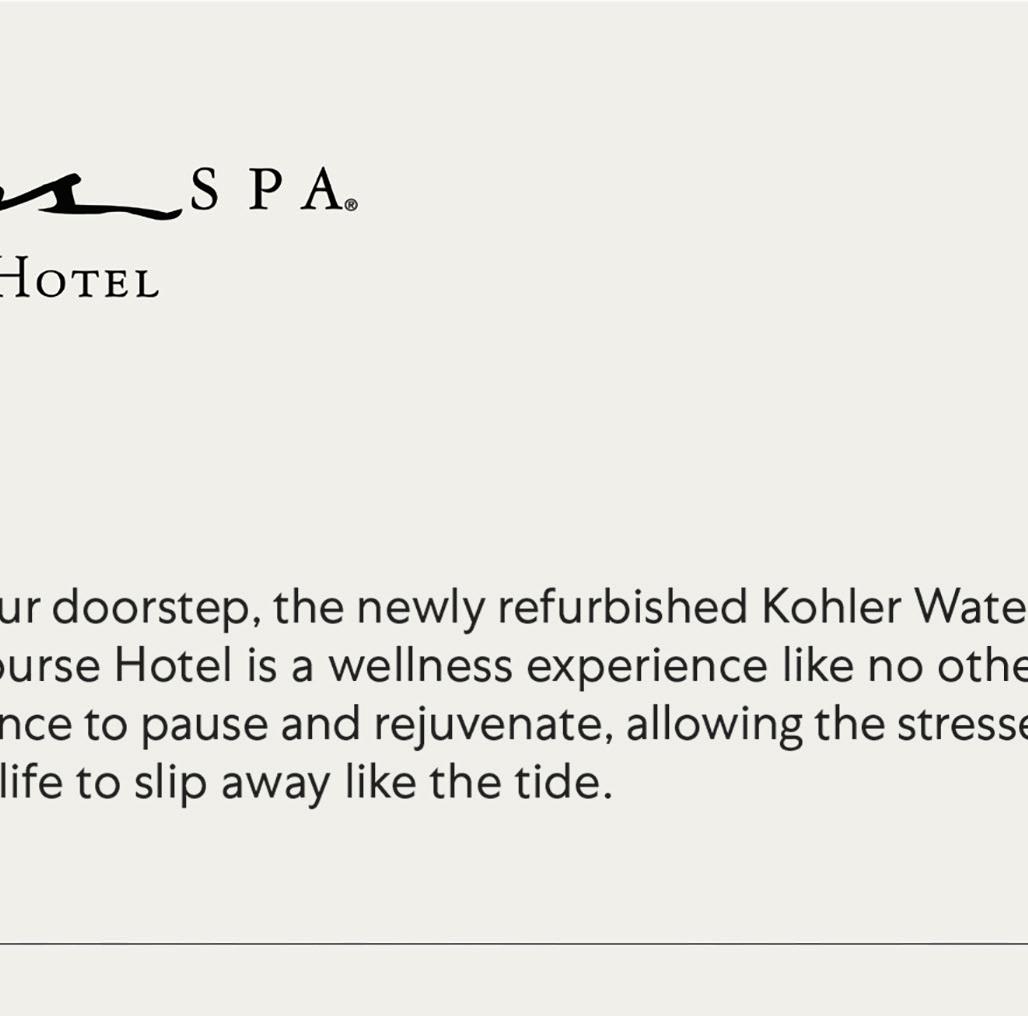



EDITOR: OLGA ALONSO BLANCO
“I saw you at Mass yesterday morning,” the Sallies dinner lady said to me with a smile, offering a kind of approval that I would usually only expect from my grandmother.
“Oh, yes — it was a bit loud, what with all the crying babies and everything,” I stammered, not quite brave enough to admit my historical agnosticism, having long since outgrown the edgy atheist phase of my early teens. “I went to the Student Mass as well; It was a little quieter.”
I’d been caught off-guard. I’d won over most of the hall catering staff over the past year, but the older ladies had always been immune to my charms. Yet here I was, suddenly in their good graces, and all it took was going to church.
I was raised by fairly irreligious parents and had, in my late teens, embraced my mother’s Jewish side displaying a sort of half-hearted, pick-and-choose cafeteria approach to Judaism — a devotion that evaporated whenever pork sausages and bacon appeared on the Sallies’ breakfast menu. When my parents asked me what exactly there was to do in St Andrews, I shrugged and quite honestly answered, “Golf, go to class, go to church?” Their surprise was understandable.
But really, there’s nothing else to do here. St Andrews mirrors a wider trend seen across the UK; while older generations are quietly exiting the pews, Gen-Z seems to be sneaking back in.
I noticed once I’d hopped between a few services — students weren’t just crammed into the 5pm Student Mass, they were spilling over into the 11am Family Mass, then back again for Sunday dinners and midweek talks. The only question is: Why?
At first, I thought it was pure boredom — that, and the Toastie Bar, a modernday Feeding of the 5,000 organised by the St Andrews Baptist Church, offering 50p toasties to students on Friday nights. While the Baptists have their own proselytization efforts, the Catholic community here offers a different temptation: a readymade social life. Suddenly, I found myself swimming amongst a sea of Catholics — in




Sallies, in town, and not just on Sundays. After first year, when you’re no longer living on top of all your friends in halls, maintaining those friendships becomes trickier. Mass solved that problem — it gave us a standing weekly appointment. No back and forth of frantic texts and missed meetings; simply, “See you at St James.” Church occupies an unorthodox position in St Andrews. Naturally, many attend for religious devotion and genuine spiritual connection, others for the meditative quiet, yet a large segment go primarily for the social side. Mass happens twice a day and acts as good a meeting point as Pret. An hour of shared devotion quite easily evolves into pub crawls, study sessions, or grabbing lunch together. The Catholic Society knows its market. Their weekly



Sunday dinners offer comfortable prices and are cleverly timed for students in catered halls who are left to fend for themselves on weekends. The fare is (usually) good — from smoky Texan brisket to chewy Icelandic Hangikjöt — the company likeminded, and the conversation decidedly more centered on gossip than divinity. In an age of declining ‘third spaces,’ the Catholic community fills a vacuum. For those unwilling to risk the venereal infections of Club 601, or those bored stiff of the many identical coffee shops in town, church becomes the best remaining option. When I told my parents I was considering converting out of boredom, I wasn’t entirely joking. And yes, the community is absurdly welcoming. Teas, coffees, and enough biscuits to wreck your macros for weeks are bestowed upon you the moment you linger too long at the end of Mass. Still, I wonder what poor Father Patrick makes of it all. He must often deal with a student congregation that are far more interested in gossiping and sneaking flirtatious glances at each other than his sermons. But maybe that’s the point. If Mass is the excuse that gets you through the door, it’s the community that keeps you coming back. The Lord may work in mysterious ways, but in St Andrews, He sometimes works through custard creams, the cute girl three pews ahead, and the sheer monotony of student life.


Plato With a Pint Glass An evening with Agora Witzend in Wonderland Craft House in review
AMELIA BEATTIE Events Writer
Amongst their many charms, a typical St Andrews pub bears two vital things: pints and patter. It’s a combination as divinely paired as East and West Sands.
MAYA DASILVA Events Writer
St Andrews slipped into Wonderland on Friday 26 September, when Craft House hosted Witzend, “a summer evening of art, music, and celebration.”
A Sprint Start for the Bubble St Andrews X Lululemon Launch
DELARGY Events Writer
If you have taken a turn in the St Andrews Shop this semester, you may have been surprised to find a Lululemon poster proudly displayed in red and white above the stock.
ALEX BARNARD Events Writer
One of St Andrews’ great merits is the weird and wonderful events it hosts. American tourists dismount their monster-truck tour buses, walking through to Lower College Lawn to hear about the Raisin foam fight. Later, perhaps, they’ll jaunt down to the beach, to imagine students Chariots-of-Fire-ing it into the sea amidst an epic sunrise on May Dip.


Yet amidst our hallowed quads and castle, a saucy yet mighty contender has in recent years risen from the ashes: Kink Bop — sorry, ‘Safeword’ Bop, which arguably sounds more, rather than less, suggestive. Freshers, who just last week were cringing over watching a Netflix sex scene with their parents, suddenly find themselves parading about 601 in handcuffs and cat ears.
recent Sallies committee elections, one prospective female sexual health officer claimed to be the real life Otis Milburn; her opponent, pretty audaciously, promised to tattoo the hall’s crest on her arse if she won. After the first week, many freshers will have heard of the Holy Trinity of locations to Marvin Gaye it up, even if nobody in town can agree on what they are.

against the Saint’s rigid formatting rules. Reader, you’ll have to settle for a selection of innuendos just passable enough that the seniors getting their copy at Union handout don’t spit out their Rector’s coffee.














It’s not exactly surprising. In the
WALT SCOTT Events Writer
Tuesday 23 September was BPM in Club 601, featuring KILIMANJARO, the London-born DJ of Zambian heritage. The music moved from classic rap songs to house to afro beats. Each transition was seamless, and the music was some of the best I had heard in St Andrews. Alongside good music, there was plenty of room to order a quick drink, use the bathroom, listen to yourself think, dance, or do a gymnastics routine. That is, if you were one of the twelve people there who thought it was a good idea to go to 601 a night early. Great event, wrong night. I thought this was a big shame. The event would pick up more into the wee hours of the night, as I decided it was time to get to bed.
Reece Harriot, the co-manager and creative director for BPM, clarified the












“Don’t miss out on this one-of-akind experience!”’, the Union website proclaims. The great thing is, nobody did. If you allow me one Rihanna moment, sticks and stones may break my bones, but goodness, does a £3 Union ticket excite me. What’s more, if duct taping your nether regions made you lose track of time, entry rose to just £6 after midnight.
“Sticks and stones may break my bones, but goodness, does a £3 Union ticket excite me.”



Safeword Bop is, for some, a dream: instead of being ambushed by security in the Main Bar disabled toilet with some hunky student, the Union explicitly encourages you to go forth and prosper (well, not quite, — one would hope you’re using protection). Apparently, “everyone is free to explore their fantasies and engage in the extraordinary,” which is probably the most scarily enabling thing I’ve ever read on the Union website. Originally I wanted to structure this article as a masterful parody of S&M (St Andrews style). This unfortunately goes
their



engage in the extraordinary,” which is
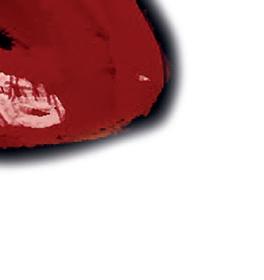
Upon initial entry, the wonderful wackiness usually confined to the murky depths of Confessdrews rose to the surface. In the line, I, along with many others, witnessed our first furry, who had been swarmed with so many photo requests that they’d only made it halfway down the road by the time I went in and came back out. However, many clubbers opted to wear typical going-out wear, rather than something truly ‘kinky’ — jock straps and collars were more of an anomaly than the go-to, which hasn’t been the case in previous years.
601 itself was busy beyond belief, with many attendees brandishing flashing VK light sticks. The energy put out by the audience was matched fantastically by
DJ Buckle, with invigorating remixes and mashups of songs from Busted’s ‘Year 3000’ to ‘Guess’ by Charli XCX and Billie Eilish. On the walls, as in past iterations of the event, the 601 screens projected such bizarre images as men in nappies. As well as these, the usual sexy teachers and the like made an appearance, all of which added to the humorous atmosphere. It’s surprising that Kink Bop isn’t marketed in a similar vein to Halloween, Winter Wonderland or St Patrick’s Day. Year after year, it creates palpable joy through a sense of sexual liberty, and hence it draws in huge crowds time and time again. The Union offers St Andrews, for one night only, its very own KitKat Club, which for a town with barely a club at all, is a real treat for the senses — sorry.
collective’s mission. One thing that stood out to me is that BPM fills a niche in St Andrews, a town highly saturated with student DJs, many of whom produce tracks which are completely void of any melody and seem to carry one beat for hours. BPM was different. It was songs you knew, weaved together with vibrant afro beats and house tracks, taking you on a journey.
Harriot, a Londoner who has worked with BPM for three years, believes that St Andrews severely lacks the hip-hop scene that BPM provides, something he misses from the nightlife in London. He wants to work with artists in St Andrews, Dundee, and surrounding areas in order to amend this: “We want to bring the songs you thought you only hear in your headphones to the stage.” BPM satisfies a craving people don’t yet know they have.
KILIMANJARO is best known for his genre-blending sets that move seamlessly between afro, amapiano, house, and global
club sounds. His musical foundation as a drummer gives his work a strong rhythmic core, which still drives the energy of his sets today. Starting out playing in bands across Scotland before turning towards electronic production, he has since built a reputation for pushing boundaries in the UK and beyond.
He founded KILIMANJARO MUSIC as a platform to amplify underrepresented voices in electronic music, particularly Black artists, women, and other marginalized groups. Aside from upcoming releases with major labels like Capitol and Universal, a highlight of his career includes a Boiler Room London performance — to which he was invited by Fred Again — which has racked up well over a million views on YouTube. His recent track ‘The Seeker’ captures his style perfectly: dark synth textures layered over Afro-centric percussion, balancing both weight and bounce. In 601, he was a relatively large fish in a puddle. In its six years of existence, BPM has had
a substantial impact on the nightlife culture within St Andrews. Harriot describes KILIMANJARO’s performance as a “full circle moment.” They had found an artist who “embodies their mission perfectly.” He is London-born, raised in Dundee, and has found success in blending music that is rarely played in Fife — a path similar to the one BPM is looking to carve out for itself.
It may not have instantly sold out 601 on a Tuesday night, but it did manage to fill a gap in the St Andrews music scene. KILIMANJARO brought a level of artistry that reminded me of just how narrow the town’s nightlife can feel, and how BPM’s mission to broaden those horizons is both ambitious and necessary. Their work is less about chasing crowds and more about reshaping tastes, which unfortunately takes time. However, if this event proved anything, it’s that BPM has the vision and the talent — now all they need is an audience willing to step outside the usual soundtrack.

EDITOR: MATTEO VERATELLI
HANNAN ANARJAWALLA
SCi-TeCh Writer
For all those daring mountaineers that adventure through the sprawling terrains of the Scottish Highlands, you could be steps away from spotting something truly out of this world.
At around 1am 3 July, a four-and-a-halfbillion-year-old meteorite blazed across the Scottish skies from the Isle of Lewis all the way down to Edinburgh. It eventually broke apart, scattering across a twenty-kilometre area in the Highlands, most notably near the Ben Alder plateau. It has been over a century since the last time a meteorite fragment was found in Scotland,thus making this event a once in a lifetime scientific opportunity.
Scientists from the UK Fireball Alliance, a national camera network that monitors meteorite activity, are urging trekkers on Scotland’s highest peaks to aid in recovering elements of this spectacular sliver from space. The Fireball Alliance plays a critical role in tracking and reconstructing the path of the meteorite across the country as it illuminated the early July summer skies.
Leading the expedition to locate the meteorites’ remaining fragments is
Professor Luke Daly at the University of Glasgow. His team trekked miles across the meteorite impact zone gathering specimens before stormy weather cut their mission short. Daly’s team identified the fragments as black, and shiny with a glassy surface, which can appear slightly rusty in the rain due to its high iron content.









LOGAN SIBBALD SCi-TeCh Writer
You would not be amiss for thinking that the ultimate feat in science had let its standards slip when, at first glance, you see Nobel Prizes have been awarded for analysing the bacteria found in spat-out gum and categorising modes of cat-tohuman communication. However, if you do a double-take at the headlines, you will notice that two letters — Ig — have been added at the beginning of the award name. Inevitably, you will come to understand that such articles are not referring to the prestigious, Swedish-founded set of accolades — rewarded for outstanding contributions to the fields of Physics, Chemistry, Medicine, Literature, Peace, or Economics — but to awards administered by the Annals of Improbable Research (AIR). These so-called Ig Nobel Prizes (the amusing result of a little wordplay with ignoble, meaning unworthy or shameful) are bestowed upon those presenting research
Critically, he urges trekkers not to touch fragments with their bare hands. Instead, wrap them in foil, photograph them, and log the GPS location to send to the UK Fireball Alliance team. This meticulous recovery plan ensures each fragment remains as uncontaminated as possible for retrieval and scientific analysis. However, left too long in the rugged terrains of the Highlands, these fragments risk weathering, compromising their scientific value. The race is on to find and preserve this precious meteor debris — and it’s a search we can all join.

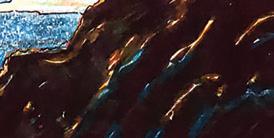
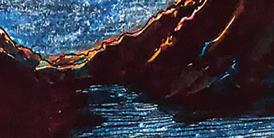
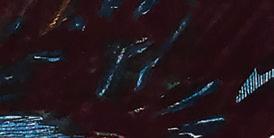




This immense cosmic pursuit is driven by meteorites offering a powerful snapshot into understanding the early history of our solar system. Most meteorites, which are estimated to be around four and a half billion years old, are remnants of shattered asteroids found in the belt located between Mars and Jupiter. The strong gravitational force of Jupiter and the Sun can pull asteroids from the belt and knock them from their orbit toward our planet. On entry, friction pressure and chemical reactions with gases in Earth’s atmosphere lead to the meteor heating up and releasing its energy, turning into a fireball. Studying meteorites gives scientists a critical lens into understanding the basic foundations of planetary and asteroid formations.
Research at Los Alamos National Laboratory in New Mexico studies rare carbon-rich chondrite meteorites, which have preserved the same composition from the solar system’s beginning stages. Furthermore, these meteorites retain calcium and aluminum-rich materials known as CAIs. These are some of the oldest known solids to have existed in our solar system, and preserve material correlating with the primordial nebula hypothesis, which can help scientists understand how our Sun and solar system were formed.
“This is a very exciting opportunity to learn more about where this rock came from and where it has been, and fill in a bit more of the jigsaw of our solar system’s history.” This statement by Professor Luke Daly encapsulates the importance of continuing to foster scientific quests to gain a greater understanding of our cosmic universe. This Highland meteorite discovery brings this quest a little closer to home. So, if you are bound for the Highlands, keep your eyes peeled and stay alert. Fragments from beyond our world can be lying right by your footsteps.
that will “at first make people laugh, then make them think,” with hopes of attracting greater public interest towards science.
This year, along with studies involving drunken bats and chewing Teflon, it was Tomoki Kojima and colleagues who were crowned the winners of the 2025 Biology Prize for their research paper (first published in 2019 in the scientific journal PLoS ONE) entitled: “Cows Painted with Zebra-Like Striping Can Avoid Biting Fly Attack.”
With such an objective, says-it-on-thetin title, it may be easy for readers to skim over — chuckling to themselves as they envision a nonplussed heifer dressing up for a savannah-themed costume party. Yet, as the AIR’s motto implores us, it is necessary to examine the unique insight and benefit ensconced within this at-first comical and sarcastic-sounding piece of research.
For those who do not know the children’s fable “How the Zebra Got Its Stripes,” it originated from the San people of Namibia, who told of an all-white zebra that — during a brawl with a baboon —
stumbled into a fire, coming out alive but singed, with soot-black stripes all over its body. Although we now know that it was not fire, but evolution that gave us the zebra, there are still multiple hypotheses as to why this unusual pattern emerged, including camouflage and thermoregulation.
One of the more intriguing theories, which has garnered a lot of supporting evidence, is that these black-and-white streaks enabled zebras to avoid biting attacks from flies. Indeed it has been demonstrated that biting flies (including stable, horn, and horse fly species) avoided landing on striped and spotted surfaces of a particular size. Researchers thus aimed to determine whether painting white zebra-style stripes on Japanese Black cattle reduced their chances of being bitten. They concluded that this pattern brought about a 50 per cent decrease in the number of fly-landings and that this correlated with fewer displays of irate, flyrepelling behaviour in the cattle. It may seem trivial, but this behaviour (which
may involve aggressive head throwing and hoof stomping) can induce unnecessary heat stress in cows, potentially resulting in hampered growth and impaired milk production. As such, limiting it as much as possible is crucial, not only for the health and welfare of the animal, but also for the wider agricultural and economic implications. Furthermore, as opposed to pesticides — which can be harmful for the environment and fragile ecosystems, with their prolonged use also contributing to increased pest resistance over time — painting may be a safer, more eco-friendly, and less time-consuming approach to controlling fly stress in cattle herds. All of this goes to show that science does not need to take itself too seriously. Yes, there have been massive advancements made in society through Curie’s work on radiation and Fleming’s discovery of penicillin, but surely there is a place for the quirkier — yet no less important — innovations as well?
BHANI KAUR SCi-TeCh Writer
Imagine boarding a spacecraft on Earth and waking up nine months later in orbit around Mars, feeling as refreshed as if you had just had the best night’s sleep of your life. This is not the stuff of science fiction movies anymore — it’s the cuttingedge reality that scientists are building right now, and it could revolutionise the way humans explore the cosmos.
The current reality of Mars travel is brutal. Nine months trapped in a metal tube hurtling through the deadly vacuum of space, with astronauts facing crushing isolation, mindnumbing boredom, and the constant terror of cosmic radiation slowly damaging their DNA. Their bones weaken, muscles atrophy, and their psychological state deteriorates in ways that could jeopardise entire missions.
But what if we could simply... skip all of that?
The secret lies in something doctors have been perfecting for decades: therapeutic hypothermia. During the most complex heart surgeries, medical teams cool patients’ bodies down to 18°C — a temperature so cold that their hearts can stop beating entirely. At these frigid temperatures, the human body enters a state where cells need barely any oxygen or nutrients to survive.
The science behind it is mind-blowing: when your body temperature drops, your
metabolism crashes by up to 90%. Your brain, normally a power-hungry organ consuming 20% of your body’s energy, becomes incredibly efficient. Your heart slows to a whisper. Your entire biological system shifts into an ultra-low-power mode that would make your smartphone jealous.
NASA and SpaceWorks Enterprises have taken this medical breakthrough and asked an audacious question: “What if we could keep astronauts in this state for months?” Their answer could transform everything we know about space exploration.
Picture this: astronauts in specially designed “sleep pods”, like something from a sci-fi thriller, but powered by real, proven science. These pods would carefully control body temperature, monitor vital signs, and maintain the delicate biological functions.
But here is where it gets truly fascinating; the European Space Agency recently discovered that hibernation might also protect astronauts from one of space travel’s deadliest threats — cosmic radiation. Every second of the journey to Mars, high-energy particles from dying stars slam into the spacecraft, potentially causing cancer and genetic damage.
Scientists believe that hibernating bodies activate powerful cellular repair mechanisms that could fix this radiation damage faster than it accumulates. It’s like having a builtin shield made from your own biology.
The proof of concept is already working.
Researchers have successfully hibernated pigs — animals that don’t naturally hibernate — cooling them down for hours and warming them back up with no apparent harm. These are not animals that evolved to sleep through winter; they are mammals just like us, proving that hibernation can be artificially triggered in species that never developed the ability naturally.

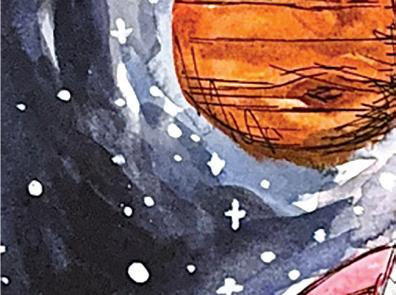
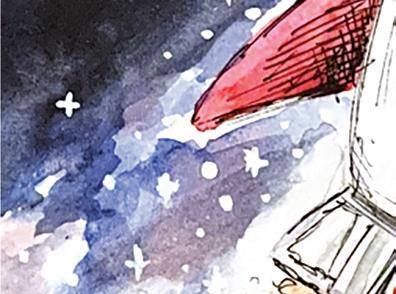
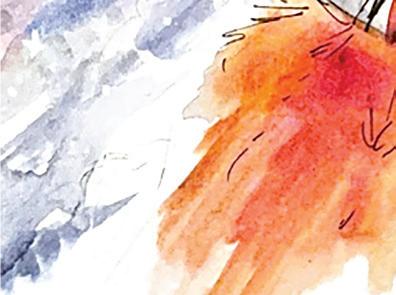
The next crucial step? Primates. If scientists were to safely hibernate our closest evolutionary relatives for extended periods, it could be a matter of a decade before human trials could begin.
The roadmap is breathtakingly ambitious: short human hibernation trials lasting weeks could happen within ten to fifteen years. If successful, the 2050s could see the first hibernation-enabled Mars missions launching from Earth.

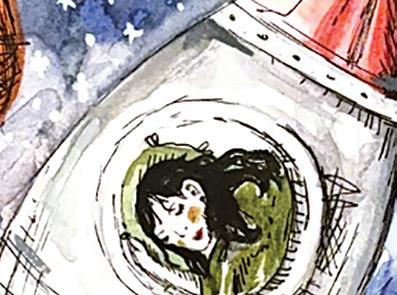
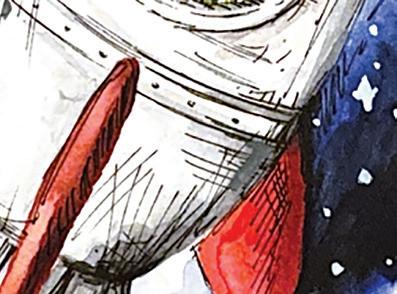




Imagine the possibilities: missions to Jupiter’s moons, or even asteroid mining expeditions — all made possible because we learned to sleep our way across the solar system. The longest part of your journey to Mars might soon be the taxi ride to the launch pad.
by Clemmie SWiffen
ORLA ROSTOM SCi-TeCh Writer
At 8pm the uni gym hums like a quiet club. Racks are full, music leaks from headphones and medical students complete their Anki flashcards on the stairmaster. You bump into characters from the past and future - sports captains, Freshers’ Week acquaintances, the flatmate who used to close the Union bar. This is not a one-off. For many students, late nights now mean deadlifts and meal prep rather than last orders.
As the semester starts it is the perfect time to reflect on our habits and start afresh for the new academic year. The ‘university lifestyle’ has been redefined, as old stereotypes of eating poorly and late-night study sessions fuelled by caffeine now feel dated. The stereotype of chaotic, booze-first student life is giving way to a broader wellness culture, which brings benefits as well as pressures. For years, students have been perceived as careless regarding their health. In 2002, the National Union of Students launched its
sensible drinking campaign, adopting the slogan “If you do drink, don’t do drunk”. This was mocked, with one Guardian article stating that although young people cannot navigate their way around Soho or sound officious on the telephone, they are brilliant at drinking. This mirrors the common viewpoint at the time: that your student years are one of the few in your life where you have minimal responsibilities and the consequences of your mistakes are relatively insignificant. Why not maximise these whilst you have the chance?
At a time where university tuition fees were free for all, this carefree attitude may have been easier to adopt. The Student Loans Company forecasts average debts of £53,000 for English undergraduates starting in 2024/25, and £17,000 for Scottish students with free tuition. Combined with rising cost of living and a competitive graduate job market, the pressure on young people to use their time at university to improve their CVs has increased. Many students cannot afford to spend money
on overpriced drinks and club entry, and cannot afford time wasted hungover or tired. Personal safety is a growing concern, with a survey by the Alcohol Education Trust reporting that more than one in ten students have been victims of spiking.
“As with everything in life, balance is important.”
In the age of the internet we have constant access to a stream of reliable health information. Increased health advertising and research into the negative impacts of drinking and smoking have caused a change in habits. Many students who enjoy the diverse nightlife St Andrews has to offer do so whilst sober. Social media has provided spaces for communities of likeminded young people prioritising their health and fitness, creating room for everyone to find their crowd. Students describe steadier moods, clearer
focus and safer nights. A national survey in 2023 found young adults were the least likely age group to exceed weekly alcohol limits, reflecting a broader cultural shift. There are abundant opportunities beyond the classic drinking culture, with most longterm friendships formed outside of this. But wellness can carry pressure. Constant tracking and comparison can make rest feel guilty. Students today face pressures intensified by phones in every pocket. The idea that young people must optimize their looks, bodies, or health is abundant on social media, leaving little space for genuine relaxation. Student life has not traded fun for virtue. It has traded defaults for options. Some nights will still end at 601, others will end with lights out by eleven. As with everything in life, balance is important. Whether you are up early for Bubble run club on a Friday morning or walking back from afters as the sun rises, acknowledging and prioritising your own needs is essential to thrive both academically and socially.
ELODIE COWAN
Sport Writer

EDITOR: BEN BAGLEY
At 2pm on 20 September at the Hive Stadium in Edinburgh, the St Andrews fans’ rendition of ‘When the Saints Go Marching In’ died down, and the noise drop — for a split second — to a simmer.
The Varsity is the oldest Scottish university rivalry — St Andrews and Edinburgh playing it out for the bragging rights.
Even before the whistle, the University of Edinburgh students were already in good voice. Chants such as “We’ve got an airport” and “You’re just a golf course” were directed towards the St Andrews faithful, the irony being that the ‘just a golf course’ lot were defending champions.
After a slow start, the Saints trailed 11-3 at the half-hour mark, struggling to find rhythm. Then came a flash of hope: Jamie Thomson bursting through with a surging run, slipping an early offload to Thomas Russell, who swung it wide to number 14, Matt Grant, finishing with aplomb.
The Saints’ end erupted, certain the try would stand. The referee let the play roll long enough to fuel the celebrations before dragging it back for a forward pass.
Grant had been the target of Edinburgh’s favourite chant — “14’s a w*****” — and for a moment it seemed like he’d silenced them. Once the call came, the jeers returned even louder.
With Howie Offord as composed as ever from the tee, the Saints were suddenly in the driving seat, 13–11 ahead.
Momentum gathered. Even a yellow card for number 12, Townsend, couldn’t deflate the side — he returned with intent, finishing wide minutes later. Offord, clinical again: 20–11 Saints.
By now, the green-end choruses about airports and golf courses were
21 Saints with eight minutes to play.
Then the gut punch.
In the 78th minute, after being held on the line, Edinburgh finally found a way. Try — 26-23 Edinburgh.
Edinburgh number 10 Jamie Cain stepped up to put the game to bed. The kick drifts wide. Hope prevails for the Saints. 26-23 in the 79th minute and a JonnyWilkinson-esque miracle still glimmers
After the game, skipper James Murray admitted that the defeat stung, but his eyes were already on the future, he told The Saint.
“We only had one opportunity to win Varsity this year, so it will sting for a long time. All credit to Edinburgh. Maybe one of the most riveting Varsity games yet. Thank you to everyone involved and to the 6,000 supporters!”
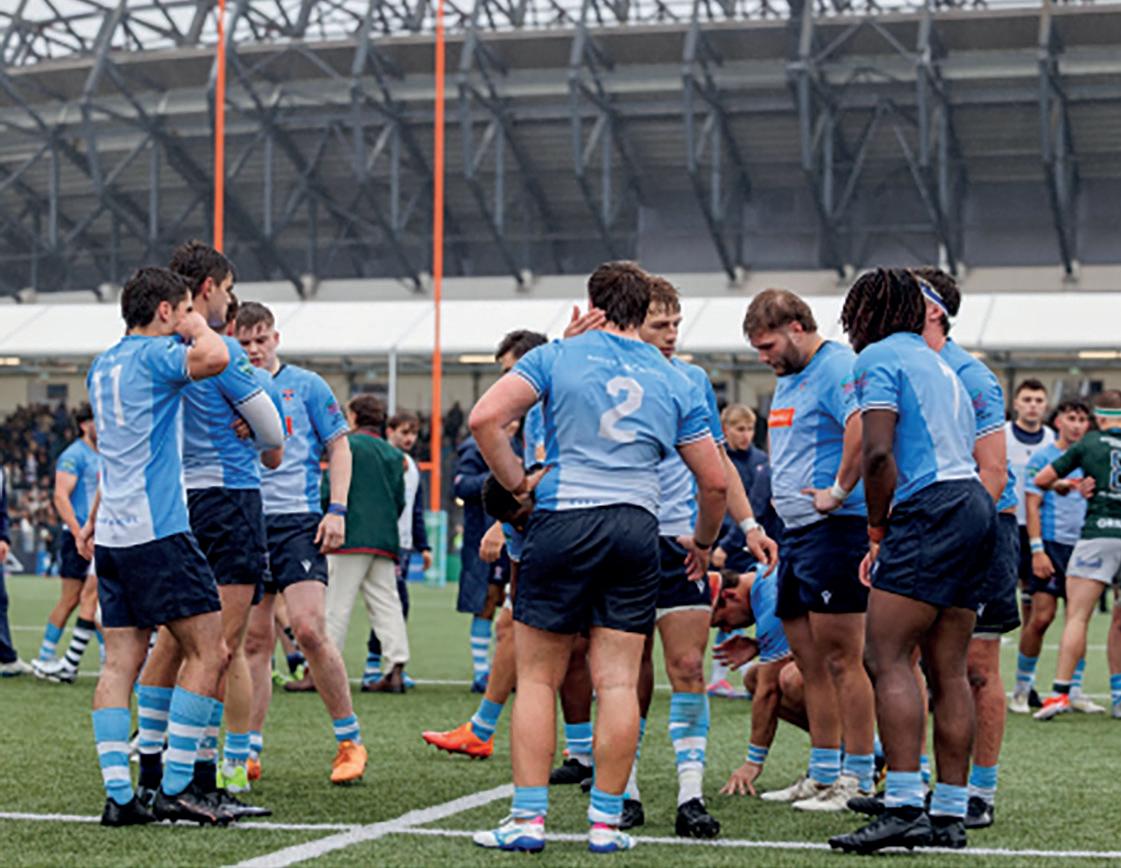
Just before the half-time break, fresher fly-half Howie Offord calmly slotted a penalty, trimming the deficit. The Saints went into the break 11-6 down and with plenty to dissect in the changing room.
After a short interlude, the students returned to the stand, armed with two pints of over-priced Tennents, and play resumed.
Whatever was said in the Saints’ changing room clearly landed. Six minutes into the second half, they were camped on the Edinburgh try line, Michael Onohayedo finally smashing through.
drowned out by chants of “Let’s go Saints.”
But Edinburgh didn’t roll over.
Hooker Freddie Deeks burrowed over at 58 minutes, and when Offord’s former schoolmate Jamie Cain finally nailed a conversion, the score narrowed to 20–18.
It turned in a heartbeat: skipper James Murray made a brilliant intercept which fell to a green shirt. A later penalty then nudged Edinburgh 21-20 ahead.
The Saints still with momentum, ice-cold Offord answered with yet another successful penalty kick — 23-
— until the 80th, when a green scrum clicks and the ball is belted into the stands.
With the Edinburgh team running over into a celebratory huddle, and Saints’ skipper, Murray, emotionally embracing his teammates, the game was gone.
The Saints’ dreams crushed, Edinburgh ecstatic.
The team took a moment to gather their thoughts, then came over to the spectators in the stands. Alumni, parents, and friends made sure the Saints knew they had done them proud.
“I was gutted — we felt the weight of the University on our shoulders. It takes more than fifteen players to win, and we received that support. When I saw the distraught look in my teammates’ eyes, I realised this was a moment to show what Saints Rugby is all about: connection, discipline, and a legacy. I couldn’t be prouder.”
“We’ve already watched the game back three times. There are clear work-ons. Our story is still being written — and if you’re reading this, it’s your story too.”
The Varsity sting is real, but so is the sense that the Saints are using this to level up and are only getting stronger.
Varsity isn’t the end; it’s the launch. The clinical fresher in number 10, Howie Offord, played the full eighty, flawless from the first whistle. Around him: game-smart Scottish internationals, the presence of recruited postgrads, and many of the team from last year who know what it takes to be on the winning side.
As the echoes of last season’s success linger, the Saints will use this loss as fuel for their National Trophy push and BUCS Premier North 2 campaign.
With fresher talent, new recruits, and a skipper who dares his team to dream, the Saints have all the tools.
With that in mind, I have a funny feeling that come season’s end, St Andrews will be considered much more than just a golf course.
Photo by Stephan LaW
ANNE-CARTER RIGGS Sport Writer
At St Andrews, there are sports clubs for every interest under the sun, each with dedicated members at the helm who work hard to keep things running.
Despite their jam-packed timetables, many students still make time for gym sessions, weekly training, and matches. For many, sport has become such an ingrained part of their lives that it would feel wrong not to carry on, no matter how many deadlines are looming
In deciding which of the university’s fifty sports clubs to delve into first, the cricket club feels like a fitting choice as it’s one of the fastest-growing sports in the world right now.
The cricket season begins in spring, but as the warm weather fades, so too does outdoor play. During the winter months, the club switches from outdoor to indoor. The training is less of a commitment, but it actually seems to strengthen the men’s and women’s sides, as it gives players the flexibility to explore other sports.
“We’ve got people playing volleyball, rugby, hockey, lacrosse, and being really committed to both sports. It makes it an interesting club and helps you know people from all across the university,” says Lydia, the current club secretary and member for four years.
This season, the women’s team fought hard in the varsity against Edinburgh. Despite losing in
the final over, the Saints show promise, and Lydia sees the defeat as a sign of growth: “It shows how strong the women’s side has become. I’m really excited for next season; we can build from here.”
Despite a disappointing season, the men’s team were honoured with an invitation to play against the prestigious Cambridge University Cricket Club.
Men’s club member, Jean van der Spuy, emphasised that results aren’t everything when it comes to cricket.
“The most you can contribute is twenty per cent of the balls, eighty per cent of the time,” the second year emphasised. “Most of the time, it’s about the game within the game. How can you put pressure on the batsman and get in their head?”
The collective effort to maintain the spirit and camaraderie shines brightest in the highlight of the season. The club’s annual match against the Ship Inn, the only cricket club in the world to play their home matches on the beach.
Hosted in Elie, a coastal town forty minutes away, the St Andrews alumni team play against the pub team in a game of beach cricket every spring.
“It’s probably the best thing about cricket in Scotland,” Jean says. “Food, drinks, cricket, and great company, the club looks forward to the tradition every year.”
The season may be ending, but there is no doubt the cricket club is already counting down to spring on the Fife coast.
MAY-LING TURNER Sport Writer
As kids, many of us are dragged reluctantly to training sessions. Over time, however, many fall in love with the sport they initially dreaded. For Hector Revill, that sport was running. What began with regular Parkruns has now grown into an ambitious goal: completing the 2025 Frankfurt Marathon — his second — in under two and a half hours.
Last year in Frankfurt, Hector finished third in the Under-23 category, completing the marathon in 02:35:00 and thereby qualifying for the 2025 London Marathon.
“When I watched Mo Farah win the 10,000m at the 2023 Olympics, it inspired me to start setting goals,” Hector told The Saint. “I run because I love a challenge, and my goal is to always beat my previous times.”
On the morning of one of London’s hottest marathons on record, Hector felt part of something bigger, running shoulder-to-shoulder with thousands of others.
“The crowds in London were something else. The adrenaline you get from them is unreal. Three rows deep of people the whole way through.”
That energy can be dangerous; it is, after all, a marathon and not a sprint. Success is about pacing, preserving energy for the last stretch of the race.
Less than 1% of people will complete a marathon
in their lifetime; they are the ultimate test of physical endurance and mental focus. For student athletes like Hector, balancing a degree with training requires immense dedication and organisation. He recommends a twelve-to-sixteen-week training plan for those considering running a marathon.
Twice a week, he does interval sessions, combining high-intensity running with low-intensity recovery to boost his speed and endurance. Four days are “easy run days,” often starting with an early 14km run before hitting the library. The remainder of the week is for his “session days” that stretch even further.
“In marathon training, you always have one long run a week. You increase the distances gradually, so your body can get used to it. This distance can go up to around 35km,” he explains.
Hector takes inspiration from the American marathon runner Clayton Young.
“What I love about Clayton is that he’s so dedicated to everything he does. He’s a Christian, so he doesn’t run on Sundays, and he can still fit in 200km of running per week,” Hector says. “He’s also very scientific, like myself. I make all of my own training plans because I know myself best.”
This reading week, the economics student will leave his textbooks behind for the week and lace up for the Frankfurt Marathon with one goal in mind.
BEN BAGLEY Sport Editor
The Saints Sunday League is back, and it’s live! Well, almost. The Saint will keep you up-to-date throughout the season with results, league tables, and exclusive interviews. Sport writers and Sunday League stalwarts Gregor Murray (Paqueta Crisps) and Patrick Maitland (BLFC) are our men on the ground and will be providing us with behind-the-scenes coverage.
For those unfamiliar, the Sunday League is the University’s answer to Serie A. Seasoned student athletes withstand early wake-ups and devastating hangovers, battling it out for the three points on the hallowed university astroturf.
The competition is split into two divisions. Come the end of season, the champion is decided in a play-off between the top two in Division 1. Relegation and promotion ensure that competition remains fiercely competitive right to the last.
Last season’s champions, Wardlaw Wanderers, have since graduated, leaving a power vacuum in the upper echelons of Division 1. Botswana Meat Commission and Paqueta Crisps are touted as the favourites to capitalise, but Strokers and last year’s runners-up, Beavers, have made impressive starts.
As Scotsman and former Liverpool manager Bill Shankly once said, presumably referring to the Sunday League: “Some people think football is a matter of life and death. I can assure them it is much more serious than that.”
You can find Patrick Maitland’s full Sunday League preview on The Saint website.



